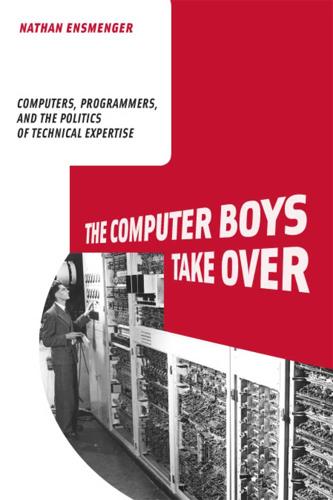
The Computer Boys Take Over: Computers, Programmers, and the Politics of Technical Expertise
by
Nathan L. Ensmenger
Published 31 Jul 2010
Swearingen Papers, 1936–1993,” Box 1, Folder 3, Archives of the Charles Babbage Institute, University of Minnesota, Minneapolis. 86. Charles Babbage Institute Archives, box 88, folder 18, file 28. 87. “Correspondence re: Improper Use of CDP Initials,” (1966), CBI 88, “Data Processing Management Association records,” Box 18, Folder 22, Archives of the Charles Babbage Institute, University of Minnesota, Minneapolis. 88. “Correspondence re: Academic and Experience Req’s,” (1966), CBI 88, “Data Processing Management Association records,” Box 18, Folder 22, Archives of the Charles Babbage Institute, University of Minnesota, Minneapolis. 89.
…
(1974), CBI 23, “George Glaser Papers, 1960–1989,” Box 1, Folder 3, Archives of the Charles Babbage Institute, University of Minnesota, Minneapolis. 44. Ibid. 45. Ibid. 46. “Six Measures of Professionalism,” (1962), CBI 88, “Data Processing Management Association records,” Box 21, Folder 40, Archives of the Charles Babbage Institute, University of Minnesota, Minneapolis. 47. “Local Chapter CDP Publicity,” (1964), CBI 46, “John K. Swearingen Papers, 1936–1993,” Box 1, Folder 17, Archives of the Charles Babbage Institute, University of Minnesota, Minneapolis. 48. “Letter Re: Four Year Degree Requirement,” (1970), CBI 116, “Institute for Certification of Computer Professionals Records, 1960–1993,” Box 1, Folder 27, Archives of the Charles Babbage Institute, University of Minnesota, Minneapolis; R.
…
“Letter Re: Four Year Degree Requirement,” (1970), CBI 116, “Institute for Certification of Computer Professionals Records, 1960–1993,” Box 1, Folder 27, Archives of the Charles Babbage Institute, University of Minnesota, Minneapolis; R. Higgins, “Letter to the DPMA” (1973) CBI 46, “John K. Swearingen Papers, 1936–1993,” Box 1, Folder 17, Archives of the Charles Babbage Institute, University of Minnesota, Minneapolis. 49. J. D. Madden, “Letter to Calvin Elliot,” (June 27, 1967), CBI 88, “Data Processing Management Association records,” Box 22, Folder 1, Archives of the Charles Babbage Institute, University of Minnesota, Minneapolis. 50. “Notes on ACM/DPMA merger” (1964), CBI 88, “Data Processing Management Association records,” Box 22, Folder 2, Archives of the Charles Babbage Institute, University of Minnesota, Minneapolis; “Correspondence re: ACM/DPMA liason,” (1966), CBI 88, “Data Processing Management Association records,” Box 22, Folder 1, Archives of the Charles Babbage Institute, University of Minnesota, Minneapolis; “Discussion of DPMA/ACM Merger,” (1970), CBI 88, “Data Processing Management Association records,” Box 22, Folder 3, Archives of the Charles Babbage Institute, University of Minnesota, Minneapolis. 51.
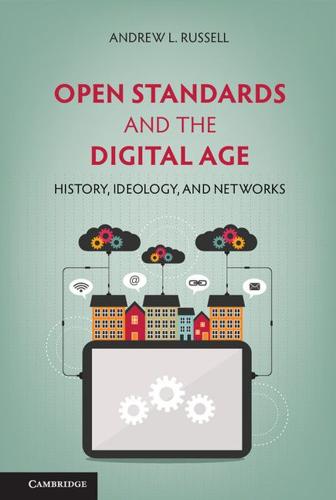
Open Standards and the Digital Age: History, Ideology, and Networks (Cambridge Studies in the Emergence of Global Enterprise)
by
Andrew L. Russell
Published 27 Apr 2014
Two out of three from Tokyo abstained, with one in favor; the BBN vote split evenly, with two in favor and two against. 76 Cerf, INWG 102; “Result of Vote on End-to-End Protocol,” March 1976, INWG 109. 77 McKenzie, “INWG and the Conception of the Internet,” 70; Derek Barber, “INWG Affairs,” March 1976, INWG 111, McKenzie Collection; Louis Pouzin, “TC 6 Contributions to ISO,” June 15, 1976, INWG 122, McKenzie Collection; Pelkey, “Entrepreneurial Capitalism and Innovation,” chapter 6. 78 Vinton Cerf, oral history interview by Judy O’Neill, April 24, 1990, Reston, Virginia. Charles Babbage Institute, University of Minnesota, Minneapolis. 79 Cerf interview, Charles Babbage Institute, 1990. 80 Cerf interview, Charles Babbage Institute, 1990. 81 Vint Cerf, “Report on TC-6 Meeting in Sao Paulo, October 1975,” December 1, 1975, INWG 103, McKenzie Collection; Louis Pouzin, “Chairmanship of WG 6.1,” March 16, 1976, INWG 110, McKenzie Collection. 82 Michel Gien, oral history interview by Andrew L. Russell, April 3, 2012, Paris, France. Charles Babbage Institute, University of Minnesota, Minneapolis; McKenzie, “INWG and the Conception of the Internet,” 70. 83 Pouzin, INWG 106. 84 Pouzin, “The Network Business – Monopolies and Entrepreneurs.” 85 Dépres interview, Charles Babbage Institute; John Day, interview with James Pelkey, July 11, 1988, Canton, Massachusetts, courtesy of James Pelkey; Najah Naffah, oral history interview by Andrew L.
…
Oral history interview by Judy E. O’Neill, March 5, 1990, Menlo Park, California. Charles Babbage Institute, University of Minnesota, Minneapolis. Cerf, Vinton. Oral history interview by Judy E. O’Neill, April 24, 1990, Reston, Virginia. Charles Babbage Institute, University of Minnesota, Minneapolis. Crocker, Steve. Oral history interview by Judy E. O’Neill, October 24, 1991, Glenwood, Maryland. Charles Babbage Institute, University of Minnesota, Minneapolis. Danthine, Andre. Oral history interview by Andrew L. Russell, April 6, 2012, Liege, Belgium. Charles Babbage Institute, University of Minnesota, Minneapolis. Day, John.
…
Oral history interview by Valérie Schafer, May 16, 2012, Paris, France. Charles Babbage Institute, University of Minnesota, Minneapolis. Gien, Michel. Oral history interview by Andrew L. Russell, April 3, 2012, Paris, France. Charles Babbage Institute, University of Minnesota, Minneapolis. Grangé, Jean-Louis. Oral history interview by Andrew L. Russell, April 3, 2012, Paris, France. Charles Babbage Institute, University of Minnesota, Minneapolis. Kahn, Robert. Oral history interview by Judy E. O’Neill, April 24, 1990, Reston, Virginia. Charles Babbage Institute, University of Minnesota, Minneapolis. Le Lann, Gérard.
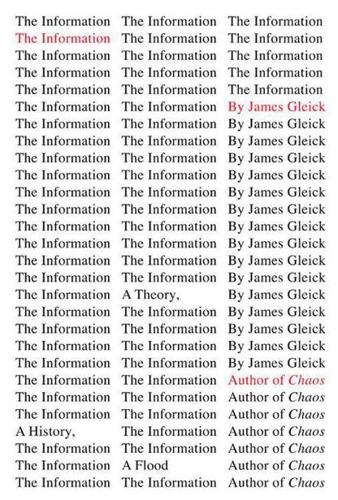
The Information: A History, a Theory, a Flood
by
James Gleick
Published 1 Mar 2011
♦ “ONE OF THE MOST FASCINATING OF ARTS”: Charles Babbage, Passages from the Life of a Philosopher, 235. ♦ “EVERY SHOWER THAT FALLS”: “On the Age of Strata, as Inferred from the Rings of Trees Embedded in Them,” from Charles Babbage, The Ninth Bridgewater Treatise: A Fragment (London: John Murray, 1837), in Charles Babbage and His Calculating Engines, 368. ♦ “ADMITTING IT TO BE POSSIBLE BETWEEN LONDON AND LIVERPOOL”: Charles Babbage, On the Economy of Machinery, 10. ♦ “ENCLOSED IN SMALL CYLINDERS ALONG WIRES”: Charles Babbage, Passages from the Life of a Philosopher, 447. ♦ “A COACH AND APPARATUS”: Charles Babbage, On the Economy of Machinery, 273
…
♦ “BY THE APPARENT IMPOSSIBILITY OF ARRANGING SIGNS”: Charles Babbage, Passages from the Life of a Philosopher, 25. ♦ “THE DOT-AGE OF THE UNIVERSITY”: Charles Babbage and His Calculating Engines, 25. ♦ “WE HAVE NOW TO RE-IMPORT THE EXOTIC”: Charles Babbage, Memoirs of the Analytical Society, preface (1813), in Anthony Hyman, ed., Science and Reform: Selected Works of Charles Babbage (Cambridge: Cambridge University Press, 1989), 15–16. ♦ “THE BROWS OF MANY A CAMBRIDGE MODERATOR”: Agnes M. Clerke, The Herschels and Modern Astronomy (New York: Macmillan, 1895), 144. ♦ “EVERY MEMBER SHALL COMMUNICATE HIS ADDRESS”: Charles Babbage, Passages from the Life of a Philosopher, 34
…
♦ “IT IS WITH NO INCONSIDERABLE DEGREE OF RELUCTANCE”: David Brewster to Charles Babbage, 3 July 1821, quoted in J. M. Dubbey, The Mathematical Work of Charles Babbage (Cambridge: Cambridge University Press, 1978), 94. ♦ “LOGARITHMIC TABLES AS CHEAP AS POTATOES”: Babbage to John Herschel, 27 June 1823, quoted in Anthony Hyman, Charles Babbage, 53. ♦ “PROPOSITION TO REDUCE ARITHMETIC TO THE DOMINION OF MECHANISM”: Dionysius Lardner, “Babbage’s Calculating Engines,” 264. ♦ “THE QUESTION IS SET TO THE INSTRUMENT”: “Address of Presenting the Gold Medal of the Astronomical Society to Charles Babbage,” in Charles Babbage and His Calculating Engines, 219

The Innovators: How a Group of Inventors, Hackers, Geniuses and Geeks Created the Digital Revolution
by
Walter Isaacson
Published 6 Oct 2014
All quotes from Menabrea and Lovelace’s notes are from Menabrea, “Sketch of the Analytical Engine.” 38. Charles Babbage to Ada, 1843, in Toole, Ada, the Enchantress of Numbers, 197. 39. Spoken in the film Ada Byron Lovelace: To Dream Tomorrow, directed and produced by John Füegi and Jo Francis (Flare Productions, 2003); also, Füegi and Francis, “Lovelace & Babbage.” 40. Ada to Charles Babbage, July 5, 1843. 41. Ada to Charles Babbage, July 2, 1843. 42. Ada to Charles Babbage, Aug. 6, 1843; Woolley, The Bride of Science, 278; Stein, Ada, 114. 43. Ada to Lady Byron, Aug. 8, 1843. 44. Ada to Charles Babbage, Aug. 14, 1843. 45. Ada to Charles Babbage, Aug. 14, 1843. 46. Ada to Charles Babbage, Aug. 14, 1843. 47.
…
Catherine Turney, Byron’s Daughter: A Biography of Elizabeth Medora Leigh (Readers Union, 1975), 160. 21. Velma Huskey and Harry Huskey, “Lady Lovelace and Charles Babbage,” IEEE Annals of the History of Computing, Oct.–Dec. 1980. 22. Ada to Charles Babbage, Nov. 1839. 23. Ada to Charles Babbage, July 30, 1843. 24. Ada to Lady Byron, Jan. 11, 1841. 25. Toole, Ada, the Enchantress of Numbers, 136. 26. Ada to Lady Byron, Feb. 6, 1841; Stein, Ada, 87. 27. Stein, Ada, 38. 28. Harry Wilmot Buxton and Anthony Hyman, Memoir of the Life and Labours of the Late Charles Babbage (ca. 1872; reprinted by Charles Babbage Institute/MIT Press, 1988), 46. 29. Martin Campbell Kelly and William Aspray, Computer: A History of the Information Machine (Westview, 2009), 6. 30.
…
Swade, The Difference Engine, 42; Bernstein, The Analytical Engine, 46 and passim. 31. James Essinger, Jacquard’s Web (Oxford, 2004), 23. 32. Ada to Charles Babbage, Feb. 16, 1840. 33. Ada to Charles Babbage, Jan. 12, 1841. 34. Charles Babbage, Passages from the Life of a Philosopher (Longman Green, 1864), 136. 35. Luigi Menabrea, with notes upon the memoir by the translator, Ada, Countess of Lovelace, “Sketch of the Analytical Engine, Invented by Charles Babbage,” Oct. 1842, http://www.fourmilab.ch/babbage/sketch.html. 36. Babbage, Passages from the Life of a Philosopher, 136; John Füegi and Jo Francis, “Lovelace & Babbage and the Creation of the 1843 ‘Notes,’ ” Annals of the History of Computing, Oct. 2003. 37.

Where Wizards Stay Up Late: The Origins of the Internet
by
Katie Hafner
and
Matthew Lyon
Published 1 Jan 1996
Newtonville, Mass., 3 March 1972. Kahn, Robert. Interview by Judy O’Neill. Charles Babbage Institute, DARPA/IPTO Oral History Collection, University of Minnesota Center for the History of Information Processing, Minneapolis, Minn., 24 April 1990. Kahn, Robert. Interview by William Aspray. Charles Babbage Institute, DARPA/IPTO Oral History Collection, University of Minnesota Center for the History of Information Processing, Minneapolis, Minn., 22 March 1989. Kleinrock, Leonard. Interview by Judy O’Neill. Charles Babbage Institute, DARPA/IPTO Oral History Collection, University of Minnesota Center for the History of Information Processing, Minneapolis, Minn., 3 April 1990.
…
Paper presented at the Spring Joint Computer Conference of the American Federation of Information Processing Societies, 1970. Roberts, Lawrence G. Interview by Arthur Norberg. Charles Babbage Institute, DARPA/IPTO Oral History Collection, University of Minnesota Center for the History of Information Processing, Minneapolis, Minn., 4 April 1989. Ruina, Jack. Interview by William Aspray. Charles Babbage Institute, DARPA/IPTO Oral History Collection, University of Minnesota Center for the History of Information Processing, Minneapolis, Minn., 20 April 1989. Sutherland, Ivan. Interview by William Aspray. Charles Babbage Institute DARPA/IPTO Oral History Collection, University of Minnesota Center for the History of Information Processing, Minneapolis, Minn., 1 May 1989.
…
Information Sciences Institute, University of Southern California, January 1978. Cerf,Vinton G. Interview by Judy O’Neill. Charles Babbage Institute, DARPA/ IPTO Oral History Collection, University of Minnesota Center for the History of Information Processing, Minneapolis, Minn., 24 April 1990. Cerf,Vinton G., and Robert Kahn. “HOST and PROCESS Level Protocols for Internetwork Communication.” Notes of the International Network Working Group 39, 13 September 1973. Clark, Wesley. Interview by Judy O’Neill. Charles Babbage Institute, DARPA/IPTO Oral History Collection, University of Minnesota Center for the History of Information Processing, Minneapolis, Minn., 3 May 1990.

Computer: A History of the Information Machine
by
Martin Campbell-Kelly
and
Nathan Ensmenger
Published 29 Jul 2013
Bernard Cohen, John Fauvel, Jack Howlett, Thomas Misa, Arthur Norberg, Judy O’Neill, Emerson Pugh, and Steve Russ. Our thanks go to numerous archivists who helped us to locate suitable illustrations and other historical materials; among them: Bruce Bruemmer and Kevin Corbett (formerly at the Charles Babbage Institute), Arvid Nelsen (Charles Babbage Institute), Debbie Douglas (MIT Museum), Paul Lasewicz (IBM Corporate Archives), Henry Lowood (Stanford University), Erik Rau (Hagley Library), Dag Spicer (Computer History Museum), and Erica Mosner (Institute for Advanced Study, Princeton). For the first edition of this book Susan Rabiner of Basic Books took us by the hand and coached us on how to write for a general readership.
…
A lifetime of computational dedication earned him a place in the Dictionary of National Biography. When Maskelyne died in 1811—Hitchins had died two years previously—the Nautical Almanac “fell on evil days for about 20 years, and even became notorious for its errors.” CHARLES BABBAGE AND TABLE MAKING During this period Charles Babbage became interested in the problem of table making and the elimination of errors in tables. Born in 1791, the son of a wealthy London banker, Babbage spent his childhood in Totnes, Devon, a country town in the west of England. He experienced indifferent schooling but succeeded in teaching himself mathematics to a considerable level.
…
The world’s first practical stored-program computer had come to life, and with it the dawn of the computer age. FROM BABBAGE’S DIFFERENCE ENGINE TO SYSTEM/360 In 1820 the English mathematician Charles Babbage invented the Difference Engine, the first fully automatic computing machine. Babbage’s friend Ada Lovelace wrote a Sketch of the Analytical Engine (1843), which was the best description of the machine until recent times. In the 1970s the programming language Ada was named in Lovelace’s honor. BABBAGE PORTRAIT AND DIFFERENCE ENGINE COURTESY OF CHARLES BABBAGE INSTITUTE, UNIVERSITY OF MINNESOTA; LOVELACE PORTRAIT COURTESY OF SCIENCE MUSEUM, LONDON. The Central Telegraph Office, London, routed telegrams between British provincial towns.
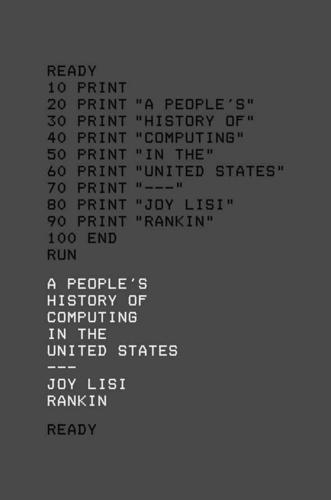
A People’s History of Computing in the United States
by
Joy Lisi Rankin
Bitzer, oral history interview by Sheldon Hochheiser, February 19, 1988, Charles Babbage Institute, retrieved from the University of Minnesota Digital Conservancy, http://hdl.handle.net/11299/107121. 2. PLATO Quarterly Progress Report for June–August 1961, Box 22, Collection CBI 133: University of Illinois at Urbana- Champaign, Computer- Based Education Research Laboratory PLATO Reports, PLATO Documents and CERL Prog ress Reports (hereafter CBI PLATO Collection), Charles Babbage Institute, Minneapolis, Minnesota. 3. Donald Bitzer, oral history interview by Mollie Price, August 17, 1982, 19, Charles Babbage Institute. 4. Bitzer, 1988 interview. 5.
…
Vyssotsky, “Project MAC (Time-Sharing Computing Project),” IEEE Annals of the History of Computing 14, no. 2 (1992): 9–13; F. J. Corbató, oral history interview with Fernando J. Corbató (1990), Charles Babbage Institute, retrieved from the University of Minnesota Digital Conservancy, http://hdl.handle.net/11299/107230; Robert M. Fano, oral history interview with Robert M. Fano (1989), Charles Babbage Institute, retrieved from the University of Minnesota Digital Conservancy, http://hdl .handle.net/11299/107281; David Walden and Tom Van Vleck, eds., The Compatible Time Sharing System (1961–1973), 50th Anniversary Commemorative Overview (Washington, DC: IEEE Computer Society, 2011), http://multicians.org /t hvv/compatible-t ime-sharing-system.pdf; Steven Levy, Hackers: Heroes of the Computer Revolution (Sebastopol, CA: O’Reilly Media, 2010). 12.
…
Minnesota School Districts Data Processing Joint Board (widely known and hereafter cited as TIES), TIES & TALES 1, no. 1 (September 15, 1967), Folder for TIES & TALES , Box 1, Total Information for Educational Systems (TIES) Records, Charles Babbage Institute. All issues of the TIES & TALES newsletters cited in this book were drawn from this TIES & TALES folder (in Box 1, TIES Records, Charles Babbage Institute), so archive information is omitted from subsequent citations. 5. John E. Haugo, “Minnesota Educational Computing Consortium,” April 1973, http://eric.ed.gov/?id=ED087434. 6. Minnesota Educational Computing Consortium (widely known and hereafter cited as MECC), Systems Update 2, no. 1 (February 1975): 3, microfilm, Minnesota Historical Society. 7.
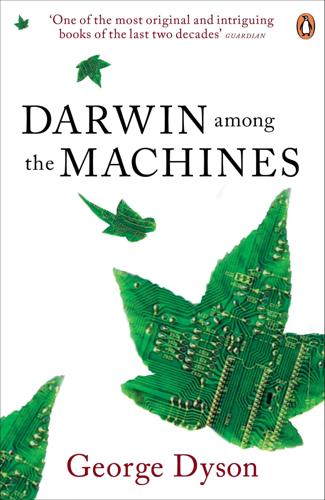
Darwin Among the Machines
by
George Dyson
Published 28 Mar 2012
Loemker, trans, and ed., Philosophical Papers and Letters, vol. 2 (Chicago: University of Chicago Press, 1956), 1063. 7.Leibniz, 1685, “Machina arithmetica in qua non additio tantum et subtractio sed et multiplicatio nullo, divisio vero pæne nullo animi labore peragantur,” translated as “Leibniz on his Calculating Machine,” in D. E. Smith, ed., A Source Book in Mathematics, vol. 1 (New York: Dover, 1929), 180. 8.Leibniz, letter, n.d., quoted in H. W. Buxton, 1871, Memoir of the Life and Labours of the Late Charles Babbage Esq. F.R.S. (MS, 1871), Charles Babbage Institute Reprint Series for the History of Computing, vol. 13 (Cambridge: MIT Press, 1988), 51, 381. 9.Leibniz, 1685, in Smith, Source Book, vol. 1, 180–181. 10.Leibniz, 1716, in Henry Rosemont, Jr., and Daniel J. Cook, trans, and eds., Discourse on the Natural Theology of the Chinese (translation of “Lettre sur la philosophie chinoise à Nicolas de Remond”), Monograph of the Society for Asian and Comparative Philosophy, no. 4 (Honolulu: University of Hawaii Press, 1977), 158. 11.Leibniz, “De Progressione Dyadica—Pars I,” (MS, 15 March 1679), published in facsimile (with German translation) in Erich Hochstetter and Hermann-Josef Greve, eds., Herrn von Leibniz’ Rechnung mit Null und Eins (Berlin: Siemens Aktiengesellschaft, 1966), 46–47.
…
Swade, “Redeeming Charles Babbage’s Mechanical Computer,” Scientific American 268, no. 2 (February 1993): 86. 23.Charles Darwin, 1876, in Nora Barlow, ed., The Autobiography of Charles Darwin, 1809–1882: with Original Omissions Restored, edited with Appendix and Notes by his Grand-daughter (New York: Harcourt Brace, 1958), 108. This reference to Babbage, and accompanying comments on Herbert Spencer, were deleted from the version published by Francis Darwin in 1896. 24.Ada Augusta Lovelace, Note A to L. F. Menabrea’s “Sketch of the Analytical Engine invented by Charles Babbage, Esq.,” Taylor’s Scientific Memoirs, vol. 3 (London: J.
…
Taylor, 1843), reprinted in Henry Provost Babbage, ed., Babbage’s Calculating Engines: Being a Collection of Papers Relating to them; their History, and Construction (London: E. and F. Spon, 1889), 25. Facsimile reprint, Charles Babbage Institute Reprint Series for the History of Computing, vol. 2 (Cambridge, Mass.: MIT Press, 1982). 25.Babbage, Ninth Bridgewater Treatise, 97. 26.Ibid., vii. 27.Charles Babbage, On the Economy of Machinery and Manufactures, 4th ed., enlarged (London: Charles Knight, 1835), 273–276. 28.Babbage, Passages, 128. 29.George Boole, An Investigation of the Laws of Thought, on which are founded the mathematical theories of Logic and Probabilities (London: Macmillan, 1854), 1. 30.Herman Goldstine, The Computer from Pascal to von Neumann (Princeton, N.J.: Princeton University Press, 1972), 153. 31.John von Neumann, “Probabilistic Logics and the Synthesis of Reliable Organisms from Unreliable Components,” in Claude E.
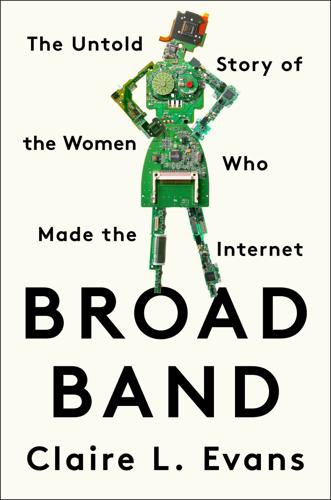
Broad Band: The Untold Story of the Women Who Made the Internet
by
Claire L. Evans
Published 6 Mar 2018
With pen and paper alone, the Naval Observatory team would chart the skies, just as other computing offices throughout the Western world would advance ballistics, maritime navigation, or pure mathematics. They wouldn’t receive much individual credit, but whatever the problem was, they’d have been instrumental in solving it. Computing offices were thinking factories. The nineteenth-century British mathematician Charles Babbage, whose desire to calculate by steam led to important early developments in mechanical computing, called what the human computing offices of his time did “mental labor.” He considered it work one did with the brain, just as hammering a nail is work one does with the arm. Indeed, computing was the grunt labor of organized science; before they were made obsolete, human computers prepared ballistics trajectories for the United States Army, cracked Nazi codes at Bletchley Park, crunched astronomical data at Harvard, and assisted numerical studies of nuclear fission on the Manhattan Project.
…
Privately, he worried that, in his sympathy for the Luddites, he might be taken as “half a frame-breaker” himself. He was, of course, not—and he was dead wrong about the spider work, too. Even as Byron made his case, Jacquard looms were producing a quality and volume of textiles unlike anything the world had ever seen. The mathematician Charles Babbage owned a portrait of Joseph-Marie Jacquard woven from thousands of silk threads using twenty-four thousand punched cards, a weaving so intricate that it was regularly mistaken for an engraving by his guests. And although the portrait was a fine possession, it was the loom itself, and its punch card programs, that really ignited Babbage’s imagination.
…
When Ada finally learned her father’s name, she wept for him, although it doesn’t appear that she or her mother held his legacy in high esteem—Byron’s portrait, in their home, was concealed under heavy drapery until Ada was twenty. But his mercurial spirit was alive in her. “I do not believe that my father was (or ever could have been) such a Poet as I shall be an Analyst; (& Metaphysician),” she wrote to Charles Babbage later in life, “for with me the two go together indissolubly.” Ada King, Countess of Lovelace Ada’s sharp analytical mind was inflected by a wild imagination. Prevented from a formal university education by her gender, she thrived under private tutelage. A precocious and very lonely child, she designed flying machines and marched around the billiard table playing violin.
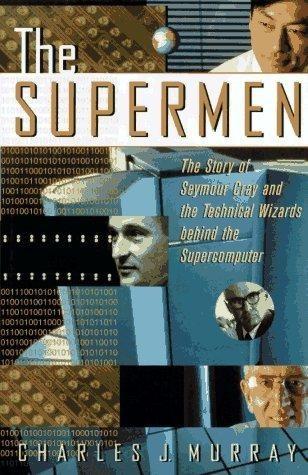
The Supermen: The Story of Seymour Cray and the Technical Wizards Behind the Supercomputer
by
Charles J. Murray
Published 18 Jan 1997
Standing on the loadil1g dock of CDC's first headquarters at 501 Park Avenue in Min- neapolis, from left to right: William Norris, Frank Mullaney, George Hanson, and a North American Van Lines representative, January 1960. (Photo courtesy of Charles Babbage Institute) · 1604 --- EX /' I I --- "..,.. j t, L . . .. . .. . . r - , W IG , .., { \'" , ' Ii .. - .' '.....: .' . , " .. , fI, 1 J Complete CDC 1604 system, early 1960s. The CDC 1604 had a processor speed of 5 microseconds, equivalent to 0.2 mega- hertz. By comparison, many desktop computers in 1996 offered speeds of 133 megahertz. (Photo courtesy of Charles Babbage Institute) / 97 William C. Norris, president of Control Data Corporation, 1963. (Photo courtesy of Charles Babbage Institute. ) \ ,. . , t.
…
The CDC 6600 is often regarded as the first supercomputer. (Photo courtesy of Charles Babbage Institute) 98 / . " " . , " Seymour Cray at the console of a CDC 6600 computer at a press conference, August 1963. (Photo courtesy of Charles Bab- bage Institute) Seymour Cray with the CDC 7600 computer, 1968. (Photo courtesy of Charles Babbage Institute) .llllt'ltl' . 11111".1.1. flree'ttttl' Itl'.IIIIII. I : I J J t : : : : I to k { ...::: ...... fttl, r , / 99 Seymour Cray with the CRAY-1, 1974. (Photo courtesy of Charles Babbage Institute) - '" . tI jli C .f liS,...e . ..
…
.- , .... . . .. .. .. . . . . . . "\ .. '" . , .... ',I. . I . .. ..- , .. ,- . . - . . , ,,"' "I I" c" '. .. .. II \ ., ... L.... ...' .... . . ... ,- Engineering Research Associates laboratory scene, 1951. (Photo courtesy of Charles Babbage Institute) John Parker, president of ERA, 1950. (Photo cour- tesy of Charles Babbage Institute) .. .... . .. 4 -" I I . 1,,1. '.A .,:u.. " ...., II - / 95 PO, \"10 "'\.- 1 ( '. . . . J . . " rr .... · .I-. . ." J _ . i ...... '" " "'.... .. .. ...... ............... \ If''t. 'tow
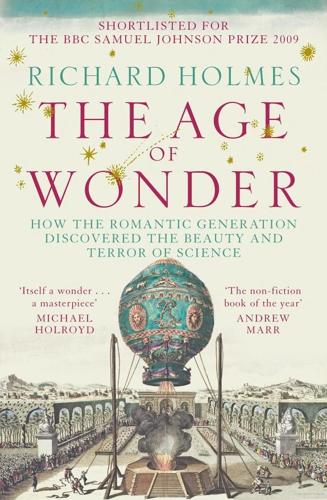
The Age of Wonder
by
Richard Holmes
Published 15 Jan 2008
Between 1829 and 1831 a series of publications by John Herschel, his friend Charles Babbage and the Scottish science writer David Brewster (who had done fine research work on polarised light) pursued the emotive theme of the supposed ‘decline of Science in Britain’. The debate was taken up by the leading journals, rapidly moved beyond the Royal Society, and became one about national culture and the role of the man of science in society. It was no coincidence that all this took place at the same time as the national self-questioning reflected in the violent political debates surrounding the Great Reform Bill. 2 The first salvo was fired by Charles Babbage, when he released a slim but carefully targeted volume, provocatively entitled Reflections on the Decline of Science in England, in the spring of 1830.
…
Box 25/84 106 HD Archive Mss Box 25/73; and Lamont-Brown, pp157-63 107 HD Archive Mss Box 25/90 108 HD Archive Mss Box 25/74, letter, 2 November 1828 109 HD Archive Mss Box 25/75, letter, 3 December 1828 110 HD Archive Mss Box 26, File B/17 111 HD Archive Mss Box 25/83 112 JD Fragments, p265 113 Davy’s two unpublished poems to Josephine Dettela can be found in HD Archive Mss Box 14 (e) pp128-30 114 Based on local information provided by Professor Dr Janez Batis of the Slovenian Academy of Sciences, for David Knight, Humphry Davy: Vision and Power, Blackwell Science Biographies, 1992, pp180, 260 115 JD Fragments, p293 116 Thorpe, p232 117 HD Archive Mss Box 25/87a 118 Fullmer, p350 119 Consolations, Dialogue I, HD Works 9, p233 120 Ibid., pp233-6 121 Ibid., pp237-8 122 Ibid., p240 123 Ibid., pp239-47 124 Ibid., pp236-47, 266, 274 125 Ibid., Dialogue II, p266 126 Ibid., pp274, 254-6 127 Ibid., Dialogue III, pp302-3 128 Ibid., Dialogue II, pp304-8 129 Ibid., Dialogue III, p309 130 Ibid., p308 131 Ibid., Dialogue IV, p316 132 Ibid., pp320-1 133 Undated extract from Davy’s lecture notebooks, JD Memoirs, p147 134 Consolations, Dialogue V, HD Works 9, pp361-5 135 Ibid., pp364-6 136 Ibid., pp365-6 137 Ibid., Dialogue VI, p382 138 Janet Browne, Charles Darwin, vol 1, 2003, p30 139 JD Memoirs, 1839 140 John Tobin, Journal of a Tour whilst accompanying the late Sir Humphry Davy, 1832, p5 141 JD Fragments, p268 142 JD Fragments, to Jane, September 1827, p296 143 HD Archive Mss Box 25/80, to Jane, 1 September 1828 144 John Herschel, On the Study of Natural Philosophy, 1830, pp342-4 and footnote 145 HD Archive Mss Box 14 (M) pp105-6 146 JD Fragments, Jane to Davy, late March 1829, p313 147 John Davy’s affectionate account, in JD Memoirs, p412 148 JD Memoirs, p408 Chapter 10: Young Scientists 1 In a series of gloomy articles, e.g. The Times, 28 June 1832. See Marie Boas Hall, All Scientists Now, CUP, 1984 2 Edinburgh Review, 49, 1829, pp439-59; and Hamilton, p270 3 Thomas Carlye, Sartor Resartus, 1833 4 Anthony Hyman, ‘Charles Babbage: Science and Reform’, in Cambridge Scientific Minds, edited by Peter Harman and Simon Mitton, CUP, 2002 5 Charles Babbage, The Decline of Science in England, 1830, p102 6 Ibid., p152 7 Ibid., p44 8 Ibid., p102 9 Ibid., p174 10 Ibid., pp203-12 11 Ibid., p210 12 Ibid., p200 13 Hamilton, p229 14 J.S. Mill, Autobiography, 1870, p124 15 John Herschel, A Preliminary Discourse on the Study of Natural Philosophy, 1831, p4 16 Ruskin, pp117-21 17 Natural Philosophy, 1830, Part II 18 Ibid., p191 19 Ibid., p4 20 Ibid., p20 21 Ibid., pp14-15 22 Ibid., p55-6 23 Ibid., pp299-303 24 Ibid., pp329-40 25 Ibid., p340 26 Faraday to John Herschel, 10 November 1832, Correspondence, vol 1, p623 27 Charles Darwin to W.D.
…
It celebrates a deeply Romantic idea of exploration and discovery. Without actually naming Herschel, it picks out the finding of Uranus, thirty-five years before, as one of the defining moments of the age. Although combining many sources of inspiration (it is possible that Keats may have attended Charles Babbage’s 1815 ‘Lectures on Astronomy’ at the Royal Institution), the poem itself was written in less than four hours. Keats was twenty, and attending a full-time medical course at Guy’s Hospital. He had stayed out all night with his friend and mentor Charles Cowden Clarke at his house in Clerkenwell, drinking and discussing poetry.
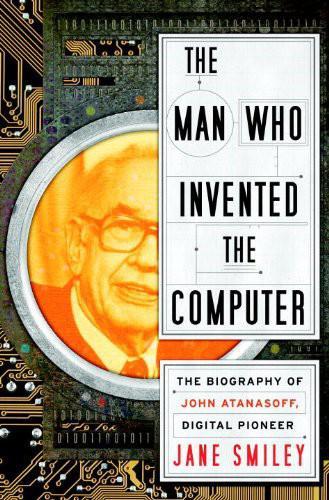
The Man Who Invented the Computer
by
Jane Smiley
Published 18 Oct 2010
While Atanasoff was pondering the Laplaciometer, Aiken, at Harvard, was trying to conceive of a way to improve Charles Babbage’s original Difference Engine. Harvard offered Aiken even less support than Atanasoff found at Iowa State College—in fact, President Conant actively discouraged him. Aiken then approached several mechanical calculating machine companies without success. Most computer inventors in the 1930s, including Vannevar Bush and Howard Aiken, were convinced that the future of computing lay in its past—in the theories of Charles Babbage (1791–1871), who had begun laying out his ideas for a mechanical calculator in 1822 and proposed constructing it to the Royal Astronomical Society.
…
The obituary in the Telegraph pointed out a further irony: “Flowers received very little remuneration from the government for his invention … barely sufficient to pay off the debts that he had run up while developing Colossus.” According to most sources his insufficient remuneration amounted to about £1,000 (some $40,000 in 2010 dollars, or about five times what Atanasoff had been granted for the development of the ABC). Charles Babbage, 1791–1871, inventor of the Difference Engine and Analytical Engine, analog computing devices. (Photograph courtesy of the Charles Babbage Institute, University of Minnesota, Minneapolis) A section of Babbage’s Difference Engine, showing rods and gears. (Science Museum/SSPL) Vannevar Bush with his Differential Analyzer, 1931. (Courtesy MIT Museum) John Vincent Atanasoff, around the time he completed his PhD at the University of Wisconsin.
…
Travis felt that the fact that the research was being done under the sponsorship of the military and the university meant that individual researchers did not have property rights in the research. He also felt that the ENIAC patents as they were eventually submitted did not give sufficient credit to other members of the research team, especially Arthur Burks—whom Travis considered “brilliant.” In his interview with Nancy Stern, for the Charles Babbage Institute of the University of Minnesota, he also suggested that the president of Penn, an English professor, had given in to coercion on the part of Mauchly and Eckert, who had threatened not to complete ENIAC if they did not gain patent rights to the machine. The patent dispute quickly escalated, driven, according to Scott McCartney, on the part of Travis and other Moore School engineers by the feeling that Mauchly was an outsider (having not gotten his degrees at the Moore School), while Eckert was volatile and difficult to get along with (by this time nearly twenty-seven years old and having earned only a bachelor’s degree).
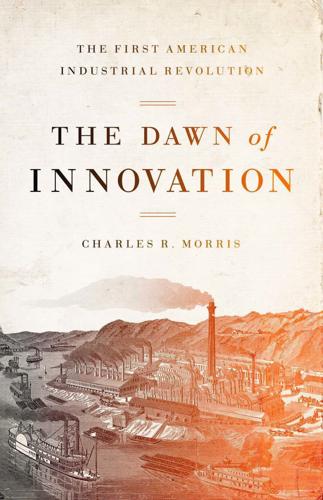
The Dawn of Innovation: The First American Industrial Revolution
by
Charles R. Morris
Published 1 Jan 2012
Even today, ultraprecision computerized machine tools work at precisions of a few hundred thousandths of an inch. Whitworth’s measuring machine still pales beside the most audacious grasp at ultraprecise complexity. The ne plus ultra of regal overreaching was Charles Babbage’s calculating engines. Charles Babbage If there were a hall of fame of intelligent people, Charles Babbage (1791–1871) would surely have his own plaque. Born into a well-to-do family, he spent most of his career in academia and for a dozen years held the Lucasian Chair of Mathematics at Cambridge University, a post graced by luminaries from Isaac Newton through Stephen Hawking.24 In Babbage’s day, all calculation-intensive sciences like astronomy were dependent on thick volumes of standard tables—logarithms, sines, and other functions—each incorporating decades of laborious construction.
…
A British Civil War buffs’ organization (www.americancivilwar.org.uk/index.php) has many details on the sales and use of the Whitworth rifle during the Civil War. 21 The account here including the Whitworth solution is drawn primarily from Goodeve and Shelley, The Whitworth Measuring Machine. 22 Monthly Notices of the Royal Astronomical Society 13, no. 1 (1852): 123–125, quote at 124. 23 Ibid., 124. 24 Doron Swade, The Difference Engine: Charles Babbage and the Quest to Build the First Computer (New York: Viking, 2001), is the best modern account of Babbage and his calculating engines. 25 Charles Babbage, Passages from the Life of a Philosopher (London: Longman, Green, Longman, Roberts & Green, 1864), 68–96, is his own account of the struggle over funding. Not all the dates agree with Swade’s, which I take to be the definitive account. 26 Roe, English and American Tool Builders, chapter titled “Inventors of the Planer,” quotes from 52, 59. 27 Babbage, Passages.
…
Not all the dates agree with Swade’s, which I take to be the definitive account. 26 Roe, English and American Tool Builders, chapter titled “Inventors of the Planer,” quotes from 52, 59. 27 Babbage, Passages. The disputed phrase quoted in the footnote is on 71. 28 The description of number two and the rejection note are from Swade, Difference Engine, 173–176. 29 Ibid., 117–119. 30 Ibid., 121. 31 Charles Babbage, “On the Method of Expressing by Signs the Action of Machinery,” Philosophic Transactions of the Royal Society, vol. 2, 1826, reprinted in Charles Babbage and His Calculating Machines, Philip Morrison and Emily Morrison, eds. (New York: Dover, 1961), 346–354, quote at 351, plates at 380–384. 32 Swade, personal communication. 33 Babbage, Passages, 452. 34 The account here is from Swade, “A Modern Sequel,” Part 3 in Difference Engine. 35 Swade, Difference Engine, 292. 36 Ibid., 305.

From Airline Reservations to Sonic the Hedgehog: A History of the Software Industry
by
Martin Campbell-Kelly
Published 15 Jan 2003
Chapter 2: ICP Software Directory, volume 1: Data Processing Management, January 1977, p. 97. Courtesy of Charles Babbage Institute, University of Minnesota, Minneapolis. Chapter 3: Datamation, November 1965, p. 121. Reproduced with permission of Computer Associates and Walter F. Bauer. Chapter 4: From personal papers of Martin Goetz. Reproduced with permission of Computer Associates and Martin Goetz. Chapter 5: System Development Corporation monthly magazine, April 1959, p. 11. Courtesy of Charles Babbage Institute, University of Minnesota, Minneapolis. Chapter 6: Datamation special report, September 1981, p. 64.
…
Bernard Cohen, Howard Aiken: Portrait of a Computer Pioneer I. Bernard Cohen and Gregory W. Welch, editors, Makin’ Numbers: Howard Aiken and the Computer John Hendry, Innovating for Failure: Government Policy and the Early British Computer Industry Michael Lindgren, Glory and Failure: The Difference Engines of Johann Müller, Charles Babbage, and Georg and Edvard Scheutz David E. Lundstrom, A Few Good Men from Univac René Moreau, The Computer Comes of Age: The People, the Hardware, and the Software Emerson W. Pugh, Building IBM: Shaping an Industry and Its Technology Emerson W. Pugh, Memories That Shaped an Industry Emerson W. Pugh, Lyle R.
…
To my chagrin I have acquired a cell phone, but I have not yet succumbed to videogames. And, yes, we still have yellow Post-Its stuck to the front door. This page intentionally left blank Acknowledgments Many individuals and organizations helped me in producing this book. It is a particular pleasure to acknowledge the help of my friends at the Charles Babbage Institute, at the University of Minnesota: Director Arthur Norberg and Associate Director Jeff Yost allowed me to participate in the organization of a conference on The Emergence of the Software Product (Palo Alto, September 2000) and to slightly subvert the agenda to my own ends. Archivists Bruce Brummer and Beth Kaplan facilitated my access to the Institute’s holdings.
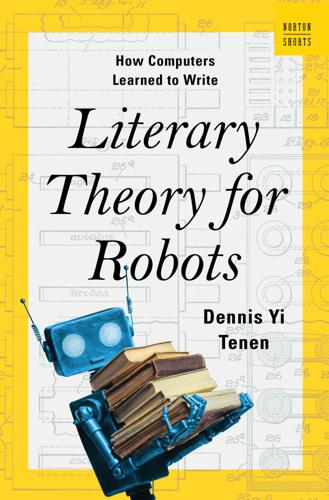
Literary Theory for Robots: How Computers Learned to Write
by
Dennis Yi Tenen
Published 6 Feb 2024
Chapter 4: Floral Leaf Pattern 49 The device, which he proudly: Benjamin Woolley, The Bride of Science (New York: McGraw-Hill, 1999), 123–62. 50 Also, did you know that: Charles Babbage, “Street Nuisances” in Passages in the Life of a Philosopher (London: John Murray, 1864), 253–71. 51 While other visitors yawned: Sophia Elizabeth De Morgan, Memoir of Augustus De Morgan (London: Longmans, Green, and Co., 1882), 89. 52 The switch to another ruleset: Babbage, “Miracle” in Passages in the Life, 291–93. 53 Frustrated with their slow progress: Charles Babbage, “On a Method of Expressing by Signs the Action of Machinery,” Philosophical Transactions of the Royal Society of London 116, no. 1/3 (1826): 250–65. 57 Whatever the arrangement of objects in: L.
…
Chapter 4: Floral Leaf Pattern 49 The device, which he proudly: Benjamin Woolley, The Bride of Science (New York: McGraw-Hill, 1999), 123–62. 50 Also, did you know that: Charles Babbage, “Street Nuisances” in Passages in the Life of a Philosopher (London: John Murray, 1864), 253–71. 51 While other visitors yawned: Sophia Elizabeth De Morgan, Memoir of Augustus De Morgan (London: Longmans, Green, and Co., 1882), 89. 52 The switch to another ruleset: Babbage, “Miracle” in Passages in the Life, 291–93. 53 Frustrated with their slow progress: Charles Babbage, “On a Method of Expressing by Signs the Action of Machinery,” Philosophical Transactions of the Royal Society of London 116, no. 1/3 (1826): 250–65. 57 Whatever the arrangement of objects in: L. F. Menabrea and Ada Lovelace (1842), “Sketch of the Analytical Engine Invented by Charles Babbage Esq.” in Scientific Memoirs, Selected from the Transactions of Foreign Academics of Science and Learned Societies, and from Foreign Journals, ed. Richard Taylor (London: Richard and John Taylor, 1843), 666–731. Chapter 5: Template CULTURE 60 Within the gears: Menabrea and Lovelace, “Sketch of the Analytical Engine,” 666–731. 64 “It is here that the union”: Charles Babbage, On the Economy of Machinery and Manufactures (London: Charles Knight, 1832), 113. 66 check my receipts: Dennis Yi Tenen, “The Emergence of American Formalism,” Modern Philology 117, no. 2 (November 2019): 257–83. 68 Four subtypes were further enumerated: Georges Polti, The Thirty-Six Dramatic Situations, trans.
…
And experience cannot be automated, even as we witness the emergence of clever devices—back at the inn, with our baroque friends, tinkering with the intricate cabinetry of language manipulation. Chapter 4 Floral Leaf Pattern Augusta Ada King (née Byron), Countess of Lovelace, loved poetry and numbers. She also had a gambling problem. And was likely using the first computer ever to bet on horses. The conventional story has Charles Babbage, another Royal Society member, together with Ada Lovelace originating the concept of a digital programmable computer sometime in the 1820s. Things were a bit more complicated, however. The Analytical Engine, as Babbage called his lifelong project, had its numerous mechanical precursors, directly in the lineage of Ibn Khaldun, Llull, Kircher, Wilkins, Leibniz, and many others.

The Age of Spiritual Machines: When Computers Exceed Human Intelligence
by
Ray Kurzweil
Published 31 Dec 1998
Babbage describes the features of his machine in “On the Mathematical Powers of the Calculating Engine,” written in 1837 and reprinted as appendix B in Anthony Hyman’s Charles Babbage: Pioneer of the Computer (Oxford: Oxford University Press, 1982). For biographical information on Charles Babbage and Ada Lovelace, see Hyman’s biography, and Dorothy Stein’s book Ada: A Life and a Legacy (Cambridge, MA: MIT Press, 1985). 2 Stan Augarten, Bit by Bit, 63-64. Babbage’s description of the Analytical Engine in “On the Mathematical Powers of the Calculating Engine,” written in 1837, is reprinted as appendix B in Anthony Hyman’s Charles Babbage: Pioneer of the Computer (Oxford: Oxford University Press, 1982). 3 Joel Shurkin, in Engines of the Mind, p. 104, describes Aiken’s machine as “an electromechanical Analytical Engine with IBM card handling.”
…
His earliest contrivances to support uncivilized life were tools of the simplest and rudest construction. His latest achievements in the substitution of machinery, not merely for the skill of the human hand, but for the relief of the human intellect, are founded on the use of tools of a still higher order. —Charles Babbage All of the fundamental processes we have examined—the development of the Universe, the evolution of life-forms, the subsequent evolution of technology—have all progressed in an exponential fashion, some slowing down, some speeding up. What is the common thread here? Why did cosmology exponentially slow down while evolution accelerated?
…
—Gottfried Wilhelm Leibniz Artificial stupidity (AS) may be defined as the attempt by computer scientists to create computer programs capable of causing problems of a type normally associated with human thought. —Wallace Marshal Artificial intelligence (AI) is the science of how to get machines to do the things they do in the movies. —Astro Teller The Ballad of Charles and Ada Returning to the evolution of intelligent machines, we find Charles Babbage sitting in the rooms of the Analytical Society at Cambridge, England, in 1821, with a table of logarithms lying before him. “Well, Babbage, what are you dreaming about?” asked another member, seeing Babbage half asleep. “I am thinking that all these tables might be calculated by machinery!” Babbage replied.

Geek Sublime: The Beauty of Code, the Code of Beauty
by
Vikram Chandra
Published 7 Nov 2013
That is, I worked within a certain language and formal system of rules, I knew how the syntax of this language could be arranged to affect changes in a series of metaphors—the “file system,” the “desktop,” “Windows”—but the best understanding I had of what existed under these conceptualizations was a steampunk-ish series of gearwheels taken from illustrations of Charles Babbage’s Difference Engine. So now I made an attempt to get closer to the metal, to follow the effects of my code down into the machine. 3 THE LANGUAGE OF LOGIC The seven lines of the “Hello, world!” code at the beginning of this book—written in Microsoft’s C# language—do nothing until they are swallowed and munched by a specialized program called a compiler, which translates them into thirty-odd lines of “Common Intermediate Language” (CIL) that look like this: This, as the name of the language indicates, is a mediating dialect between human and machine.
…
At last we have computation, which is—according to the Oxford English Dictionary (OED)—the “action or process of computing, reckoning, or counting; arithmetical or mathematical calculation.” A “computer” was originally, as the OED also tells us, a “person who makes calculations or computations; a calculator, a reckoner; spec. a person employed to make calculations in an observatory, in surveying, etc.” Charles Babbage set out to create a machine that would replace the vast throngs of human computers who worked out logarithmic and trigonometric tables; what we’ve sketched out above are the beginnings of a mechanism which can do exactly that and more. You can use the output of the half adder as input for other mechanisms, and also continue to add logic gates to it to perform more complex operations.
…
You can then put together cascades of full adders to add binary numbers eight columns wide, or sixteen, or thirty-two. This adding machine “knows” nothing; it is just a clever arrangement of physical objects that can go from one state to another, and by doing so cause changes in other physical objects. The revolutionary difference between it and the first device that Charles Babbage built, the Difference Engine, is that it represents data and logic in zeros and ones, in discrete digits—it is “digital,” as opposed to the earlier “analog” devices, all the way back through slide rules and astrolabes and the Antikythera mechanism. Babbage’s planned second device, the Analytical Engine, would have been a digital, programmable computer, but the technology and engineering of his time was not able to implement what he had imagined.

Wonderland: How Play Made the Modern World
by
Steven Johnson
Published 15 Nov 2016
But sometimes history is shaped by chance encounters, far from the corridors of power, moments when an idea takes root in someone’s head and lingers there for years until it makes its way onto the main stage of global change. One of those encounters happens in 1801, when a mother brings her precocious eight-year-old son to visit Merlin’s museum. His name is Charles Babbage. The old showman senses something promising in the boy and offers to take him up to the attic to spark his curiosity even further. The boy is charmed by the walking lady. “The motions of her limbs were singularly graceful,” he would recall many years later. But it is the dancer that seduces him.
…
Everyone knows the old saying “Necessity is the mother of invention,” but if you do a paternity test on many of the modern world’s most important ideas or institutions, you will find, invariably, that leisure and play were involved in the conception as well. Although this account contains its fair share of figures like Charles Babbage—well-to-do Europeans tinkering with new ideas in their parlors—it is not just a story about the affluent West. One of the most intriguing plot twists in the story of leisure and delight is how many of the devices or materials originated outside of Europe: those mesmerizing automata from the House of Wisdom, the intriguing fashions of calico and chintz imported from India, the gravity-defying rubber balls invented by Mesoamericans, the clove and nutmeg first tasted by remote Indonesian islanders.
…
“Using the Jacquard loom,” James Essinger writes, “it was possible for a skilled weaver to produce two feet of stunningly beautiful decorated silk fabric every day compared with the one inch of fabric per day that was the best that could be managed with the drawloom.” Joseph-Marie Jacquard displaying his loom The Jacquard loom, patented in 1804, stands today as one of the most significant innovations in the history of textile production. But its most important legacy lies in the world of computation. In 1839, Charles Babbage wrote a letter to an astronomer friend in Paris, inquiring about a portrait he had just encountered in London, a portrait that when viewed from across the room seemed to have been rendered in oil paints, but on closer inspection turned out to be woven entirely out of silk. The subject of the portrait was Joseph-Marie Jacquard himself.
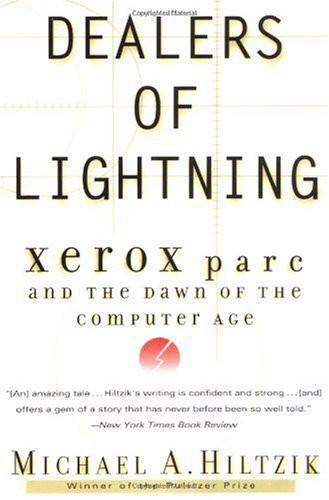
Dealers of Lightning
by
Michael A. Hiltzik
Published 27 Apr 2000
He never tired: White If the new research center: Goldman, Proposal for a New Corporate Advanced Scientific & Systems Laboratory, 6/23/69. Chapter 3: The House on Porter Drive I’m one of the oldest: Wes Clark Oral History, Charles Babbage Institute, University of Minnesota That of a very large: Clark, “The LINC Was Early and Small” in Goldberg (ed.), A History of Personal Workstations, p. 357. (Italics in original.) Time-sharers were still: Clark oral history. At that time computers: Severo Ornstein Oral History, Charles Babbage Institute. During his time at ARPA: Robert Taylor, J. C. R. Licklider oral histories, Charles Babbage Institute Taylor conversation with Herzfeld: Taylor oral history; Taylor to author, 9/10/98.
…
Ornstein, Severo, interview by Judy O’Neill, Woodside, Cal., 6 March 1990. Charles Babbage Institute, University of Minnesota, Minneapolis, Minn. Sutherland, Ivan, interview by William Aspray, Pittsburgh, Penn., 1 May 1989. Charles Babbage Institute, University of Minnesota, Minneapolis, Minn. Taylor, Robert W., interview by William Aspray, Palo Alto, Calif., 28 February 1989. Charles Babbage Institute, University of Minnesota, Minneapolis, Minn. Acknowledgments In a very real sense this book was born one day in September 1996, when Steve Jobs came to lunch at the Los Angeles Times. As a technology reporter for the newspaper I was invited to join the select company.
…
Oral Histories Clark, Wesley, interview by Judy O’Neill, New York, N.Y., 3 May 1990. Charles Babbage Institute, University of Minnesota, Minneapolis, Minn. Engelbart, Douglas C., interview by Jon Eklund, Washington, D.C., 4 May 1984. National Museum of American History, Smithsonian Institution, Washington, D.C. Jobs, Steven P., interview by Daniel Morrow, Palo Alto, Calif., 20 April 1995. Smithsonian Institution, Washington, D.C. Licklider, J. C. R., interview by William Aspray and Arthur L. Norberg, Cambridge, Mass., 28 October 1988. Charles Babbage Institute, University of Minnesota, Minneapolis, Minn. Ornstein, Severo, interview by Judy O’Neill, Woodside, Cal., 6 March 1990.
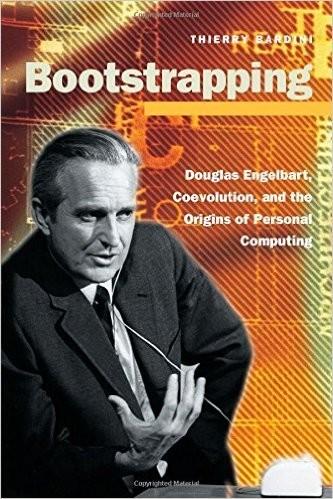
Bootstrapping: Douglas Engelbart, Coevolution, and the Origins of Personal Computing (Writing Science)
by
Thierry Bardini
Published 1 Dec 2000
Personal interview with the author, March 19, Mountain View, Calif. Cerf, V. 1990. Personal interview conducted by Judy O'Neill, April 24, Reston, Va. Center for the History of Information Processing, University of Minnesota, Minneapolis: The Charles Babbage Institute. Clark, W. 1990. Personal interview conducted by Judy O'Neill, May 3, New York, N. Y. Center for the History of Information Processing, University of Min- nesota, Minneapolis: The Charles Babbage Institute. Deutsch, P. 1996. Personal interview with the author, May 29, Mountain View, Calif. Engelbart, D. C. 1968. "Augmenting Your Intellect." Research/Development, Au- gust: 22-27. . I992.
…
Sutherland, I. E. 1989. Personal interview conducted by William Aspray, May I, Pittsburgh, Pa. Center for the HIstory of Information Processing, University of Minnesota, Minneapolis: The Charles Babbage Institute. Taylor, R. I989. Personal interview conducted by William Aspray, February 28, Palo Alto, Calif. Center for the HIstory of InformatIon Processing, UniversIty of Minnesota, Minneapolis: The Charles Babbage Institute. . 1993. Personal interview with the author, Palo Alto, Calif., March 18. Uncapher, K. 1993. Personal intervIew wIth the author, Los Angeles, Calif., Febru- ary I 6. Vallee, J.
…
There was an Army Research office out at Durham, North CarolIna, that was represented. I represented NASA. . . . The National Institute of Health was repre- sented" (Taylor 1989). 17. This information was obtained dUrIng my own personal intervIew wIth Rob- ert Taylor (1993) and confirmed In the Charles Babbage Institute oral hIstory Inter- view (1989). 18. For example, starting in 1965, Taylor annually called together the IPTO prIn- cipal investigators for a two-day or three-day meeting. Taylor also visited each of his funded projects for several days each year, which provided him with an opportunity to observe various styles for managing research and development on computing.

One Day in August: Ian Fleming, Enigma, and the Deadly Raid on Dieppe
by
David O’keefe
Published 5 Nov 2020
Following his death in 1964, the collection was purchased from his estate by Indiana University where it resides today. The author would like to thank Joel Silver for his kind help in sorting through the massive collection. 18. Charles Babbage, The Writings of Charles Babbage (Alvin, TX: Halcyon Press, 2009), Kindle edition; Bruce Collier and James MacLachlan, Charles Babbage and the Engines of Perfection (New York: Oxford University Press, 1999); Abdul Montaqim, Pioneers of the Computer Age: From Charles Babbage to Steve Jobs (London: Monsoon Media, 2012). The vast collection at Indiana University includes Babbage’s ‘Reflexions on the decline of science in England, and some of its causes’ from 1830 and the work of Dionysius Lardner, who in 1834 penned a review of seven papers by or about Babbage’s work including the Second ‘Difference Engine’ and one on a projected analytical machine. 19.
…
Babbage, Charles. On the Economy of Machinery and Manufactures. 1832. Babbage, Charles. Reflections on the Decline of Science in England. 1830. ——. The Writings of Charles Babbage. Houston, TX: Halcyon Press, 2009. Kindle edition. Carter, Frank. Breaking Naval Enigma: An Account of the Additional Problems Encountered and the Methods Used to Solve Them. Bletchley, UK: Bletchley Park Trust, 2008. Collier, Bruce, and James MacLachlan. Charles Babbage: And the Engines of Perfection. Oxford: Oxford University Press, 1998. Copeland, Jack B. Colossus: The Secrets of Bletchley Park’s Code-breaking Computers.
…
Although I began my research that same year, the story has emerged slowly and I did not have a single ‘eureka’ moment as such, but rather a string of significant and exciting finds, and countless hours of dead ends, that in the end allowed the pieces of the puzzle to fall into place. It was the painstaking assembly of minuscule pieces of evidence – balanced, sorted and weighed against other evidence – that has finally allowed me to tell the ‘untold’ story of Dieppe. New technologies such as the internet, the microchip and digitization – ones that would have delighted Charles Babbage, Alan Turing, Frank Birch and Ian Fleming – have allowed me to consult more than 150,000 pages of documents from archives on two continents and over 50,000 pages of published primary and secondary source material for this book. The methodology I employ is straightforward, based in large part on the sage advice of a multitude of mentors in the historical realm and, perhaps rather ironically, on the musings of Colonel Peter Wright, the man who served as General Ham Roberts’s intelligence officer aboard the Calpe.

Empire of the Sum: The Rise and Reign of the Pocket Calculator
by
Keith Houston
Published 22 Aug 2023
Morland’s machines may not have been as groundbreaking or, indeed, as useful as their inventor imagined, but he can rightfully claim authorship of the first meaningful text on computing machinery. The 1673 book in which he describes his inventions, The Description and Use of Two Arithmetick Instruments, was the first and only substantial text to be published on the subject before Charles Babbage would revive it in the nineteenth century.55 For that alone, Morland deserves a place in the annals of computing history. It may seem odd to dwell on three machines that never fulfilled their promise. Schickard’s machines were struck by disaster and lost to obscurity; the Pascaline was confined to the closeted world of the idle rich; and Samuel Morland’s devices were overshadowed by his picaresque lifestyle.
…
A growing number of scientific theorems and instruments could be adequately addressed only by “nonlinear” equations that could not be solved by multiplication and division alone.43 To simulate the propagation of radio waves in the upper atmosphere or to tackle Einstein’s theory of relativity with a slide rule was to paddle up the Mississippi with a Popsicle stick. In a 1937 memo that invoked John Napier, Wilhelm Leibniz, Blaise Pascal, and Charles Babbage, Aiken imagined a hypothetical calculating machine that could handle numbers of dizzying precision, that would be driven by punched cards or perforated paper tape, and that would iterate happily toward solutions without human supervision.44 Aiken made a point of comparing his “automatic calculating machine” to the tabulating machines then offered by IBM, which had to be rewired for each new step of an algorithm.45 IBM had been around in one form or another since its founder, Herman Hollerith, had first used punched cards to help tabulate the 1890 U.S. census, but its machines had always been designed for breadth rather than depth.46 An IBM tabulator could compute the monthly payroll for thousands of employees, but it balked at more intricate calculations.
…
Cambridge, MA: Harvard University, 1944. http://waywiser.fas.harvard.edu/objects/20119/ibm-asccmark-i-photo-album-leftright-panorama-of-mark-i-d. Image courtesy of Collection of Historical Scientific Instruments, Harvard University. There is a striking comparison to be drawn between Howard Aiken and Grace Hopper on the one hand and Charles Babbage and Ada Lovelace on the other. One of Aiken’s many inspirations, Babbage was the irascible nineteenth-century genius behind the fabled “analytical engine,” a mechanical computer that, had it ever been completed, would have pre-dated all other general-purpose computers, the ASCC included.56 Ada King, countess of Lovelace and the only child of the infamously “mad, bad, and dangerous to know” Lord Byron, saw more clearly than Babbage himself how the analytical engine could be turned to myriad different purposes.57 Aiken and Babbage may have invented the hardware, but Hopper and Lovelace understood that software was the key to making the best of it.
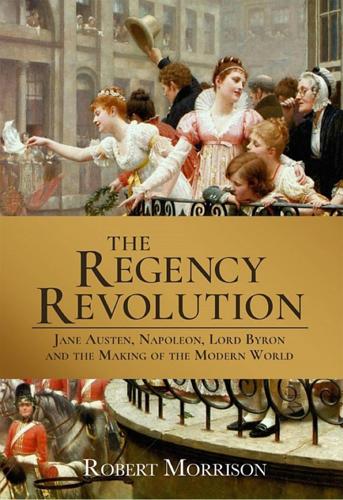
The Regency Revolution: Jane Austen, Napoleon, Lord Byron and the Making of the Modern World
by
Robert Morrison
Published 3 Jul 2019
(London: Longmans, Green, 1870), 1. 403; Sir Humphry Davy, “New Experiments on Some of the Combinations of Phosphorus” in Philosophical Magazine, 52 (1818), 443. 76. Michael Lindgren, Glory and Failure: The Difference Engines of Johann Müller, Charles Babbage, and Georg and Edvard Scheutz, trans. Craig McKay (Cambridge, MA: MIT Press, 1990), 37. 77. Charles Babbage, Passages from the Life of a Philosopher (London: Long-man, Green, Longman, Roberts, and Green, 1864), 42. 78. Byron, PW, 2. 76. 79. Cronin, 85–86; Cyrus Redding, “Blues and Anti-Blues” in New Monthly Magazine, 2 (1821), 223. 80. Sharon Ruston, Shelley and Vitality (Basingstoke: Palgrave, 2005), 24–63; John Abernethy, An Enquiry into the Probability and Rationality of Mr.
…
Turner, the Duke of Wellington, and of course the Regent himself. But there were dozens of other figures who made a decisive contribution to the period, including athletes (Tom Cribb), artists (Mary Linwood and Thomas Rowlandson), engineers (Thomas Telford), explorers (John Franklin), inventors (Charles Babbage), journalists (Pierce Egan), novelists (Mary Brunton and Maria Edgeworth), poets (John Clare), reformers (Elizabeth Fry and Robert Owen), and scientists (Humphry Davy and Michael Faraday). While I recognize the deep continuities between the Regency and the decades that both preceded and followed it, I believe the Regency is perhaps the most extraordinary decade in all of British history.
…
In many instances, they were delivered by the foremost authorities of the day, and arranged by learned societies like the Royal Institution where, for a subscription, members could gather to enjoy fine dining, the library, and the newsroom, in addition to the guest speaker. John Flaxman lectured on sculpture, John Soane on architecture, Charles Babbage on astronomy, John Dalton on chemistry, and William Lawrence on comparative anatomy. Byron and Lamb heard Coleridge lecture on Shakespeare and Milton in 1811, and Wordsworth was in attendance the following year when Coleridge was again at the rostrum, this time to speak on European drama. The New Monthly Magazine applauded J.

The Internet Is Not What You Think It Is: A History, a Philosophy, a Warning
by
Justin E. H. Smith
Published 22 Mar 2022
Yet, as an imaginative representation of their power, the idea of an omniscient demon that sits in our home and answers questions for us has been a significant incentive in the effort to find the proper arrangement of gears and circuits to simulate such a thing. In other words, if Bacon (or someone like him) had not had his fantasy in the thirteenth century (or something like it), perhaps Leibniz would not have designed his reckoning engine in the seventeenth century, and Ada Lovelace and Charles Babbage would not have created their analytical engine in the nineteenth century, and so on down to the present day. Alongside the history of computer science narrowly understood, we should perhaps chart a parallel history, an imaginary museum of all the machines that only existed as fantasy, as rumor, as mere items on a wish list alongside so many other things that the alchemists and conjurers knew how to envision but had no idea how to bring about: perpetual motion machines, universal solvents, artificial life.
…
In addition to being an illustrious woman of what is today known under the impoverished label of “STEM,” Lovelace also provided, more clearly than any of her contemporaries, an explicit account of the overlap between the history of weaving and the history of computing. Born in 1815, while still a teenager in the early 1830s Lovelace began a long collaboration with the mathematician Charles Babbage, who is best known for his work on the so-called Analytical Engine. Prior to meeting Lovelace, Babbage had by 1822 already designed a “Difference Engine,” a mechanical calculator that advanced beyond the early modern reckoning engines of Leibniz and others in that its primary use was in tabulating polynomial functions.
…
Leibniz’ Garten in Hannover,” in Joachim Wolschke-Buhlman (ed.), Gartenkultur im Spannungsfeld zwischen Arkadien und Soldatenfriedhöfen, Munich: Thomas Martin Verlagsgesellschaft, 2015. Franciscus Linus, Tractatus de corporum inseparabilitate, London, 1661. Ada Lovelace, “Notes by the Translator” on L. F. Menabrea, “Sketch of the Analytical Engine invented by Charles Babbage,” in Richard Taylor (ed.), Scientific Memoirs, selected from the Transactions of Foreign Academies of Science and Learned Societies, London: Richard and John Taylor, 1843. Lucian, A True History, trans. Francis Hickes, London: A. H. Bullen, 1902 [1894]. Hermann Lotze, Geschichte der Aesthetik in Deutschland, Munich: G.

Rage Inside the Machine: The Prejudice of Algorithms, and How to Stop the Internet Making Bigots of Us All
by
Robert Elliott Smith
Published 26 Jun 2019
The next step in the evolution of computing factories was to come from an Englishman whose career was partially inspired by an automaton not unlike those created by Vaucanson decades before. In the last year of the eighteenth century, eight-year-old Charles Babbage saw a silver automaton of a naked woman in a Covent Garden amusement shop. When writing his autobiography over sixty years later, Babbage recalled the moment he first saw The Silver Lady, saying that the automaton‘attudinized in a most fascinating manner. Her eyes were full of imagination, and irresistible’. Charles Babbage grew to become a mathematician and mechanical engineer whose accomplishments are vast and span everything from modern economics to the pricing of postage stamps, but his most famous accomplishment evolved from his realization of the one great flaw in de Prony’s human computer factories.
…
The Pascaline was invented by Blaise Pascal, the most famous mathematician of the previous generation, and devices that descend from it would be used for number processing well into the twentieth century. A form of Pascaline mechanism, including Leibniz’s innovations, would in time be incorporated into Charles Babbage’s 1822 mechanical calculator, the Difference Engine, and then into the first ‘general purpose’ computing devices that followed in its wake. Through general purpose computation, the Llull-inspired idea of computing over symbols (rather than numbers) to operate on challenging human issues would in time turn into AI.
…
As the daughter of the most notorious man in England, Ada basked in the legacy of her father’s celebrity, but in order to shelter her from her father’s excess of poetic sensibility, her mother had her strictly tutored in science and mathematics, at which she excelled. Her wealth, fame, position and intellect gave her access to many of the great scientists, technologists and thinkers of the day, including Michael Faraday, Charles Dickens and Charles Babbage. At the time of their meeting, in 1833, Babbage was forty-two and already one of the most famous inventors in England, while Ada was just eighteen. Still, Babbage was so impressed with Ada’s intellect, he showed her the incomplete prototype of his Difference Engine, and so began a long working relationship and friendship.

In Our Own Image: Savior or Destroyer? The History and Future of Artificial Intelligence
by
George Zarkadakis
Published 7 Mar 2016
The influence of mechanical automata in Hoffmann’s work is not surprising – after all, this was the age when the mechanical Turk was touring Europe and setting alight the imagination of writers and artists. Hoffmann’s work, as well as the ballets based on his stories, would later influence two of the most important heroes in the history of Artificial Intelligence, the English mathematician Charles Babbage and Lord Byron’s daughter Ada Lovelace. These two would go on to invent the first general-purpose computer and write the first computer program respectively. But the achievements of Babbage and Ada still lay in the future at the time when Byron and his friends delved into Hoffmann’s dark fantasy world.
…
Back to our time machine – destination Victorian London. 13 THE PROGRAM On the second floor of the Science Museum in London the interested visitor will come across a section dedicated to the history of modern computing. The section begins with a display of a nineteenth-century computational machine that was designed and built by one of the most celebrated prodigies of Victorian England, the eminent mathematician, philosopher, inventor and mechanical engineer Charles Babbage (1791–1871). Arguably, this is a contentious proposition by the curators. If this were a section dedicated to evolutionary biology many scientists would be aghast. Presenting Babbage’s Difference Engine as the starting point in the evolution of computing is akin to a creationist’s account of human evolution, like showing Adam and Eve having sprung forth ex nihilo by the grace, and genius, of the superior being that created them.
…
The historical merging of those two different technologies, the mechanical-physical and the logico-mathematical symbolic, would determine the dual nature of modern computing, and its separation into hardware and software. Nevertheless, the evolution towards this separation was by no means a foregone conclusion in the late eighteenth century. As it turned out, general-purpose computers had to be discovered twice. The wheels of industry Charles Babbage was the first person to produce an engineering design that distinguished between a program and the machine capable of executing it. For this he is rightly revered as the father of the modern computer. He did not arrive at this innovative design all at once. He spent years working on a number of different things, until he had the brilliant idea of borrowing a technological solution from the textile industry and applying it to automating solutions of general problems in mathematics.
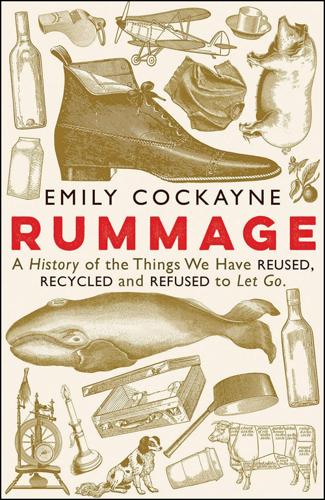
Rummage: A History of the Things We Have Reused, Recycled and Refused To Let Go
by
Emily Cockayne
Published 15 Aug 2020
Frederick Oldfield Ward presented his method to the International Exhibition in 1862: union fabrics were steamed, releasing the cotton to be used for papermaking and leaving the wool charred into a powdered form called ulmate (or crenate) of ammonia. Ward was no typical recycling pioneer; he had no financial need to reuse waste. A doctor by training, and with correspondence networks including men like Charles Babbage, Ward dabbled in speculation on small patents. Rich in nitrogen, ulmate of ammonia made a good addition to manure and was especially prized by broccoli growers in Cornwall. The substance could also be used in paper-making. The Ulmate of Ammonia Company was set up next to a paper mill in Grays, Essex.
…
There was room to manufacture starch on the side, and paraphernalia available for ‘rectifying HARTSHORN’. Interested parties might approach ‘A. B.’ at Mr Story’s Soap & Candle Warehouse, 57 Queen Street, Cheapside.69 Horns and hooves (plus leather-clippings, remnants of flock and dust from wool mills) were also burned to create prussiate of potash, later described by Charles Babbage as ‘that beautiful yellow crystallized salt’. This substance gave colour to calicos.70 Clara Matéaux, whose father was a dyer, later wrote about the use of distilled oil of deer horns in dye works, ‘ammonia having a peculiar effect upon vegetable colours’.71 Paper reusers Chrysal; or, The Adventures of a Guinea (Dublin, 1760) is a story fictitiously purported to have been discovered serendipitously among a pile of waste papers in a chandler’s shop, set aside for the wrapping of butter, mustard, brick-dust, small coal, tea, sugar and snuff.72 We’ve already seen that butchers, tallow chandlers, cheese-mongers and trunk-makers used wastepaper for packaging.
…
The heritage of such objects is bound up with the prestige of ownership; from this, value attaches to the modes of acquisition and redistribution: thus auction houses and antique dealers are deemed facilitators of acceptable reuse, and someone homeless sifting through bins is deemed merely pitiful.19 Fashion dictates that value changes more or less arbitrarily: mauve crinolines; xylonite shirt collars; plush Wombles. The actual utility of such objects often remains unchanged; they are just less sought after and possess less cultural cachet. At that point they are cast aside for less fashionable (poorer) people to use. Charles Babbage presented this as a democratisation of the things themselves.20 The new plastic items that appeared at the end of the nineteenth century also inaugurated a form of this: Bonzoline billiard balls which looked like ivory; celluloid combs in imitation of tortoiseshell; pianos bedecked with bois durci.
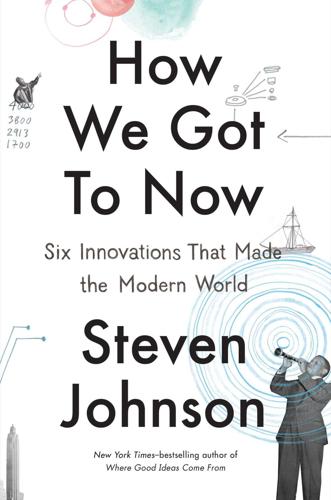
How We Got to Now: Six Innovations That Made the Modern World
by
Steven Johnson
Published 28 Sep 2014
Think of the coordination needs of the industrial factory: thousands of short, repetitive tasks performed in proper sequence by hundreds of individuals. A microprocessor requires the same kind of time discipline, only the units being coordinated are bits of information instead of the hands and bodies of millworkers. (When Charles Babbage first invented a programmable computer in the middle of the Victorian Age, he called the CPU “the mill” for a reason.) And instead of thousands of operations per minute, the microprocessor is executing billions of calculations per second, while shuffling information in and out of other microchips on the circuit board.
…
In collaboration with another brilliant Victorian who was equally ahead of his time, Ada charted a path that allowed her to push the barriers of Victorian society without succumbing to the creative chaos that had enveloped her father. She became a software programmer. — WRITING CODE IN THE MIDDLE of the nineteenth century may seem like a vocation that would be possible only with time travel, but as chance would have it, Ada had met the one Victorian who was capable of giving her such a project: Charles Babbage, the brilliant and eclectic inventor who was in the middle of drafting plans for his visionary Analytical Engine. Babbage had spent the previous two decades concocting state-of-the-art calculators, but since the mid-1830s, he had commenced work on a project that would last the rest of his life: designing a truly programmable computer, capable of executing complex sequences of calculations that went far beyond the capabilities of any contemporary machines.
…
When she told Babbage of her work, he asked why she hadn’t written her own essay on the subject. Despite all her ambition, the thought of composing her own analysis had apparently never occurred to Ada, and so at Babbage’s encouragement, she concocted her own aphoristic commentary, stitched together out of a series of extended footnotes attached to the Italian paper. Charles Babbage Those footnotes would ultimately prove to be far more valuable and influential than the original text they annotated. They contained a series of elemental instruction sets that could be used to direct the calculations of the Analytical Engine. These are now considered to be the first examples of working software ever published, though the machinery that could actually run the code wouldn’t be built for another century.
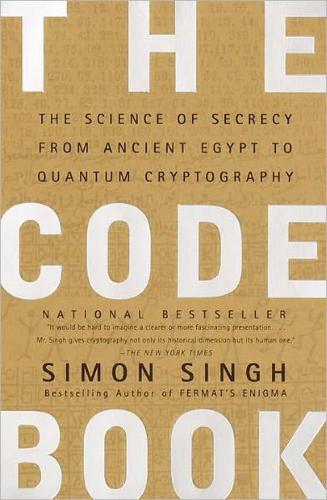
The Code Book: The Science of Secrecy From Ancient Egypt to Quantum Cryptography
by
Simon Singh
Published 1 Jan 1999
It was considered unbreakable, and became known as le chiffre indéchiffrable. Cryptographers had, for the time being at least, a clear lead over the cryptanalysts. Table 6 International Morse Code symbols. Mr. Babbage Versus the Vigenère Cipher The most intriguing figure in nineteenth-century cryptanalysis is Charles Babbage, the eccentric British genius best known for developing the blueprint for the modern computer. He was born in 1791, the son of Benjamin Babbage, a wealthy London banker. When Charles married without his father’s permission, he no longer had access to the Babbage fortune, but he still had enough money to be financially secure, and he pursued the life of a roving scholar, applying his mind to whatever problem tickled his fancy.
…
In fact, the Analytical Engine provided the template for modern computers. The design included a “store” (memory) and a “mill” (processor), which would allow it to make decisions and repeat instructions, which are equivalent to the “IF … THEN …” and “LOOP” commands in modern programming. Figure 12 Charles Babbage. (photo credit 2.2) A century later, during the course of the Second World War, the first electronic incarnations of Babbage’s machine would have a profound effect on cryptanalysis, but, in his own lifetime, Babbage made an equally important contribution to codebreaking: he succeeded in breaking the Vigenère cipher, and in so doing he made the greatest breakthrough in cryptanalysis since the Arab scholars of the ninth century broke the monoalphabetic cipher by inventing frequency analysis.
…
Consequently, he offered a correction to Tennyson’s “otherwise beautiful” poem: It must be manifest that if this were true, the population of the world would be at a standstill … I would suggest that in the next edition of your poem you have it read—“Every moment dies a man, Every moment 1 is born.” … The actual figure is so long I cannot get it onto a line, but I believe the figure 1 will be sufficiently accurate for poetry. I am, Sir, yours, etc., Charles Babbage. Babbage’s successful cryptanalysis of the Vigenère cipher was probably achieved in 1854, soon after his spat with Thwaites, but his discovery went completely unrecognized because he never published it. The discovery came to light only in the twentieth century, when scholars examined Babbage’s extensive notes.

Code: The Hidden Language of Computer Hardware and Software
by
Charles Petzold
Published 28 Sep 1999
Macintosh is a registered trademark of Apple Computer, Inc. Microsoft, MS-DOS, and Windows are either registered trademarks or trademarks of Microsoft Corporation in the United States and/or other countries. Other product and company names mentioned herein may be the trademarks of their respective owners. Images of Charles Babbage, George Boole, Louis Braille, Herman Hollerith, Samuel Morse, and John von Neumann appear courtesy of Corbis Images and were modified for this book by Joel Panchot. The January 1975 cover of Popular Electronics is reprinted by permission of Ziff-Davis and the Ziff family. All other illustrations in the book were produced by Joel Panchot.
…
But Samuel Morse had demonstrated his telegraph in 1844—ten years before the publication of Boole's The Laws of Thought—and it would be simple to substitute a telegraph sounder for the lightbulb in the circuit shown above. But nobody in the nineteenth century made the connection between the ANDs and ORs of Boolean algebra and the wiring of simple switches in series and in parallel. No mathematician, no electrician, no telegraph operator, nobody. Not even that icon of the computer revolution Charles Babbage (1792–1871), who had corresponded with Boole and knew his work, and who struggled for much of his life designing first a Difference Engine and then an Analytical Engine that a century later would be regarded as the precursors to modern computers. What might have helped Babbage, we know now, was the realization that perhaps instead of gears and levers to perform calculations, a computer might better be built out of telegraph relays.
…
If you wanted to publish a new set of tables, you would hire a bunch of computers, set them to work, and then assemble all the results. Errors could creep in at any stage of this process, of course, from the initial calculation to setting up the type to print the final pages. The desire to eliminate errors from mathematical tables motivated the work of Charles Babbage (1791–1871), a British mathematician and economist who was almost an exact contemporary of Samuel Morse. At the time, mathematical tables (of logarithms, for example) were not created by calculating an actual logarithm for each and every entry in the table. This would have taken far too long.
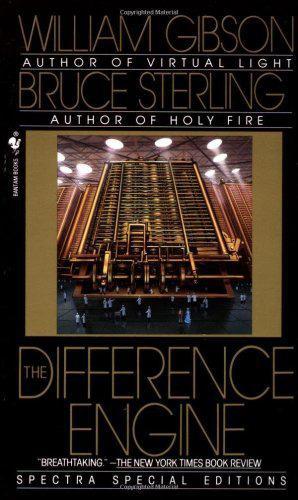
The Difference Engine
by
William Gibson
and
Bruce Sterling
Published 31 Aug 1990
Can a girl do that?" Mick laughed. "Have you never heard of Lady Ada Byron, then? The Prime Minister's daughter, and the very Queen of Engines!" He let her go, and swung both his arms wide, coat swinging open, a showman's gesture. "Ada Byron, true friend and disciple of Babbage himself! Lord Charles Babbage, father of the Difference Engine and the Newton of our modern age!" She gaped at him. "But Ada Byron is a ladyship!" "You'd be surprised who our Lady Ada knows," Mick declared, plucking a block of cards from his pocket and peeling off its paper jacket. "Oh, not to drink tea with, among the diamond squad at her garden-parties, but Ada's what you'd call fast, in her own mathematical way . . . " He paused.
…
He slotted the cards into a silvered tray by the side of the machine, then spun and caught her wrist. "Your father's dead, girl! 'Tis not that I mean to hurt you, saying it, but the Luddites are dead as cold ashes. Oh, we marched and ranted, for the rights of labor and such -- fine talk, girl! But Lord Charles Babbage made blueprints while we made pamphlets. And his blueprints built this world." Mick shook his head. "The Byron men, the Babbage men, the Industrial Radicals, they own Great Britain! They own us, girl -- the very globe is at their feet, Europe, America, everywhere. The House of Lords is packed top to bottom with Rads.
…
She is the Queen of Engines, the Enchantress of Number. Lord Babbage called her "Little Da." She has no formal role in government, and the brief flowering of her mathematical genius is far behind her. But she is, perhaps, the foremost link between her father, the Great Orator of the Industrial Radical Party, and Charles Babbage, the Party's grey eminence and foremost social theorist. Ada is the mother. Her thoughts are closed. THIRD ITERATION Dark-Lanterns Picture Edward Mallory ascending the splendid central staircase in the Palace of Paleontology, its massive ebony railing supported by a black-enameled ironwork depicting ancient ferns, cycads, and ginkgoes.
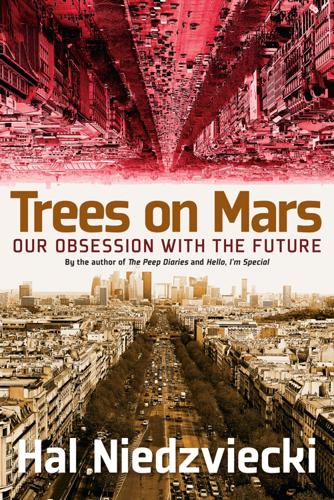
Trees on Mars: Our Obsession With the Future
by
Hal Niedzviecki
Published 15 Mar 2015
Gleick, The Information, 351. 15. Martin Davis, The Universal Computer: The Road from Leibniz to Turing, Turing centenary ed (Boca Raton, Fla: CRC Press, 2012), 16. 16. George Dyson, Turing’s Cathedral: The Origins of the Digital Universe, 1st ed (New York: Pantheon Books, 2012), 104. 17. Ibid., 105. 18. Charles Babbage, Charles Babbage and His Calculating Engines: Selected Writings (Dover Publications, 1961), 247. 19. Ibid., 252. 20. Pierre-Simon Laplace, A Philosophical Essay on Probabilities (Wiley, 1902). 21. Dyson, Turing’s Cathedral, 2012, 130. 22. “The Atlantic Telegraph,” The New York Times, August 6, 1858. 23.
…
He spoke of using this mathematical language to “work out by an infallible calculus, the doctrines most useful for life, that is, those of morality and metaphysics.”16 Leibniz invented calculus and even, in 1679, “imagined a digital computer in which binary numbers were represented by spherical tokens, governed by gates under mechanical control.”17 He laid the groundwork for the information-based computer revolution to come. But first, there would be Charles Babbage, who never did quite manage to bend the steam technologies of nineteenth-century England into his difference engine—the massive calculating machine he believed he could build. But that didn’t stop his supporters from trumpeting what the thing would and could eventually do. In particular, Ada Lovelace, daughter of the poet Lord Byron and Babbage’s mathematically gifted muse, enthused that Babbage’s analytical engine would not just calculate numbers, it would perform operations on “any process which alters the mutual relation of two or more things.”
…
A formula for a new kind of all-embracing intelligence. A language, in other words, to encompass all information, known and still to come. Everything would be converted to information, represented by symbols, the functions of the world nothing more than code, hidden, awaiting discovery and translation. Wrote Charles Babbage himself of his aspirations regarding his difference engine: “We may perhaps be enabled to form a faint estimate of the magnitude of that lowest step in the chain of reasoning, which leads us up to Nature’s God.21 Babbage works on his counting machine, and around the same time countless others compete with Samuel Morse for another way to convert what there is into information and, in the process, conquer the limitations of the physical world.
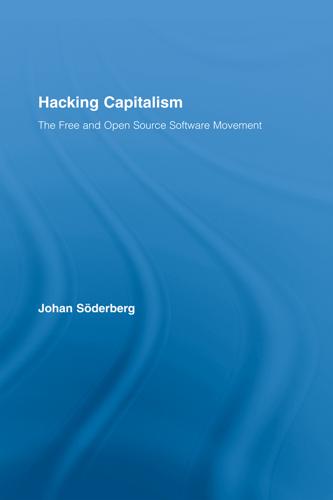
Hacking Capitalism
by
Söderberg, Johan; Söderberg, Johan;
A common thread runs through the perforated cards devised by Joseph-Marie Jacquard to deprive weavers of their craft skills, and the writings of Charles Babbage, the distinguished forerunner of modern computer science. He envisioned the world’s first computer, the Difference Engine, and incorporated Jacquard’s punched card system in his second attempt to build a computer, the Analytical Engine. These machines were intended to replace the personnel, at the time known as ‘computers’, who were then employed to calculate mathematical tables. In addition to figuring out the principles of computing, Charles Babbage was also a pioneer in writing management literature. In On the Economy of Machinery and Manufactures, published in 1832, he advised factory owners how to break up the labour process into simple tasks that could be operated by workers with the least possible skills.
…
In On the Economy of Machinery and Manufactures, published in 1832, he advised factory owners how to break up the labour process into simple tasks that could be operated by workers with the least possible skills. His deep understanding of technology did not fail him when assessing the expediency of machinery on the factory shop-floor: “One great advantage which we may derive from machinery is from the check which it affords against the inattention, the idleness, or the dishonesty of human agents.”9 Charles Babbage’s words inadvertently point to the antagonistic relation between labour and capital that computing has grown out of. The computer makes the ‘machinery check’ against human agents surgical in its precision. Furthermore, software-mediated machinery checks are now being exported from the factory to the whole of society.
…
Karl Marx made a well-known allegory between class struggle and the mole. It disappears beneath the earth for long periods of time only to reappear again at an unexpected time and place. Capital’s strategy to subdue labour conflicts with the help of computers has merely resulted in the mole respawning on the Internet. Charles Babbage’s endorsement of machinery as an instrument of control is diametrically opposed to how a hacker from the Hacksec group assesses the great advantage which we may derive from technology: “So that is the spirit, to be able to take these components, to put together the technology that was the domain of governments and let the average person figure out how to use it.
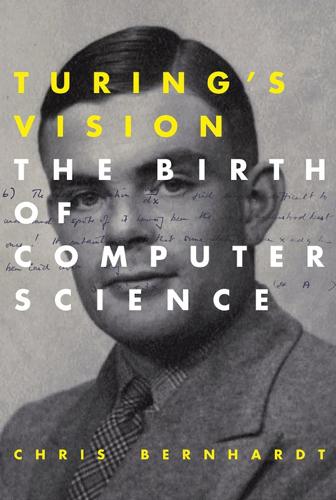
Turing's Vision: The Birth of Computer Science
by
Chris Bernhardt
Published 12 May 2016
We will look at some of these ideas in the next chapter. 5 Other Systems for Computation “We may say most aptly, that the Analytical Engine weaves algebraical patterns just as the Jacquard-loom weaves flowers and leaves.” Ada Lovelace In 1823, with substantial funding from the British government, Charles Babbage began the construction of his first “Difference Engine.” The mathematical tables of the time contained many errors that were caused by human computers. Babbage’s Difference Engine was to be a mechanical calculator. It would provide a quicker, cheaper, and more accurate way of generating these tables.
…
There were different versions of this machine. Two versions have been constructed from Babbage’s designs. One is on display at the London Science Museum. The other is owned by Nathan Myhrvold and is currently on display at the Computer History Museum in California. 2. Sketch of The Analytical Engine Invented by Charles Babbage By L. F. MENABREA of Turin, Officer of the Military Engineers With notes upon the Memoir by the Translator ADA AUGUSTA, COUNTESS OF LOVELACE. 3. David Deutsch. The Beginning of Infinity: Explanations That Transform the World. 4. This appears in the introduction to Alan Turing’s Systems of Logic: The Princeton Thesis.
…
The Life of Abraham Lincoln, reprinted by Forgotten Books, 2008. [30] McCulloch, Warren S; Pitts, Walter H. “A Logical Calculus of Ideas Immanent in Nervous Activity,” Bulletin of Mathematical Biophysics, Vol. 5, 1943, pp. 115–133. [31] Menabrea, Luigi; Lovelace, Ada. Sketch of the Analytical Engine Invented by Charles Babbage By L. F. MENABREA of Turin, Officer of the Military Engineers With Notes upon the Memoir by the Translator ADA AUGUSTA, COUNTESS OF LOVELACE Scientific Memoirs, Vol 3 (1842). [32] Minsky, Marvin. Computation: Finite and Infinite Machines, Prentice-Hall, 1967. [33] Minsky, Marvin; Papert, Seymour.
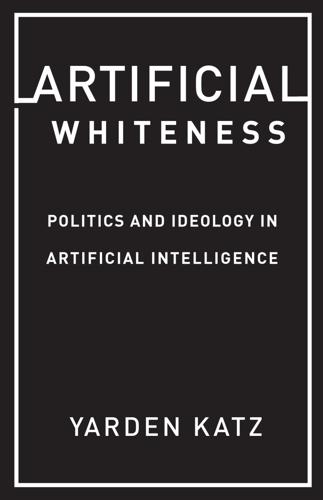
Artificial Whiteness
by
Yarden Katz
Seymour Papert, “The Summer Vision Project,” Vision Memo No. 100, MIT Artificial Intelligence Group, July 1966. 14. Flo Conway and Jim Siegelman, Dark Hero of the Information Age: In Search of Norbert Wiener—Father of Cybernetics (New York: Basic Books, 2005), 321. 15. Patrick H. Winston, oral history interview, Charles Babbage Institute, University of Minnesota, 1990, 19. 16. Conway and Siegelman, Dark Hero of the Information Age, 321. 17. A. Müller and K. H. Müller, eds., An Unfinished Revolution? Heinz Von Foerster and the Biological Computer Laboratory, BCL, 1958–1976, Complexity, Design, Society (Vienna: Edition Echoraum, 2007), 60–61. 18.
…
For discussion of the notion of “freedom” promised by Licklider and other figures in the software world, see Wendy H. K. Chun, Programmed Visions: Software and Memory (Cambridge, MA: MIT Press, 2011), chap. 2. 11. In an interview in 1988, Licklider described his efforts to pitch new approaches to “command and control” to the CIA and NSA. See Licklider’s oral history interview, Charles Babbage Institute, University of Minnesota, 1988, 35–40. With his training as a psychologist, Licklider also oversaw ARPA’s Behavioral Sciences Program, which participated in a counterinsurgency research effort in Thailand in the 1960s. ARPA established a research center in Bangkok that collected anthropometric data about local populations and sought to develop ways to suppress potential counterinsurgencies, not just in Thailand but around the world.
…
“How to Make A.I. Human-Friendly.” New York Times, March 8, 2018. Li, Fei-Fei, Rob Fergus, and Pietro Perona. “One-Shot Learning of Object Categories.” IEEE Transactions on Pattern Analysis and Machine Intelligence 28, no. 4 (2006): 594–611. Licklider, Joseph C. R. Oral history interview. Minneapolis: Charles Babbage Institute, University of Minnesota, 1988. Licklider, Joseph C. R., and Robert W Taylor. “The Computer as a Communication Device.” Science and Technology 76, no. 2 (1968): 1–3. Lighthill, James. A Report on Artificial Intelligence. London: UK Science and Engineering Research Council, 1973. Lin, Tsung-Yi, Michael Maire, Serge Belongie, James Hays, Pietro Perona, Deva Ramanan, Piotr Dollár, and C.

12 Bytes: How We Got Here. Where We Might Go Next
by
Jeanette Winterson
Published 15 Mar 2021
At the same time, he believed her to be more gifted and able than any pupil (read boys) he had taught, and said in a letter to her mother that Ada could become ‘an original mathematical investigator, perhaps of first-rate eminence’. Poor Ada. Told to study maths to avoid going poetically mad. Then told she was at risk of going mathematically mad. None of this mattered to Ada, who seems to have known her own mind from her early years. At 17 she was invited to a party at 1 Dorset Street, London. The home of Charles Babbage. * * * Babbage was independently wealthy, clever, eccentric, and had persuaded the British Government to grant him £17,000 (about £1.7 million now) to build what he called his Difference Engine: a crank-handled adding machine designed to calculate and print the logarithmic tables used by engineers, sailors, accountants, machine builders – anybody who wanted to do the calculations speedily by using pre-printed tables.
…
She was freakishly lucky to have been given a maths tutor, and blessed to find that she had an intuitive understanding of numbers, as well as the necessary application for long hours of solitary study, at a time when women of her class and kind were encouraged to be frivolous man-pleasers – at least until they lost their looks, at which point they could devote themselves to charitable causes. The probability of there being such a person as Ada Byron, later Countess of Lovelace, is vanishingly small. But there she is, in history just at the right time to meet Charles Babbage, and to design the first software programme for the first (never built) computer. * * * It all starts with a ground-breaking paper Ada wrote – without actually realising she had written it, because back in the day women didn’t write scientific papers. It happened like this … Babbage had gone to Turin in 1840 to give a lecture on his Analytical Engine.
…
Love(lace) Actually Frankenstein, Mary Shelley, 1818 Frankissstein: A Love Story, Jeanette Winterson, 2019 The Thrilling Adventures of Lovelace and Babbage: The (Mostly) True Story of the First Computer, Sydney Padua, 2015 (NOTE: FUCKING GREAT!) Sketch of the Analytical Engine invented by Charles Babbage, Esq … with notes by the translator, L. F. Menabrea, 1842. Extracted from the ‘Scientific Memoirs’ [The translator’s notes signed: A.L.L. i.e. Augusta Ada King, Countess Lovelace.] Byron: Life and Legend, Fiona MacCarthy, 2002 Romantic Outlaws: The Extraordinary Lives of Mary Wollstonecraft and her Daughter Mary Shelley, Charlotte Gordon, 2015 A Vindication of the Rights of Woman: With Strictures on Political and Moral Subjects, Mary Wollstonecraft, 1792 Rights of Man, Thomas Paine, 1791 The United States Declaration of Independence, 1776 The Social Contract, Jean-Jacques Rousseau, 1762 Enquiry Concerning Political Justice and Its Influence on Morals and Happiness, William Godwin, 1793 Cold Comfort Farm, Stella Gibbons, 1932 Hidden Figures (movie), directed by Theodore Melfi, 2016 ‘The Women of ENIAC’ (essay), IEEE Annals of the History of Computing, 1996 (Interviewing 10 of the women who worked with the computer during its 10-year run) The Creativity Code: Art and Innovation in the Age of AI, Marcus du Sautoy, 2019 Howards End, E.

Prediction Machines: The Simple Economics of Artificial Intelligence
by
Ajay Agrawal
,
Joshua Gans
and
Avi Goldfarb
Published 16 Apr 2018
The advent and commercialization of computers made arithmetic cheap.5 When arithmetic became cheap, not only did we use more of it for traditional applications of arithmetic, but we also used the newly cheap arithmetic for applications that were not traditionally associated with arithmetic, like music. Heralded as the first computer programmer, Ada Lovelace was the first to see this potential. Working under very expensive light in the early 1800s, she wrote the earliest recorded program to compute a series of numbers (called Bernoulli numbers) on a still-theoretical computer that Charles Babbage designed. Babbage was also an economist, and as we will see in this book, that was not the only time economics and computer science intersected. Lovelace understood that arithmetic could, to use modern startup lingo, “scale” and enable so much more. She realized that applications of computers were not limited to mathematical operations: “Supposing, for instance, that the fundamental relations of pitched sounds in the science of harmony and of musical composition were susceptible of such expression and adaptations, the engine might compose elaborate and scientific pieces of music of any degree of complexity.”6 No computer had been invented yet, but Lovelace saw that an arithmetic machine could store and replay music—a form that defined art and humanity.
…
The result was an accuracy of 99.5 percent.20 That is, the human error rate of 3.4 percent fell to just 0.5 percent. Errors fell by 85 percent. This is a classic division of labor, but not physically as Adam Smith described. Rather, it is a cognitive division of labor that economist and computer pioneer Charles Babbage initially described in the nineteenth century: “the effect of the division of labour, both in mechanical and mental processes, is, that it enables us to purchase and apply precisely the quantity of skill and knowledge which is required for it.”21 The human and the machine are good at different aspects of prediction.
…
Why bother spending money when security doesn’t reduce robberies? Tim Harford, The Undercover Economist Strikes Back: How to Run—or Ruin—an Economy (New York: Riverhead Books, 2014). 20. Dayong Wang et al., “Deep Learning for Identifying Metastatic Breast Cancer,” Camelyon Grand Challenge, June 18, 2016, https://arxiv.org/pdf/1606.05718.pdf. 21. Charles Babbage, On the Economy of Machinery and Manufactures (London: Charles Knight Pall Mall East, 1832), 162. 22. Daniel Paravisini and Antoinette Schoar, “The Incentive Effect of IT: Randomized Evidence from Credit Committees,” working paper 19303, National Bureau of Economic Research, August 2013. 23.
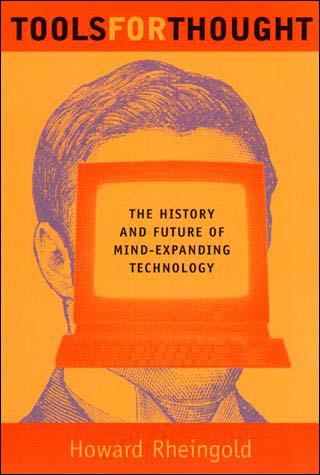
Tools for Thought: The History and Future of Mind-Expanding Technology
by
Howard Rheingold
Published 14 May 2000
Perhaps as an occupational hazard of this dangerously self-reflective enterprise, or as a result of being extraordinary people in restrictive social environments, the personalities of these patriarchs (and matriarchs) of computation reveal a common streak of eccentricity, ranging from the mildly unorthodox to the downright strange. Charles Babbage and Ada, Countess of Lovelace, lived in the London of Dickens and Prince Albert (and knew them both). A hundred years before some of the best minds in the world used the resources of a nation to build a digital computer, these two eccentric inventor-mathematicians dreamed of building their "Analytical Engine."
…
She was a teenager with long dark hair, a talent for mathematics, and a weakness for wagering on horse races. When she took a close look at the device and realized what this older gentleman was trying to do, she surprised them all by joining him in an enterprise that might have altered history, had they succeeded. Charles Babbage and his accomplice, Lady Lovelace, came very close to inventing the computer more than a century before American engineers produced ENIAC. The story of the "Analytical Engine" is a tale of two extraordinarily gifted and ill-fated British eccentrics whose biographies might have been fabrications of Babbage's friend Charles Dickens, if Dickens had been a science-fiction writer.
…
Ada exhibited her mathematical talents early in life. One of her family's closest friends was Augustus De Morgan, the famous British Logician. She was well tutored, but always seemed to thirst for more knowledge than her tutors could provide. Ada actively sought the perfect mentor, whom she thought she found in a contemporary of her mother's--Charles Babbage. Mrs. De Morgan was present at the historic occasion when the young Ada Byron was first shown a working model of the Difference Engine, during a demonstration Babbage held for Lady Byron's friends. In her memoirs, Mrs. De Morgan remembered the effect the contraption had on Augusta Ada: "While the rest of the party gazed at this beautiful invention with the same sort of expression and feeling that some savages are said to have shown on first seeing a looking glass or hearing a gun, Miss Byron, young as she was, understood its working and saw the great beauty of the invention."

Paper Knowledge: Toward a Media History of Documents
by
Lisa Gitelman
Published 26 Mar 2014
That ink—whether applied by a specialized ruling machine (figure 1.1) or printed on a printing press—was paradoxically what made most blanks blank. Each type of blank was designed and manufactured for its own purpose, like a primitive information technology, Martin Campbell-Kelly has suggested, suited to the organization and control of knowledge according to what Charles Babbage—writing in 1835—called “the division of mental labor.”4 Though the A S H O R T H I S TO RY O F ________ 23 first blanks were ancient or medieval documents rather than modern ones, and thus predate printing (think, for example, of papal indulgences5), the nineteenth century witnessed a proliferation of preprinted blank forms.
…
Willis (in Voices from the Press) and Lucy Larcom (in Poets and Poetry of Printerdom) in these volumes of occasional writings by printers: they weren’t printers, but they were close enough.89 Highly variable though it was, the distance between printing and authoring was definite and distinct, a bright line by dint of the fact that authors of necessity wrote everything in longhand. In short, authors only penned while only printers printed. Edgar Allan Poe, for one, felt this handicap keenly and dabbled in ways to reproduce text without printing.90 Charles Babbage too chafed mightily at the necessity of dealing with printers and publisher- booksellers.91 Not until typewriters became common toward the end of the century would writers finally be able to produce copy that, because typed, looked almost printed. Reproducing that typed copy would remain the printer’s domain into the next century. 50 CHAPTER ONE The look of printedness meant something to Poe, Babbage, Harpel, and their contemporaries, though the eventual erosion of the printers’ monopoly has made its meanings difficult to discern in retrospect.
…
In this account of circulation, mobility, and inertia, I have been influenced by N OT E S TO C H A P T E R O N E 157 4. 5. 6. 7. 8. 9. 10. 158 the work of Will Straw (see, for example, “Embedded Memories,” in Residual Media, ed. Charles R. Acland [Minneapolis: University of Minnesota Press, 2007], 3–31). Conversations with Michael Winship helped clarify this account of repetition. Charles Babbage, On the Economy of Machinery and Manufactures, 4th ed. (London: Charles Knight, 1835), 191; see Martin Campbell-Kelly, “Informational Technology and Organizational Change in the British Census, 1801–1911,” Information Systems Research 7 (March 1996): 22–36. In chapter 2 of The Demon of Writing: Powers and Failures of Paperwork (New York: Zone, 2012), Ben Kafka explains how Emmanuel Joseph Sieyès worked this principle out in advance of Babbage as a theory of government.

Turing's Cathedral
by
George Dyson
Published 6 Mar 2012
Thanks to Neal, and many other supporters, especially those individuals and institutions who allowed me into their basements, I spent an inordinate amount of time, over the past eight years, immersed in the layers of documents that were deposited when the digital universe was taking form. From Alex Magoun at RCA to Willis Ware at RAND, and many other keepers of institutional memory in between—including the Annals of the History of Computing and the Charles Babbage Institute’s oral history collection—I am indebted to those who saved records that otherwise might not have been preserved. To a long list of historians and biographers—including William Aspray, Armand Borel, Alice Burks, Flo Conway, Jack Copeland, James Cortada, Martin Davis, Peter Galison, David Alan Grier, Rolf Herken, Andrew Hodges, Norman Macrae, Brian Randell, and Jim Siegelman—I owe more than is acknowledged here.
…
68 EIGHT V-40 Far as all such engines must ever be placed at an immeasurable interval below the simplest of Nature’s works, yet, from the vastness of those cycles which even human contrivance in some cases unfolds to our view, we may perhaps be enabled to form a faint estimate of the magnitude of that lowest step in the chain of reasoning, which leads us up to Nature’s God. —Charles Babbage, 1837 PENTAERYTHRITOL TETRANITRATE (PETN) was an important high explosive in World War I, yet its molecular structure remained unknown in World War II. Andrew Booth, whose father invented, among other things, the automotive ignition advance and a stovetop thermocouple designed to power a radio in a household without electricity, was a graduate student at Birmingham University when he was assigned the job of using X-ray crystallography to find this out.
…
“And he said, ‘What do you want to do?’ I was quite clear by then, and I said, ‘Well the only group that is worth talking to is the lot at Princeton.’ They were the only people who had really got themselves out of the business of just waving their hands in the air and doing nothing.”4 Familiar with both the Analytical Engine of Charles Babbage and with Turing’s Universal Machine, Booth saw the IAS project as the practical implementation of these ideas. Booth, who knew Turing from Cambridge, was later asked by the National Research Council to review some of the circuits Turing had designed for the Automatic Computing Engine (ACE) being built at the National Physical Laboratory in London.
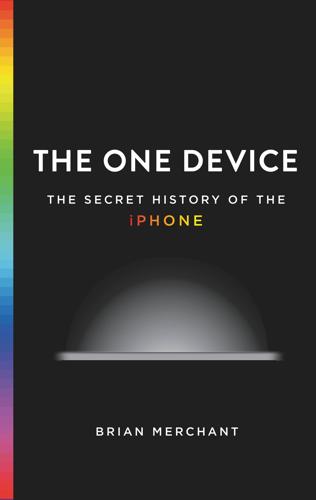
The One Device: The Secret History of the iPhone
by
Brian Merchant
Published 19 Jun 2017
A former church abbey tucked in the middle of Paris’s third arrondissement, it’s at once sprawling and unassuming. A mold of the Statue of Liberty greets visitors in the stone courtyard. You’ll find some of the most important precursors to the modern computer here, from Pascal’s calculator (the first automatic calculator) to the Jacquard loom (which inspired Charles Babbage to automate his Analytical Engine). And you’ll find the pendulum. Jean-Bernard-Léon Foucault—not to be confused with the more strictly philosophical Foucault, Michel—had set out to prove that the Earth rotated on its axis. In 1851, he suspended a bob and a wire from the ceiling of the Paris Observatory to show that the free-swinging pendulum would slowly change direction over the course of the day, thus demonstrating what we now call the Coriolis effect.
…
He was drawn to the dawning study of artificial intelligence, and when his professor asked him to pick a topic to tackle, he gravitated to one in particular: speech recognition. “I chose that particular one because I was both interested in languages, having come from India at that time, and in having had to learn three or four languages,” he said in a 1991 interview for the Charles Babbage Institute. “Speech is something that is ubiquitous to humankind.… What I didn’t know was that it was going to be a lifetime problem. I thought it was a class project.” Over the next few years, he tried to build a system for isolated word recognition—a computer that could understand the words humans spoke to it.
…
But from the seventeenth century to the mid-twentieth, when these computers helped the military calculate weapons trajectories or NASA map out flight plans, the term computers described working people. And not only laborers, but laborers who were mostly invisible, working to benefit a man or institution that would ultimately obscure their participation. In fact, the actual origin of computing as we know it today probably begins not with the likes of Charles Babbage or Alan Turing or Steve Jobs but with a French astronomer, Alexis Clairaut, who was trying to solve the three-body problem. So he enlisted two fellow astronomers to help him carry out the calculations, thus dividing up labor to more efficiently compute his equations. Two centuries later, six women computers programmed the ENIAC, one of the first bona fide computing machines, but they were not invited to its public unveiling at the University of Pennsylvania nor mentioned at the event.

Fire in the Valley: The Birth and Death of the Personal Computer
by
Michael Swaine
and
Paul Freiberger
Published 19 Oct 2014
Thomas Watson, chairman of IBM The personal computer sprang to life in the mid-1970s, but its historical roots reach back to the giant electronic brains of the 1950s, and well before that to the thinking machines of 19th-century fiction. Steam I wish to God these calculations had been executed by steam. –Charles Babbage, 19th-century inventor Intrigued by the changes being wrought by science, the poets Lord Byron and Percy Bysshe Shelley idled away one rainy summer day in Switzerland discussing artificial life and artificial thought, wondering whether “the component parts of a creature might be manufactured, brought together, and endued with vital warmth.”
…
It was then that the steam engine was first mounted on wheels, and by 1825 the first public railway was in operation. Steam power held the same sort of mystique that electricity and atomic power would have in later generations. The Steampunk Computer In 1833, when British mathematician, astronomer, and inventor Charles Babbage spoke of executing calculations by steam and then actually designed machines that he claimed could mechanize calculation, even mechanize thought, many saw him as a real-life Dr. Frankenstein. Although he never implemented his designs, Babbage was no idle dreamer; he worked on what he called his Analytical Engine, drawing on the most advanced thinking in logic and mathematics, until his death in 1871.
…
Although he never implemented his designs, Babbage was no idle dreamer; he worked on what he called his Analytical Engine, drawing on the most advanced thinking in logic and mathematics, until his death in 1871. Babbage intended that the machine would free people from repetitive and boring mental tasks, just as the new machines of that era were freeing people from physical drudgery. * * * Figure 1. Charles Babbage The 19th-century mathematician and inventor designed a machine to “mechanize thought” 100 years before the first computers were successfully built. (Courtesy of The Computer Museum History Center, San Jose) Babbage’s colleague, patroness, and scientific chronicler was Augusta Ada Byron, daughter of Lord Byron, pupil of algebraist Augustus De Morgan, and the future Lady Lovelace.

Surveillance Valley: The Rise of the Military-Digital Complex
by
Yasha Levine
Published 6 Feb 2018
Licklider, “Memorandum for Members and Affiliates of the Intergalactic Computer Network.” 56. Waldrop, Dream Machine, 254, 305. 57. An Interview with Lawrence G. Roberts, Conducted by Arthur L. Norberg (San Mateo, CA: Charles Babbage Institute, April 1989), https://conservancy.umn.edu/bitstream/handle/11299/107608/oh159lgr.pdf. 58. Hafner and Lyon, Where Wizards Stay Up Late, 48. 59. Abbate, Inventing the Internet, 48. 60. An Interview with Keith Uncapher, Conducted by Arthur L. Norberg (Minneapolis, MN: Charles Babbage Institute, July 1989), https://conservancy.umn.edu/bitstream/handle/11299/107692/oh174ku.pdf. 61. The smart money was on Raytheon, a major military contractor with deep ties to MIT going back to World War II.
…
Barber Associates, Advanced Research Projects Agency. 32. Waldrop, Dream Machine, 203. 33. J. C. R. Licklider, “Man-Computer Symbiosis.” 34. Richard J. Barber Associates, Advanced Research Projects Agency. 35. An Interview with J. C. R. Licklider Conducted by William Aspray and Arthur Norberg (Cambridge, MA: Charles Babbage Institute, October 28, 1988), https://conservancy.umn.edu/bitstream/handle/11299/107436/oh150jcl.pdf. 36. “The objective of this program is to identify and solve problems that arise when a number of digital computers, some of them remote from others, are operated together in a network, and when the information-processing capabilities of a network of computers are distributed among several or many users operating at consoles, some of which are remote from the computers.”
…
And, of course, none of them used the ARPANET or any other network because it did not yet exist. 65. Abbate, Inventing the Internet, 127–128. 66. Vinton G. Cerf and Robert E. Kahn, “A Protocol for Packet Network Interconnection,” IEEE Transactions on Communications 22, no. 5 (May 1974). 67. Vinton Cerf, interviewed by Judy O’Neill, April 24, 1990, Charles Babbage Institute. 68. Ibid. 69. “Department of Defense Appropriations for Fiscal Year 1978, Part 5—Research, Development, Test, and Evaluation,” 95th Cong., 1st sess. (February 4, 1977–March 18, 1977). 70. For example: in 1973, even as Robert Kahn and Vinton Cerf sketched out the ARPANET 2.0, ARPA director Stephen Lukasik was asking Congress for $6.5 million to fund an “intelligent systems” program to fulfill the “objective of developing the capability to have computers consider large quantities of complex, real world information and form generalizations and plans based on the totality of information.
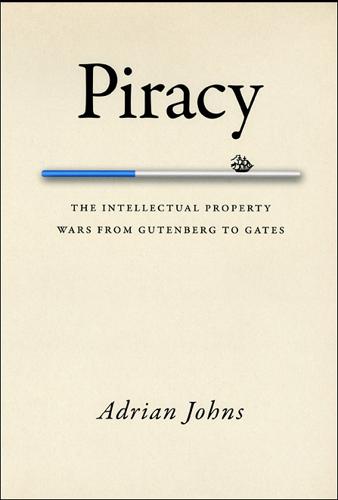
Piracy : The Intellectual Property Wars from Gutenberg to Gates
by
Adrian Johns
Published 5 Jan 2010
Another android drew pictures (“the various motions of the eyes, arms, and hand imitate nature exactly”). An exapprentice of the JacquetDroz named Maillardet subsequently built a career in London on machines that seemed to act with “life and reason.” According to David Brewster they were “very common” there a generation later, when Charles Babbage certainly witnessed them. To announce such a creature, Brewster opined – thinking of the most notorious of all, the chessplaying Turk – was tantamount to projecting “a mechanical counsellor of state.” That automata and androids exerted such a fascination is now rather well known. But the Microcosm gave solid form to the challenge that they presented to accounts of creative authorship in particular.
…
One lasting consequence of the assault he mounted was to be the creation and preservation of a mass of facts – the “novel antiquities,” as it were, of publishing itself. Archived in Westminster during the parliamentary inquiries Brydges provoked, they were quietly stored away for years, until the information pioneer Charles Babbage rediscovered them. For at least the next century these archived facts would then be dusted off and reexposed to view, informing a series of challenges that would define many of the terms of modern intellectual property debates. In Brydges’s own eyes, the publishing industry that was coalescing around the copyright principle was a monstrous mechanism for the triumph of commerce over true genius.
…
Moreover, many of his antagonists’ arguments were in fact no less outlandish than his own. After all, it was the defenders of copyright who resurrected Corsellis and proclaimed a pre1710 right of universal piracy. And the factual relics of his campaign would survive it to be revived by later critics of publishing monopolies, starting with Charles Babbage. But there is more to be said than that. The outlandish character of Brydges’s campaigns was in fact a central element in them. His understanding of his own nature was forged in the late 1780s and 1790s through the Chandos campaign and his early attempts at novel writing. What lasted from those years was a conviction that he was essentially (whatever his outward appearance) aristocratic, sensitive, secluded, poetic, and temperamental.

Human Compatible: Artificial Intelligence and the Problem of Control
by
Stuart Russell
Published 7 Oct 2019
Although it could only add and subtract and was used mainly in his father’s tax-collecting office, it led Pascal to write, “The arithmetical machine produces effects which appear nearer to thought than all the actions of animals.” Technology took a dramatic leap forward in the nineteenth century when the British mathematician and inventor Charles Babbage designed the Analytical Engine, a programmable universal machine in the sense defined later by Turing. He was helped in his work by Ada, Countess of Lovelace, daughter of the romantic poet and adventurer Lord Byron. Whereas Babbage hoped to use the Analytical Engine to compute accurate mathematical and astronomical tables, Lovelace understood its true potential,41 describing it in 1842 as “a thinking or . . . a reasoning machine” that could reason about “all subjects in the universe.”
…
Their species has essentially no future beyond that which we deign to allow. We do not want to be in a similar situation vis-à-vis superintelligent machines. I’ll call this the gorilla problem—specifically, the problem of whether humans can maintain their supremacy and autonomy in a world that includes machines with substantially greater intelligence. Charles Babbage and Ada Lovelace, who designed and wrote programs for the Analytical Engine in 1842, were aware of its potential but seemed to have no qualms about it.1 In 1847, however, Richard Thornton, editor of the Primitive Expounder, a religious journal, railed against mechanical calculators:2 Mind . . . outruns itself and does away with the necessity of its own existence by inventing machines to do its own thinking. . . .
…
After almost fifty years of research, however, nearly all mathematicians and computer scientists are convinced the claim is true. 41. Lovelace’s writings on computation appear mainly in her notes attached to her translation of an Italian engineer’s commentary on Babbage’s engine: L. F. Menabrea, “Sketch of the Analytical Engine invented by Charles Babbage,” trans. Ada, Countess of Lovelace, in Scientific Memoirs, vol. III, ed. R. Taylor (R. and J. E. Taylor, 1843). Menabrea’s original article, written in French and based on lectures given by Babbage in 1840, appears in Bibliothèque Universelle de Genève 82 (1842). 42. One of the seminal early papers on the possibility of artificial intelligence: Alan Turing, “Computing machinery and intelligence,” Mind 59 (1950): 433–60. 43.
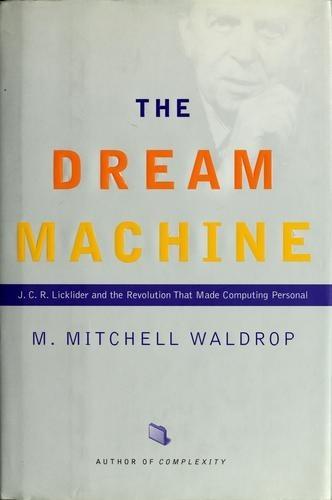
The Dream Machine: J.C.R. Licklider and the Revolution That Made Computing Personal
by
M. Mitchell Waldrop
Published 14 Apr 2001
Alexander, Fumbling the Future: How Xerox Invented, Then Ignored, the FIrst Personal Computer (New York: William Morrow, 1988), 200. 18. Ibid., 228. 19. Ibid., 229. 20. Hiltzik, Dealers of LIghtnIng, 369. 21. Ibid., 359. BIBLIOGRAPHY ORAL HISTORIES FROM THE CHARLES BABBAGE INSTITUTE A pnceless resource for any historian of computing IS the collection of oral history interviews gathered over the past two decades by the University of Minnesota's Charles Babbage Institute, a center de- voted to the history of Information processing. The memones recounted in these conversations are what makes history come alIve. The CBl's oral histories may be ordered through Its Web site at http://www.cbl.umn.edu/.
…
Like Bush and most of the other computer pioneers, Aiken had been intensely frustrated by the massive, mind-numbing calculations re- quired to solve so many of the most worthwhile problems in mathematics, and had been driven to find a way to automate those calculations. Unlike most of the oth- ers, however, Aiken was familiar with the work of the nineteenth-century English inventor Charles Babbage, who had designed a series of computational devices that culminated in the 1830s with his "Analytical Engine," a general-purpose, program- mable calculator that could automatically carry out arithmetic operations specified on a series of punched cards-and that could indeed make some decisions about what operation to do next.
…
Nonetheless, his patroness Augusta Ada Byron, Countess of Lovelace (and daughter of Lord Byron), wrote a number of programs for the machine to demonstrate its potential power. Moreover, Babbage's surviving designs show that his Analytical Engine would indeed have worked; today, Ada Lovelace is widely honored as the first programmer, and Charles Babbage is like- wise revered as the spiritual father of modern computing. It is certainly true that Howard Aiken, who had come across Babbage's biography in the mid-1930s, when almost no one in the United States had ever heard of him, considered himselfBab- bage's spiritual heir. Aiken began design work on his automatic calculating machine in 1937, when he was thirty-seven (he had worked for more than ten years as an electrical engi- neer at Westinghouse before going back to school to get a doctorate in physics).
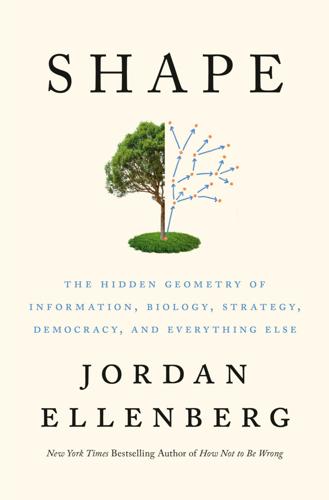
Shape: The Hidden Geometry of Information, Biology, Strategy, Democracy, and Everything Else
by
Jordan Ellenberg
Published 14 May 2021
The world largely agreed with his assessment; the so-called Vigenère cipher became widely known as le chiffre indechiffrable, the undecodable code. No reliable way to unravel the Vigenère existed until the development of the “Kasiski examination,” which, as Stigler might have predicted, was actually invented two decades before Friedrich Kasiski by Charles Babbage. But even that method doesn’t work well if the key is something as long as Tender Buttons, by Gertrude Stein. COMPLETE VICTORY A code, of course, is only as good as the work ethic of the people who deploy it. For instance: you probably know that the Confederacy was a rebellious splinter nation that waged war against the United States of America in a desperate effort to preserve a monstrous system of mass enslavement, but were you aware they were also really terrible at cryptography?
…
In 1912, the Spanish mathematician Leonardo Torres y Quevedo built a machine, El Ajedrecista, to play out certain chess endgames, and Alan Turing laid out the plan for a functional chess computer in the 1950s. The idea of a chess-playing robot is even older, dating back to Wolfgang von Kempelen’s “Chess Turk,” a wildly popular chess-playing automaton of the eighteenth and nineteenth centuries, which inspired Charles Babbage, baffled Edgar Allan Poe, and checkmated Napoleon, but which was in fact controlled by a diminutive human operator concealed inside the works. The first computer program that played Go didn’t come until the late 1960s, when Albert Zobrist wrote one as part of his University of Wisconsin PhD thesis in computer science.
…
To get better approximations, you might want differences of differences of differences, or differences of those triple differences, and so on until your head spins. You wouldn’t want to do this by hand. You might even want some kind of mechanical engine to compute these differences in your stead. That brings us to Charles Babbage. Babbage had been fascinated by automata ever since his childhood, when a “a man who called himself Merlin”* allowed Babbage entry to his private workshop and showed the boy his most ingenious mechanical creation: “an admirable danseuse, with a bird on the fore finger of her right hand, which wagged its tail, flapped its wings, and opened its beak.
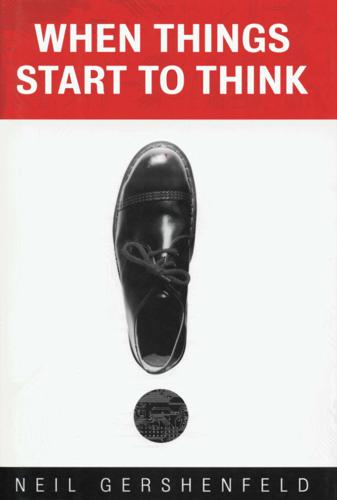
When Things Start to Think
by
Neil A. Gershenfeld
Published 15 Feb 1999
The base of the machine was larger than it appeared; there was room for a small (but very able) chess player to squeeze in and operate the machine. While the Turk might have been a fake, the motivation behind it was genuine. A more credible attempt to build an intelligent machine was made by Charles Babbage, the Lucasian Professor of Mathematics at Cambridge from 1828 to 1839. This is the seat that was held by Sir Isaac Newton, and is now occupied by Stephen Hawking. Just in case there was any doubt about his credentials, his full title was "Charles Babbage, Esq., M.A., F.R.S., F.R.S.E., F.R.A.S., F. Stat. S., Hon. M.R.I.A., M.C.P.S., Commander of the Italian Order of St. Maurice and St. Lazarus, Inst. Imp. (Acad. Moral.)
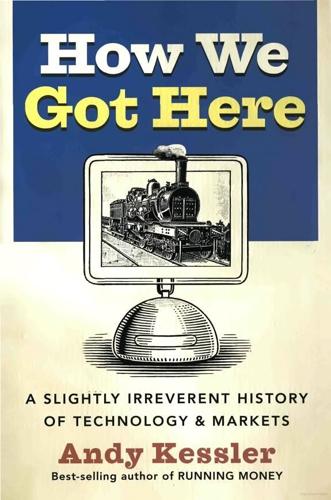
How We Got Here: A Slightly Irreverent History of Technology and Markets
by
Andy Kessler
Published 13 Jun 2005
Newton stated that if an object, hot or cold, is in an area of constant temperature, then its rate of temperature change is proportional to the difference between the object’s temperature and the ambient temperature. Newton figured this out empirically with a thermometer. Watt ran experiments to figure out how fast steam would cool. In 1822, a flamboyant professor in England, Charles Babbage announced that he would build a Difference Engine. The size of a house, it would need a steam engine to operate but it would solve differential equations. Great idea, poor execution. A few small-scale models were demonstrated, but the engine was ahead of its time, by probably 100 years. After 10 years of trying, he gave up.
…
Joint stock companies were the rage, and the stock market was all too happy to step in and provide capital. And more capital. And then too much capital. TRANSPORTATION ELASTICITY 49 By the 1840’s, a “Railroad Mania” was raging, with stocks selling on multiples of passenger miles, a precursor for multiples of page views that Yahoo stock would trade on 150 years later. An inventor named Charles Babbage complained that “the railroad mania withdrew from other pursuits the most intellectual and skilful draftsmen.” He sought to invent a machine that might replace them, and although he couldn’t have foreseen it, make Yahoo possible. This is when Charles Dickens marveled at railroad wealth. Investors made money, investors lost money, but in the best and worst of times, the railroads got built, and people and goods were shuffled about.
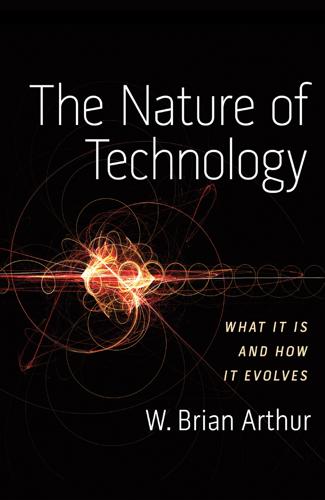
The Nature of Technology
by
W. Brian Arthur
Published 6 Aug 2009
Early radio was limited mainly to wireless telegraphy—sending messages without telegraph wires, often from ship to shore. Nevertheless, the appearance of a new domain constitutes not what can be done but, more than this, the potential of what can be done. And it stimulates the minds of the technologists of the day. In 1821 Charles Babbage and his friend, the astronomer John Herschel, were preparing mathematical tables for the Astronomical Society. The two men were comparing two previous versions of the same mathematical tables, each hand-calculated separately, and Babbage became exasperated at the high frequency of errors they were finding.
…
Chapter 4: Domains, or Worlds Entered for What Can Be Accomplished There 70 A domain will… cluster: Of course, domains suffer the usual problems of collective nouns. (Who exactly is a conservative? What exactly constitutes renaissance architecture?) Domains may also overlap. Roller bearings belong to several commonly used domains. 72 Fly-by-wire allowed aircraft control systems: Tomayko. 74 In 1821 Charles Babbage: Joel Shurkin, Engines of the Mind, Norton, New York, 1996, p. 42; Doron Swade, The Difference Engine, Penguin Books, New York, 2002, p. 10. 74 Jules Verne’s: Dover’s 1962 edition of Verne’s From the Earth to the Moon carries many of the original 1860s French illustrations. 77 “the grammar of painting”: Henry James, “The Art of Fiction,” Longman’s Magazine 4, September 1884. 77 the biochemist Erwin Chargaff: The quote is from his “Preface to a Grammar of Biology,” Science 172, May 14, 1971. 77 Where do such… from?
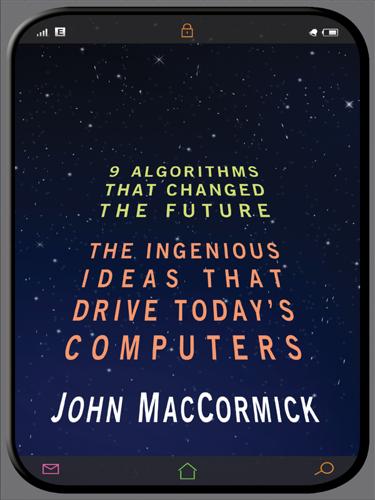
Nine Algorithms That Changed the Future: The Ingenious Ideas That Drive Today's Computers
by
John MacCormick
and
Chris Bishop
Published 27 Dec 2011
The excerpt from the conference's funding proposal (on page 103) is quoted in Pamela McCorduck's 1979 book, Machines Who Think. Compression (chapter 7). The story about Fano, Shannon, and the discovery of Huffman coding is taken from a 1989 interview of Fano by Arthur Norberg. The interview is available from the oral history archive of the Charles Babbage Institute. My favorite treatment of data compression is in Information Theory, Inference, and Learning Algorithms, by David MacKay, but this book requires college-level math. Dewdney's book (see above) contains a much briefer and more accessible discussion. Databases (chapter 8). There is an over-abundance of books providing an introduction to databases for beginners, but they typically explain how to use databases, rather than explaining how databases work—which was the objective of this chapter.
…
See also certification authority authority trick B-tree Babylonia backup bank; account number; balance; for keys; online banking; for signatures; transfer; as trusted third party base, in exponentiation Battelle, John Bell Telephone Company binary Bing biology biometric sensor Bishop, Christopher bit block cipher body, of a web page brain Brin, Sergey British government browser brute force bug Burrows, Mike Bush, Vannevar Businessweek Byzantine fault tolerance C++ programming language CA. See certification authority calculus Caltech Cambridge CanCrash.exe CanCrashWeird.exe Carnegie Mellon University CD cell phone. See phone certificate certification authority Charles Babbage Institute chat-bot checkbook checksum; in practice; simple; staircase. See also cryptographic hash function checksum trick chemistry chess Church, Alonzo Church-Turing thesis citations class classification classifier clock arithmetic clock size; conditions on; factorization of; need for large; primary; as a public number; in RSA; secondary Codd, E.
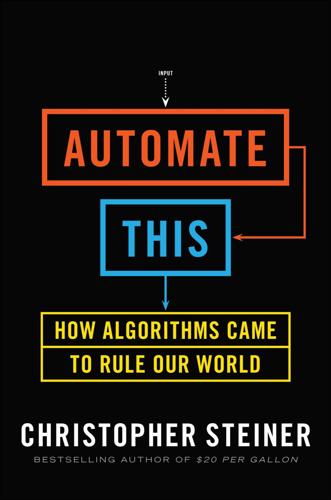
Automate This: How Algorithms Came to Rule Our World
by
Christopher Steiner
Published 29 Aug 2012
And there was no obvious way to apply what’s now called Boolean algebra without machines or computers capable of reading algorithms. That’s not to say nobody tried. Perhaps the most important was Ada Lovelace, who, aside from being a female math scholar in a time when few women were allowed to study, is often recognized as the first hacker. In 1842, while documenting Charles Babbage’s Analytical Engine, a mechanical computing machine that Babbage never completed, Lovelace devised several different inputs that, theoretically, would make the machine perform certain calculations and tasks. In doing so, Lovelace had composed the first algorithm meant for a machine. Lovelace’s work did not use Boolean symbols, so it was left searching for a way to express the processes of human thought.
…
David Berlinski, The Advent of the Algorithm: The 300-Year Journey from an Idea to the Computer (New York: Mariner, 2001), p. 14. 14. Ibid., p. 2. 15. Bertrand Russell, A Critical Exposition of the Philosophy of Leibniz (New York: Cosimo Books, 2008), p. 192. 16. Chabert, A History of Algorithms, p. 44. 17. Bruce Collier and James MacLachlan, Charles Babbage and the Engines of Perfection (New York: Oxford University Press, 1998), p. 46. 18. Berlinski, The Advent of the Algorithm, p. 3. 19. William Ewald, From Kant to Hilbert: A Source Book in the Foundations of Mathematics (Oxford: Oxford University Press, 1996), p. 446. 20. Paul Nahin, The Science of Radio (New York: Springer-Verlag, 2001), p. xxxvi. 21.
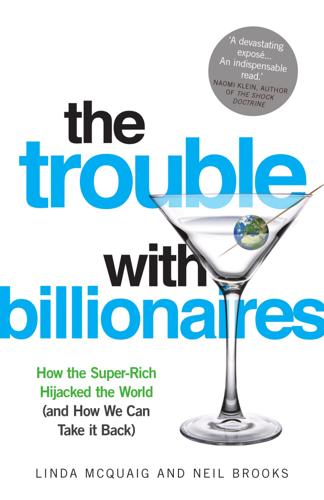
The Trouble With Billionaires
by
Linda McQuaig
Published 1 May 2013
In fact, when it was patented in 1804, it was unquestionably the most complex mechanism in the world’.3 Its punched-card technology was the germ of the idea for the computer. (Indeed, the first computers Gates worked on as a student still used punched cards.) Jacquard’s loom was the inspiration for an ambitious calculating machine that is now considered to be a Victorian-age ‘computer’. Developed by British scientist and mathematician Charles Babbage, the machine was an attempt to adapt the punched-card technology of Jacquard’s loom for the tedious task of mathematical calculation. At the time, for instance, tables used to calculate the movement of stars and planets were prepared slowly and painstakingly by clerks who were known, interestingly enough, as ‘computers’.
…
So if we were to present the story of the development of the personal computer as a stage play, it would be a rich and complex drama with a long list of characters. From early scenes featuring Joseph Marie Jacquard and his punched-card technology, the play would go on to include starring roles for Charles Babbage, Herman Hollerith, Thomas John Watson, J. Presper Eckert, John Mauchly, Douglas Engelbart and Bill English, with a host of other largely unidentified characters playing crucial supporting roles onstage and off. Toward the end of this rather long drama, there’d be an intriguing subplot about how technological innovator Gary Kildall thought he had a deal with IBM, only to discover his friend Bill Gates had sold IBM an adaptation of Kildall’s own operating system for the first mass-market personal computer.
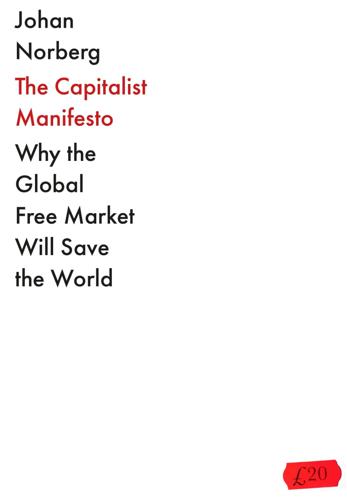
The Capitalist Manifesto
by
Johan Norberg
Published 14 Jun 2023
Tim Harford, The Next Fifty Things That Made the Modern Economy, Hachette, 2020, chap.24. 6. In an email correspondence documented on NetHistory: www.nethistory.info/Archives/origins.html. 7. Mazzucato 2021, p.123. 8. Oral history interview with R. W. Taylor, William Aspray, Charles Babbage Institute, 28 February 1989. https://conservancy.umn.edu/handle/11299/107666, p.42f. 9. Oral history interview with Paul Baran, Judy O’Neill, Charles Babbage Institute, 5 March 1990, https://conservancy.umn.edu/handle/11299/107101, p.34. 10. Matt Ridley, How Innovation Works: And Why It Flourishes in Freedom, HarperCollins, 2020. 11. Jonathan Coopersmith, ‘Pornography, technology, and progress’, Icon, vol.4, 1998. 12.

Track Changes
by
Matthew G. Kirschenbaum
Published 1 May 2016
But materiality also grounds us. It demystifies. Materiality is where—is how—our knowing begins. ONE WORD PROCESSING AS A LITERARY SUBJECT Not long after he began work in earnest on the mechanical tabulating machine that would be called the Difference Engine, the nineteenth-century British inventor Charles Babbage found himself a regular guest at the table of Samuel Rogers, a poet who lived in a lavishly rebuilt house in London’s St. James overlooking Green Park. The two had struck up a friendship through Rogers’s brother, a banker, with whom Babbage had financial dealings. Rogers’s breakfasts had long been an institution among London’s literati, a place where Coleridge might talk with J.
…
“Typographical errors were now of no import, and text became literally plastic with cut-and-paste.”108 His third novel, Mona Lisa Overdrive (1988) became his first actually written on a computer; shortly after he and Sterling would collaborate on The Difference Engine (1990), a novel set in an alternative Victorian era. Just as Neuromancer is widely regarded as a touchstone for cyberpunk, The Difference Engine inaugurated the “steampunk” genre, which posits that the Victorians (typically in the person of Charles Babbage) had been successful in inventing digital computers. And like cyberpunk before it, steampunk offers an homage to the idea of the sentient machine. Gibson and Sterling’s novel is in fact narrated by a computer, a device we have seen before from John Barth and Michael Frayn. Here the “Narratron” assembles the story from a bricolage of sources encoded among its vast libraries of punched cards.
…
His guitar technique may be ineffable, but something as mundane as a particular brand of battery? That we can grasp hold of. (I am grateful to Alan Galey for suggesting this story to me.) 43. Tom McCarthy, “Writing Bytes,” New York Times Book Review, November 3, 2013, 12. 1. Word Processing as a Literary Subject 1. The episode is recounted in Charles Babbage, Passages from the Life of a Philosopher (London: Longman, 1864), 192–194. 2. Ricardo Birmele, “WordPerfect,” Byte, December 1984, 277. 3. Art Spikol, “Processed Words,” Writer’s Digest, August 1983, 8. 4. Ray Hammond, The Writer and the Word Processor (London: Coronet, 1984), 9. Hammond is a science writer and futurologist.

Robot Rules: Regulating Artificial Intelligence
by
Jacob Turner
Published 29 Oct 2018
See also Daniel Susskind and Richard Susskind, The Future of the Professions : How Technology Will Transform the Work of Human Experts (Oxford: Oxford University Press, 2015). 5See Nick Bostrom, Superintelligence (Oxford: Oxford University Press, 2014). 6See Ray Kurzweil, The Singularity Is Near: When Humans Transcend Biology (New York: Viking Press, 2005). 7Several nineteenth-century thinkers including Charles Babbage and Ada Lovelace arguably predicted the advent of AI and even prepared designs for machines capable of carrying out intelligent tasks. There is some debate as to whether Babbage actually believed that such a machine was capable of cognition. See, for example, Christopher D. Green, “Charles Babbage, the Analytical Engine, and the Possibility of a 19th-Century Cognitive Science”, in The Transformation of Psychology, edited by Christopher D.
…
Green, “Charles Babbage, the Analytical Engine, and the Possibility of a 19th-Century Cognitive Science”, in The Transformation of Psychology, edited by Christopher D. Green, Thomas Teo, and Marlene Shore (Washington, DC: American Psychological Association Press, 2001), 133–152. See also Ada Lovelace, “Notes by the Translator”, Reprinted in R.A. Hyman, ed. Science and Reform: Selected Works of Charles Babbage (Cambridge: Cambridge University Press, 1989), 267–311. 8What follows is by no means intended to be exhaustive. For a far more comprehensive survey of AI and robotics in popular culture, religion and science, see George Zarkadakis, In Our Image: Will Artificial Intelligence Save or Destroy Us? (London: Rider, 2015). 9T. Abusch, “Blood in Israel and Mesopotamia”, in Emanuel: Studies in the Hebrew Bible, the Septuagint, and the Dead Sea Scrolls in Honor of Emanuel Tov, edited by Shalom M.

Blood in the Machine: The Origins of the Rebellion Against Big Tech
by
Brian Merchant
Published 25 Sep 2023
He would not have known it then—though he certainly thought highly of himself and his “imperative duty” to advance his profit-generating machinery—but he had helped clear a path for those pursuing ever more ambitious scales of automation. Less than two decades after the Luddite uprisings, the effort to imagine and build human-free factories began in earnest. Charles Babbage, the inventor of the schema for one of the first modern computers, would declare that his difference engine could be used to computerize the entire factory system. (In an ironic twist, Lord Byron’s estranged daughter, Ada Lovelace, would write history’s first software programs by expanding on Babbage’s work.)
…
They had a daughter, Augusta Ada, and Byron only regressed further. (Years later, Ada went on to marry the future Earl of Lovelace, and, tutored by her mother to avoid the arts or any pursuit that might lead her down a path like her father’s, grew interested in mathematics. She cemented her own legend by collaborating with the inventor Charles Babbage, and wrote a paper in which she envisioned and explained the uses of his proto-computer, the Analytical Engine, better than he could. She is known today as the first computer programmer, and the founder of scientific computing. Byron did not live to see any of this, though he may have had a hint of her talents.
…
And the Netflix series Black Mirror is basically one dystopian Frankenstein story after another, in which invasive technologies designed for personal profit spiral out of control. In each of these examples, automation, operating at its zenith—in a form that Industrial Revolution–era technology boosters like Andrew Ure and Charles Babbage might admire—displaces humanity, usually violently and forcefully, to profit a corporate Frankenstein. Technological violence, dystopia, even the mass extinction of humans, is the end result. The films aren’t shy about this, even if we have gradually become inured to the message. These tech firms and their creations—Weyland-Yutani and its replicants, Cyberdyne and SkyNet—are the collective fears that have stuck.
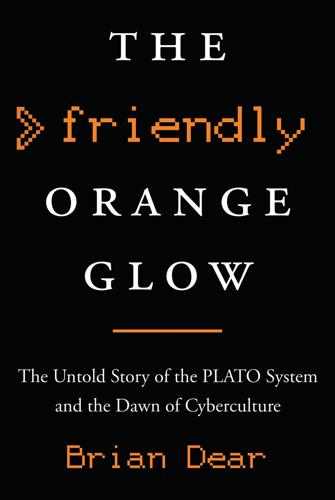
The Friendly Orange Glow: The Untold Story of the PLATO System and the Dawn of Cyberculture
by
Brian Dear
Published 14 Jun 2017
Photo by Brian K. Johnson, News-Gazette, Champaign, Illinois, 1986 32. Drawing by Ted Nelson. Used with permission. 33. Image courtesy of the Charles Babbage Institute, University of Minnesota Libraries, Minneapolis, Minnesota 34. Photo provided by Bob Morris 35. Photo provided by Bob Morris 36. Photo by Gary Brown, 2007 37. Photo provided by Bob Morris 38. Photo provided by Bob Morris 39. Photo provided by Bob Morris 40. Image courtesy of the Charles Babbage Institute, University of Minnesota Libraries, Minneapolis, Minnesota 41. Screen image provided by Bill Lynch A Note About the Author Brian Dear is a longtime tech start-up entrepreneur and founder of companies, including Coconut Computing, FlatWorks, Eventful, and Nettle.
…
This book would not have been possible without the eager, enthusiastic support of the staffs at the Library of Congress; the University of Illinois Archives; the University of Illinois Library; Brigham Young University Library and Special Collections; the University of Washington Library; the University of Maryland Baltimore County Library; the University of Maryland College Park Library; the University of California San Diego Library; San Diego State University Library; the University of New Mexico Library; the Ohio State University Library; and the Charles Babbage Institute at the University of Minnesota. Thanks to the staff of the Computer History Museum in Mountain View, California, who in 2010 co-produced with me a two-day conference celebrating the fiftieth anniversary of the founding of the PLATO system. Five hundred people attended what turned out to be the largest event ever held at the museum up until that time.
…
That ever-growing list prompted ever more people to contact me: a virtuous cycle that has never stopped—it continues right up to the present day. The result is a book largely based on oral history, capturing, before they are forever lost, the stories of the people who participated in the late, great online community known as PLATO. Abbreviations BYU, Brigham Young University CBI-UM, Charles Babbage Institute—University of Minnesota CERL, Computer-Based Education Research Laboratory, University of Illinois at Urbana-Champaign CHM, Computer History Museum, Mountain View, California CSL, Control Systems Laboratory (1952–1957), Coordinated Science Laboratory (1958–) DI, The Daily Illini, the official newspaper of University of Illinois at Urbana-Champaign ECE, Electrical and Computer Engineering Department, University of Illinois at Urbana-Champaign NG, Champaign-Urbana, Illinois, News-Gazette PCP, PLATO Corrections Project UIC, University of Illinois at Chicago (formerly University of Illinois Chicago Circle) UIUC, University of Illinois at Urbana-Champaign Interviews Author’s Interviews If no location specified, interview was conducted via telephone.
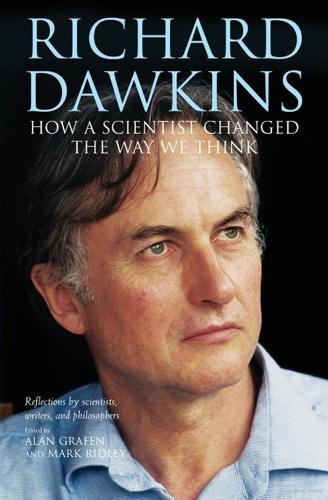
Richard Dawkins: How a Scientist Changed the Way We Think
by
Alan Grafen; Mark Ridley
Published 1 Jan 2006
The answer that he arrived at predicted the essential distinction between DNA (instructions) and transcriptase (machinery that follows instructions) several years before Crick and Watson’s discovery. Surprisingly, though, the very first example of activity fusing computing and biology is over a century older than the work of Turing and von Neumann, predating even Darwin’s Origin of Species. It is due to Charles Babbage, designer of the Difference Engine, the first automatic calculating machine and the progenitor of the modern computer. As early as 1837, Babbage reported using this machine to help him demonstrate that inexplicably abrupt changes in the geological record need not be taken to be the work of God (a hot topic of the day).
…
At the time, it remained an act of faith to believe that this kind of preprogramming could, unlike fundamentally inexplicable acts of divine intervention, be understood through regular science (in the same way that careful examination of Babbage’s engine would have revealed the laws that governed its surprising behavior). For more discussion, see S. Bullock, ‘Charles Babbage and the emergence of automated reason’, in P. Husbands, O. Holland, and M. Wheeler (eds.), The History of the Mechanization of Mind (Cambridge, MA: MIT Press, forthcoming). 4 C. G. Langton (ed.), Artificial Life: An Overview (Cambridge, MA: MIT Press, 1995). 5 R. Dawkins, ‘The evolution of evolvability’, in C.
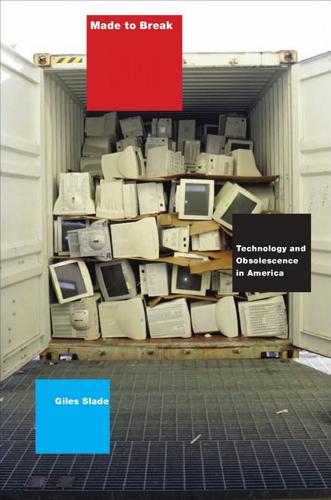
Made to Break: Technology and Obsolescence in America
by
Giles Slade
Published 14 Apr 2006
As we have seen in the preceding chapters, psychological obsolescence is one of a complex set of corporate strategies firs adopted in the 1920s to confront the challenge of overproduction by creating an endlessly renewable market for goods. Much earlier—in 1832—the Cambridge mathematics professor Charles Babbage firs described technological obsolescence as an inherent (but unnamed) phenomenon created by the industrial revolution.4 Both kinds of obsolescence have since been wholeheartedly embraced by American industry, for all kinds of goods, from pantyhose to skateboards. But as Moore’s Law predicts, the rate at which consumer electronics become obsolete is unique, because of integrated chip technology and miniaturization.
…
Cell Phones and E-Waste 1. Betty Fishbein, Waste in the Wireless World (New York: Inform, 2001), pp. 22, 27. 2. Silicon Valley Toxics Coalition, Poison PCs and Toxic TVs: California’s Biggest Environmental Crisis that You’ve Never Heard Of (San Jose: 2001), p. 8. 3. Fishbein, Waste in the Wireless World, p. 22. 4. Charles Babbage, On the Economy of Machines and Manufacturers (1832), available online from Project Gutenberg: http://www .gutenberg.net/etext03/cnmmm10.txt: “Machinery for producing any commodity in great demand seldom actually wears out; new improvements, by which the same operations can be executed either more quickly or better, generally superseding it long before that period arrives: indeed, to make such an improved machine profitable it is usually reckoned that in fi e years it ought to have paid itself,and in ten to be superseded by a better.” 5.
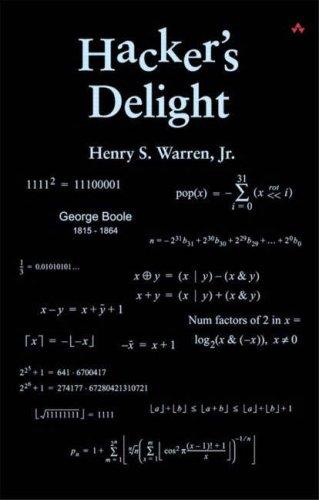
Hacker's Delight
by
Henry S. Warren
Published 26 Jul 2002
Software—Practice and Experience 16, 7 (July 1986), 641-652. [BGN] Burks, Arthur W., Goldstine, Herman H., and von Neumann, John. "Preliminary Discussion of the Logical Design of an Electronic Computing Instrument, Second Edition" (1947). In Papers of John von Neumann on Computing and Computing Theory, Volume 12 in the Charles Babbage Institute Reprint Series for the History of Computing, MIT Press, 1987. [CJS] Stephenson, Christopher J. Private communication. [Cohen] These rules were pointed out by Norman H. Cohen. [Cut] Cutland, Nigel J. Computability: An Introduction to Recursive Function Theory. Cambridge University Press, 1980.
…
[Irvine] Irvine, M. M. "Early Digital Computers at Bell Telephone Laboratories." IEEE Annals of the History of Computing 23, 3 (July-September 2001), 22-42. [JVN] von Neumann, John. "First Draft of a Report on the EDVAC." In Papers of John von Neumann on Computing and Computing Theory, Volume 12 in the Charles Babbage Institute Reprint Series for the History of Computing, MIT Press, 1987. [Ken] Found in a GNU C compiler for the RS/6000 that was ported by Richard Kenner. He attributes this to a 1992 PLDI conference paper by him and Torbjörn Granlund. [Knu1] Knuth, Donald E. The Art of Computer Programming, Volume 1, Third Edition: Fundamental Algorithms.

The Rationalist's Guide to the Galaxy: Superintelligent AI and the Geeks Who Are Trying to Save Humanity's Future
by
Tom Chivers
Published 12 Jun 2019
This has the advantage, say Russell and Norvig, of being ‘mathematically well defined and completely general’. And again, importantly, we don’t care at all about how a given agent achieves rationality. An AI that carefully mimics the human brain, to the point of having simulations of individual neurons, could be rational; an AI that runs entirely along the lines of a Turing machine, or Charles Babbage’s Difference Engine, metal gears and all, could be rational too. The mathematically defined concept of ‘rationality’ does not care what engine is used to run it. And, again, it doesn’t care whether or not your AI is conscious, or has emotions, or knows what love is. It’s purely a question of whether it achieves its goals, whatever they are.
…
‘And we can probably do that.’ But there may be times when we don’t want it to stay the same. Our values change over time. Holden Karnofsky, whose organisation OpenPhil supports a lot of AI safety research, pointed that out to me. ‘Imagine if we took the values of 1800 AD,’ he said. If an AI had been created then (Charles Babbage was working on it, sort of), and had become superintelligent and world-dominating, then would we want it to stay eternally the same? ‘If we entrenched those values for ever, if we said, “We really think the world should work this way, and so that’s the way we want the world to work for ever,” that would have been really bad.’

Troublemakers: Silicon Valley's Coming of Age
by
Leslie Berlin
Published 7 Nov 2017
Rick, Corbin, and Lily Dodd: you are my stars. Steve, Vera, Jessica, and Loren Berlin; Jim, Liz, Ryan, and Rob Dodd; Debbie, Brian, John, Olga, Katie, Lukas, Trevor, Sadie, Fiona, and James: you are the best. Abbreviations Used in Notes Section AA Al Alcorn ACM Courtesy Mike Markkula AR Courtesy Arthur Rock CBI Charles Babbage Institute, Oral History Collection CHM Computer History Museum, Oral History Collection EKF Courtesy Eugene Kleiner Family GC Courtesy Gene Carter HK Courtesy Howard Klein KK Courtesy Kathy Ku MB Courtesy Marty Browne MG Courtesy Manny Gerard NVCA National Venture Capital Association, Oral History Project collection PSC Pacific Studies Center Archives (now at SUSC) RM Courtesy Regis McKenna ROHO Bancroft Library, Oral History Collection (formerly Regional Oral History Office) RWT Courtesy Bob Taylor SB Courtesy Steve Bristow (now at SUSC) SK Courtesy Sandra Kurtzig SSH Courtesy Sally Smith Hughes SUOTL Stanford University, Office of Technology Licensing (now at SUSC) SUSC Stanford University, Special Collections SUSG Stanford University, Silicon Genesis interview collection SV Interview for Something Ventured video production XPA Xerox PARC Archives Interviewees Al Alcorn Bobby Alvarez Jack Balletto Andy Barnes Ann Bowers Steve Bristow Marty Browne Nolan Bushnell Brook Byers Gene Carter Lisa Kleiner Chanoff David Cochran Stan Cohen Joe Decuir Jerry Elkind Vineta [Alvarez] Eubank Doug Fairbairn Terry Floyd Manny Gerard Chuck Geschke Laura Gould Andy Grove John Hall Trip Hawkins Sally Hines Steve Jobs Pitch Johnson Alan Kay Joe Keenan Steve Kent Howard Klein Robert Kleiner Kathy Ku Sandy Kurtzig Butler Lampson Tom Lavey Ann Kieffaber Marty Manley Natalie Jean Marine-Street Mike Markkula Bob Maxfield Kathie Maxfield Steve Mayer Regis McKenna Burt McMurtry Carla Meninsky Bob Metcalfe Rich Moran George Murphy Severo Ornstein Bill Osborn Chuck Peddle Bill Pitts Jim Queen Ron Raffensperger Niels Reimers Arthur Rock Eric Schmidt Lizbeth Seckler John Shoch Dick Shoup Lenny Siegel Jeff Smith Phil Smith Bill Spencer Fawn Alvarez Talbott Bob Taylor Larry Tesler Chuck Thacker Don Valentine Kurt Wallace Barry Wessler Bryant York About the Author © ANNE BARRY LESLIE BERLIN is Project Historian for the Silicon Valley Archives at Stanford University.
…
Licklider and the Revolution That Made Computing Personal (New York: Viking, 2001): 266. The IPTO budget rose from $15 million to $19.6 million during the years Taylor served as director; Arthur L. Norberg and Judy E. O’Neill, A History of the Information Processing Techniques Office of the Defense Advanced Research Projects Agency (Minneapolis, MN: Charles Babbage Institute, October 1992): 119. 4. Bob Taylor to Eugene G. Fubini, March 31, 1967, RWT. 5. This story is from Wessler’s comments at Taylor’s retirement party. 6. Waldrop, The Dream Machine: 265. 7. Taylor’s adviser was Lloyd A. Jeffress. 8. For a hilarious depiction of the waiting game that was batch processing, see the two-minute “Ellis D.
…
Return to the Little Kingdom: How Apple and Steve Jobs Changed the World. London, UK: Overlook Press, 2010. Mukherjee, Siddhartha. The Gene: An Intimate History. New York: Scribner, 2016. Norberg, Arthur L., and Judy E. O’Neill. A History of the Information Processing Techniques Office of the Defense Advanced Research Projects Agency. Minneapolis: Charles Babbage Institute, 1992. Noyce, Robert N., and Marcian E. Hoff, Jr. “A History of Microprocessor Development at Intel.” IEEE Micro, February 1981: 8–21. O’Mara, Margaret Pugh. Cities of Knowledge: Cold War Science and the Search for the Next Silicon Valley. Princeton, NJ: Princeton University Press, 2004.
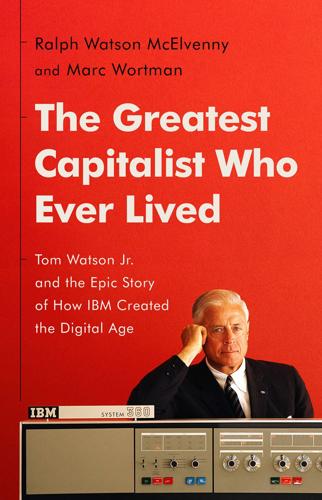
The Greatest Capitalist Who Ever Lived: Tom Watson Jr. And the Epic Story of How IBM Created the Digital Age
by
Ralph Watson McElvenny
and
Marc Wortman
Published 14 Oct 2023
Mark Smith, Toward Rational Exuberance: The Evolution of the Modern Stock Market (New York: Farrar, Straus and Giroux, 2001), 174–175. 5. Watson Jr., Father, Son & Co., 295. 6. Emerson W. Pugh, Lyle R. Johnson, and John H. Palmer, IBM’s 360 and Early 370 Systems (Cambridge, MA: MIT Press, 1991), 652–653. 7. Gene Amdahl, interviewed by Arthur L. Norberg, 1989, Charles Babbage Institute, 72, retrieved from the University of Minnesota Digital Conservancy, https://hdl.handle.net/11299/104341. 8. Pugh, Building IBM, 237–242. 9. “Our Labs,” IBM, https://research.ibm.com/labs/. 10. Thomas J. Watson Jr., “Good Design Is Good Business,” in Thomas F. Schutte, ed., The Uneasy Coalition: Design in Corporate America (Philadelphia: University of Pennsylvania Press, 1975), 66. 11.
…
Watson Jr., Father, Son & Co., 363. 59. Evans, unpublished“Memoir,” chap. 1, 4; Dean Phypers, telephone interview with authors, December 7, 2020. 60. Dean Phypers, telephone interview, December 7, 2020. 61. Watson Jr., Father, Son & Co., 363. 62. Gene Amdahl, interviewed by Arthur L. Norberg, 1989, Charles Babbage Institute, 65, retrieved from the University of Minnesota Digital Conservancy, https://hdl.handle.net/11299/104341. 63. Evans, unpublished “Memoir,” chap. 1, 14. 64. Evans, unpublished “Memoir,” chap. 6, 7–8. 65. Evans, unpublished “Memoir,” chap. 1, 15. 66. Evans, unpublished “Memoir,” chap. 6, 8. 67.
…
Watson Jr., Memorandum, August 28, 1963, at “Watson Jr. memo about CDC 6600,” Computer History Museum, www.computerhistory.org/revolution/supercomputers/10/33/62. 33. Pugh, Building IBM, 237. 34. “Seymour Cray, Computer Industry Pioneer and Father of the Supercomputer, Dies at 71,” New York Times, October 6, 1996. 35. Evans, unpublished “Memoir,” chap. 3, 23. 36. Gene Amdahl, interviewed by Arthur L. Norberg, 1989, Charles Babbage Institute, 73, retrieved from the University of Minnesota Digital Conservancy, https://hdl.handle.net/11299/104341. 37. Pugh, Building IBM, Appendix D: IBM U.S Product Revenues, 326. 38. Emerson W. Pugh, Lyle R. Johnson, and John H. Palmer, IBM’s 360 and Early 370 Systems (Cambridge, MA: MIT Press, 1991), 114. 39. “1401 Data Processing System,” IBM, www.ibm.com/ibm/history/exhibits/mainframe/mainframe_PP1401.html; Dag Spicer, “IBM 1401: A Legend Comes Back to Life,” CORE Magazine, Computer History Museum (2009), 10–15. 40.
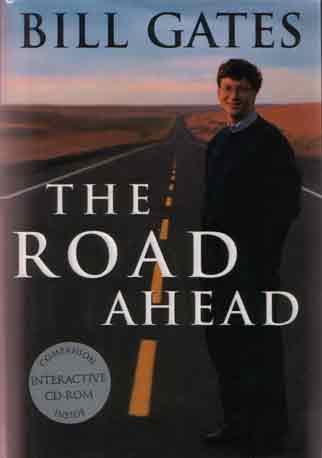
The Road Ahead
by
Bill Gates
,
Nathan Myhrvold
and
Peter Rinearson
Published 15 Nov 1995
Reliable mechanical calculators, powered by rotating dials and gears, descendants of the Stepped Reckoner, were the mainstay of business until their electronic counterparts replaced them. When I was a boy, a cash register was essentially a mechanical calculator linked to a cash drawer. More than a century and a half ago, a visionary British mathematician glimpsed the possibility of the computer and that glimpse made him famous even in his day. Charles Babbage was a professor of mathematics at Cambridge University who conceived the possibility of a mechanical device that would be able to perform a string of related calculations. As early as the 1830s, he was drawn to the idea that information could be manipulated by a machine if the information could be converted into numbers first.
…
Governments have long understood the importance of keeping information private, for both economic and military reasons. The need to make personal, commercial, military, or diplomatic messages secure (or to break into them) has attracted powerful intellects through the generations. It is very satisfying to break an encoded message. Charles Babbage, who made dramatic advances in the art of code breaking in the mid-1800s, wrote: "Deciphering is, in my opinion, one of the most fascinating of arts, and I fear I have wasted upon it more time than it deserves." I discovered its fascination as a kid when, like kids everywhere, a bunch of us played with simple ciphers.
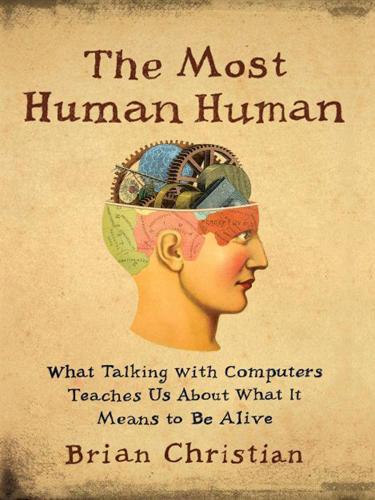
The Most Human Human: What Talking With Computers Teaches Us About What It Means to Be Alive
by
Brian Christian
Published 1 Mar 2011
Thus, in one fell swoop, the master’s thesis of twenty-one-year-old Claude Shannon will break the ground for the processor and for digital mathematics. And it will make his future wife’s profession—although he hasn’t met her yet—obsolete. And it does more than that. It forms a major part of the recent history—from the mechanical logic gates of Charles Babbage through the integrated circuits in our computers today—that ends up amounting to a huge blow to humans’ unique claim to and dominance of the area of “reasoning.” Computers, lacking almost everything else that makes humans humans, have our unique piece in spades. They have more of it than we do.
…
Ramachandran and Sandra Blakeslee, Phantoms in the Brain: Probing the Mysteries of the Human Mind (New York: William Morrow, 1998). 10 Alan Turing, “On Computable Numbers, with an Application to the Entscheidungsproblem,” Proceedings of the London Mathematical Society, 1937, 2nd ser., 42, no. 1 (1937), pp. 230–65. 11 Ada Lovelace’s remarks come from her translation (and notes thereupon) of Luigi Federico Menabrea’s “Sketch of the Analytical Engine Invented by Charles Babbage, Esq.,” in Scientific Memoirs, edited by Richard Taylor (London, 1843). 12 Alan Turing, “Computing Machinery and Intelligence,” Mind 59, no. 236 (October 1950), pp. 433–60. 13 For more on the idea of “radical choice,” see, e.g., Sartre, “Existentialism Is a Humanism,” especially Sartre’s discussion of a painter wondering “what painting ought he to make” and a student who came to ask Sartre’s advice about an ethical dilemma. 14 Aristotle’s arguments: See, e.g., The Nicomachean Ethics. 15 For a publicly traded company: Nobel Prize winner, and (says the Economist) “the most influential economist of the second half of the 20th century,” Milton Friedman wrote a piece in the New York Times Magazine in 1970 titled “The Social Responsibility of Business Is to Increase Its Profits.”

The Big Nine: How the Tech Titans and Their Thinking Machines Could Warp Humanity
by
Amy Webb
Published 5 Mar 2019
If this was true, and if we had until this point been capable of creating lifelike ducks and tiny monks, then it should follow that someday, humans could create replicas of themselves—and build a variety of intelligent, thinking machines. Could a Thinking Machine Be Built? By the 1830s, mathematicians, engineers, and scientists had started tinkering, hoping to build machines capable of doing the same calculations as human “computers.” English mathematician Ada Lovelace and scientist Charles Babbage invented a machine called the “Difference Engine” and then later postulated a more advanced “Analytical Engine,” which used a series of predetermined steps to solve mathematical problems. Babbage hadn’t conceived that the machine could do anything beyond calculating numbers. It was Lovelace who, in the footnotes of a scientific paper she was translating, went off on a brilliant tangent speculating that a more powerful version of the Engine could be used in other ways.13 If the machine could manipulate symbols, which themselves could be assigned to different things (such as musical notes), then the Engine could be used to “think” outside of mathematics.
…
Thus, in the case of a controversial discussion, two philosophers could sit down at a table and just calculating, like two mathematicians, they could say, ‘Let us check it up.’” 12. “Apes to Androids: Is Man a Machine as La Mettrie Suggests?,” http://www.charliemccarron.com/man_a_machine/. 13. Luigi Manabrea, Sketch of the Analytical Engine Invented by Charles Babbage (London: Richard and John E. Taylor, 1843). 14. Desmond MacHale, The Life and Work of George Boole: A Prelude to the Digital Age, New ed. (Cork University Press, 2014). 15. Logician Martin Davis explains it best in The Universal Computer: The Road from Leibniz to Turing: “Turing knew that an algorithm is typically specified by a list of rules that a person can follow in a precise mechanical manner, like a recipe in a cookbook.

One Good Turn: A Natural History of the Screwdriver and the Screw
by
Witold Rybczynski
Published 27 Mar 2000
When the United States developed its own, competing screw industry, it adopted a slightly different standard; continental Europe, which followed the metric system, likewise went its own way. CHAPTER SIX Mechanical Bent MAUDSLAY HAD WHAT IS Often called a mechanical bent. So did the men he trained. Whitworth was the best known, but there were others: Joseph Clement, whom Charles Babbage commissioned to build his famous difference engine, the calculating machine that anticipated the modern computer; Richard Roberts, whose metal planing machine was capable of such precision that he used it to manufacture iron billiard tables; and Maudslay’s personal assistant, James Nasmyth, who went on to invent the steam hammer and the pile driver.

The Stack: On Software and Sovereignty
by
Benjamin H. Bratton
Published 19 Feb 2016
When those forms are computational (as for Google), that passage is the capitalized translation of interactions into data and data into interactions, and the movement of these into and out of central locations (such as strongly defended data centers). As we will see, the genealogy of platforms is diverse and seemingly contradictory. Roman urban planners, the encyclopedia of John Wilkins, Charles Babbage, the Commissioners’ Grid Plan of 1811, John Maynard Keynes, Friedrich Hayek, Lady Ada Byron, Vint Cerf, and others, all contribute to the parentage of platforms, and it is their eccentricity and exteriority from normal state and market institutional models, combining elements of these as well as of machine engineering, that has made them so successful in redrawing the effective terms of global systems.
…
For a nontechnical overview, see James Gleick, The Information: A History, A Theory, A Flood (New York: Pantheon Books, 2011), especially for a history of longitudinal demarcation, network synchronization, and time zones. 7. The history of notational systems deserves more than a few dissertations. In order to engineer his difference engine, Charles Babbage first had to invent a now long-forgotten notational system for how parts would be manufactured to make sure that one worker's gesture would be compatible with that of another. Architects know Louis Kahn's notational system to analyze and plan the movement of autonomous agents through pathways, used but once for his unrealized project to redesign automobile traffic flows in Philadelphia.
…
This conceptual shift is important to how we hope to consider reforming The Stack. One of Turing's signal achievements is to show that an artificial “machine” could approach, and even approximate, the scope of natural computation, as defined in a particular way. His innovation was the specific pairing of formal logic with industrial technology that was, even after Charles Babbage and Ada Lovelace's Victorian-era calculating machines, by no means obvious in its implications. For measuring the significance of that pairing in relation to The Stack, it is important to distinguish the limits of formal computation, on the one hand, from what the limits of actual computational technologies can really do, on the other.
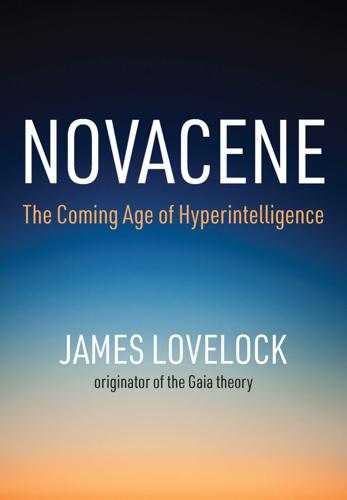
Novacene: The Coming Age of Hyperintelligence
by
James Lovelock
Published 27 Aug 2019
It is not simply the invention of computers that started the Novacene. Nor was it the discovery that semiconductor crystals such as silicon or gallium arsenide could be used to make intricate and complex machines. Neither the idea of artificial intelligence nor the computer itself was crucial to the emergence of this new age. Remember that the inventor Charles Babbage made the first computer in the early nineteenth century, and the first programs were written by Ada Lovelace, the daughter of the poet Lord Byron. If the Novacene were no more than an idea, it was born 200 years ago. In reality, the Novacene, like the Anthropocene, is about engineering. The crucial step that started the Novacene was, I think, the need to use computers to design and make themselves, just as AlpaZero taught itself to play Go.

How Not to Network a Nation: The Uneasy History of the Soviet Internet (Information Policy)
by
Benjamin Peters
Published 2 Jun 2016
Leslie, The Cold War and American Science: The Military-Industrial-Academic Complex (New York: Columbia University Press, 1993), 203–231. 37. Kristie Mackrasis, Seduced by Secrets: Inside the Stasi’s Spy-Tech World (New York: Cambridge University Press, 2014), 23, 133, 139, esp. 112–140. 38. Judy O’Neill, “Interview with Paul Baran,” Charles Babbage Institute, OH 182, March 5, 1990, Menlo Park, CA, accessed April 15, 2015, http://www.gtnoise.net/classes/cs7001/fall_2008/readings/baran-int.pdf. 39. Ibid.; see also Stewart Brand, “Founding Father,” Wired 9 (3) (1991), accessed April 15, 2015, http://archive.wired.com/wired/archive/9.03/baran_pr.html. 40.
…
An Economic History of the USSR, 1917–1991. 3rd ed. New York: Penguin Group, 1992. Odom, William E. The Collapse of the Soviet Military. New Haven: Yale University Press, 1998. O’Hearn, Dennis. “The Consumer Second Economy: Size and Effects.” Soviet Studies 32 (2) (April 1980): 218–234. O’Neill, Judy. “Interview with Paul Baran.” Charles Babbage Institute, OH 182, Menlo Park, CA, March 5, 1990. Accessed April 15, 2015, http://www.gtnoise.net/classes/cs7001/fall_2008/readings/baran-int.pdf. Ong, Walter. Orality and Literacy. New York: Routledge, 1972. O’Shea, Michael. The Brain: A Very Short Introduction. New York: Oxford University Press, 2005.
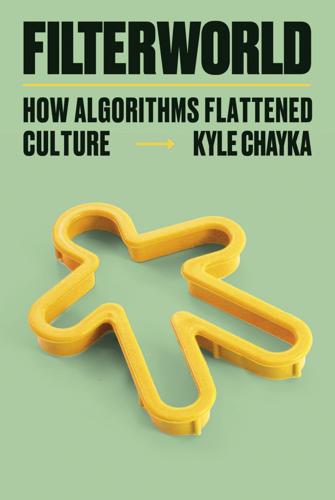
Filterworld: How Algorithms Flattened Culture
by
Kyle Chayka
Published 15 Jan 2024
The long arc of algorithm’s etymology shows that calculations are a product of human art and labor as much as repeatable scientific law. THE INVENTION OF COMPUTER PROGRAMMING All computers are built from series of equations performed repeatedly. Results are encoded in zeros and ones and then passed on through yet more equations to achieve an outcome. In 1822, the British inventor Charles Babbage outlined his concept for the “application of machinery to the computation of astronomical and mathematical tables”—a way to automate calculations using an assemblage of numbered wheels and gears called the Difference Engine. The machine was never fully built, but later executions look something like the inside of a piano, with wheels in long rows instead of hammers.
…
And any computational system that can compute anything that a Turing Machine can is said to be “Turing-complete.” All programming languages, for example, are Turing-complete because they can model any kind of equation. (Even the spreadsheet software Excel became Turing-complete in 2021.) What Turing correctly concluded was that any computing machine would be able to do the work of any other—even Charles Babbage’s nineteenth-century Analytical Engine could theoretically perform the complex tasks that our laptops do now, if given infinite scale and time. There is something of the clash between mechanical rules and human operation within Turing’s life, too. In 1952, Turing was charged with gross indecency for “homosexual expression”—the legalistic phrase for having sex with another man—during messy legal proceedings that he initiated after his own house was robbed.
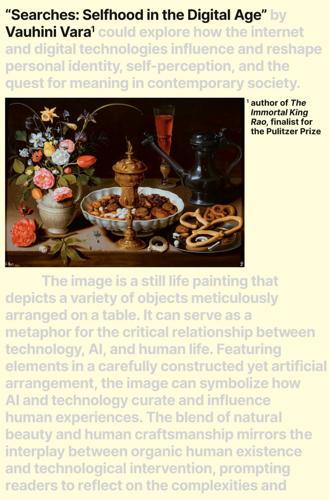
Searches: Selfhood in the Digital Age
by
Vauhini Vara
Published 8 Apr 2025
Literary scholars often situate it within a broader critique of European colonialism embedded in Gulliver’s Travels, reading the engine as a parody of the expansionist European rulers who, in Swift’s time, were deploying a potent combination of technical innovation and labor exploitation to consolidate their power and wealth at their subjects’ expense. For computer historians, though, the engine is a foundational blueprint for real-life computers that followed. Charles Babbage, considered the inventor of the computer, even wrote in a letter describing his concept, in 1822, that “the philosophers of Laputa may be called up to dispute my claim to originality.” In 1950, the computer scientist Alan Turing name-checked Babbage in “Computing Machinery and Intelligence,” a seminal paper in which he proposed the concept that would come to be known as the Turing test—where a judge converses with both a computer and a human and tries to tell the difference.
…
By the time Adam Smith wrote The Wealth of Nations, in 1776, he proclaimed that “the establishment of any new manufacture, of any new branch of commerce, or of any new practice in agriculture, is always a speculation, from which the projector”—that is, the investor—“promises himself extraordinary profits.” Technologists, whose work has been tied up with commerce from the start, have been especially comfortable both with speculation and with the risks inherent to it. Charles Babbage’s protégée Ada Lovelace wrote that computers’ future abilities “may not yet be possible to foresee,” then added, “Nevertheless all will probably concur in feeling that the completion of the Difference Engine”—their computer—“would be far preferable to the non-completion of any calculating engine at all.”
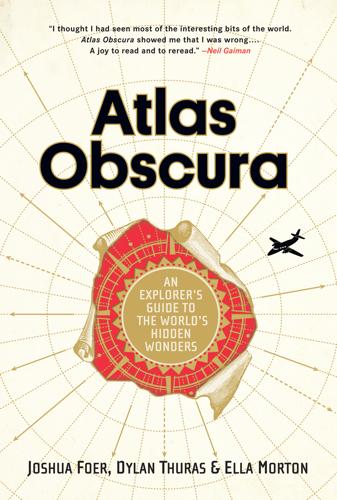
Atlas Obscura: An Explorer's Guide to the World's Hidden Wonders
by
Joshua Foer
,
Dylan Thuras
and
Ella Morton
Published 19 Sep 2016
Postman’s Park, St Martin’s Le-Grand, London. The park is near the St. Paul’s station on the Central Tube line. 51.517534 0.097751 Postman’s Park contains a wall of tragic yet inspiring epitaphs dedicated to self-sacrificing individuals. Difference Engine #2 LONDON There was almost a Victorian computer. Charles Babbage came achingly close with his 1822 “Difference Engine,” a design for a hulking gadget with cranks and gears capable of generating mathematical tables. The machine offered a well-thought-out solution to the problem of human error in complex calculations, but it proved too large, complicated, and expensive to construct.
…
It functioned flawlessly, confirming Babbage’s rightful place in the annals of computing history. The engine, which features a printing apparatus added in 2002, is now on display at the museum, along with half of Babbage’s brain. (The other half is housed at the Hunterian Museum, also in London.) Science Museum, Exhibition Road, London. 51.498190 0.173972 Now functional: Charles Babbage’s Victorian computer. Jeremy Bentham’s Auto Icon LONDON Jeremy Bentham has been sitting in a corridor at University College London since 1850. The moral philosopher, whose advocacy of animal welfare, prison reform, universal suffrage, and gay rights was far ahead of his time, left a will with specific instructions on the treatment of his corpse.
…
Musée Dupuytren Paris After running out of money and being forced to close, this collection of thousands of anatomical waxes, pathological models, and abnormal physiological specimens sat neglected for 30 years before reopening in 1967. Hunterian Museum London The Hunterian Museum’s collection includes half the brain of mathematician Charles Babbage, Winston Churchill’s dentures, and the skeleton of a famed Irish giant. The 7′7″ skeleton of Charles Byrne is on view at the Hunterian Museum. Park of the Monsters BOMARZO, LAZIO The stone sculptures in the Parco dei Mostri emerged from the tormented mind of 16th-century Italian prince Pier Francesco Orsini.

Power and Progress: Our Thousand-Year Struggle Over Technology and Prosperity
by
Daron Acemoglu
and
Simon Johnson
Published 15 May 2023
—Daniel Defoe, An Essay upon Projects, 1697 The triumph of the industrial arts will advance the cause of civilization more rapidly than its warmest advocates could have hoped, and contribute to the permanent prosperity and strength of the country, far more than the most splendid victories of successful war. The influences thus engendered, the arts thus developed, will long continue to shed their beneficent effects over countries more extensive than those which the sceptre of England rules. —Charles Babbage, The Exposition of 1851: Views of the Industry, the Science, and the Government of England, 1851 On Thursday, June 12, 1851, a group of agricultural laborers from Surrey, in the south of England, donned their best clothing and boarded a train bound for London. Their day out in the capital was not intended for idle sightseeing.
…
Eli Whitney’s gin boosted cotton production in the US South, paving the way for the expansion and intensification of slavery. 10. Eli Whitney was also a pioneer in the adoption of interchangeable parts in the US North, increasing the productivity of unskilled labor and reducing the need for skilled labor. This illustration shows machine gears designed by Charles Babbage, who was in pursuit of a “fully-automatic calculating machine.” 11. George Stephenson’s Rocket decisively won the Rainhill Trials in 1829 and became the basis for designs that swept the world. 12. Archimedes, built in the 1880s, waiting for passengers in Euston Station. Railways paid high wages and spearheaded the expansion of British industry. 13.
…
She also views the “bourgeois virtues” as unabashedly positive and does not share our emphasis that the emergent vision was attempting to rise within the existing system and thus was not likely to be conducive to a broad-based enrichment or favor the working classes. Our discussion of the institutional changes in England draws heavily on Acemoglu, Johnson, and Robinson (2005b) and Acemoglu and Robinson (2012). Opening epigraphs. Defoe (1697 [1887], first line of the Author’s Introduction); Charles Babbage (1851 [1968], 103). The story about workers visiting the Crystal Palace is from Leapman (2001, Chapter 1). Details on what was on display at the Great Exhibition are from the Official Catalogue of the Great Exhibition of the Works of Industry of All Nations, 1851 (Spicer Brothers, London). For more context, see Auerbach (1999) and Shears (2017).
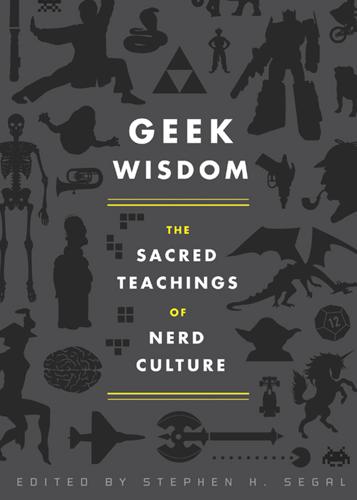
Geek Wisdom
by
Stephen H. Segal
Published 2 Aug 2011
Forbidden Planet, the greatest science-fiction film ever inspired by Shakespeare, explored the id more tangibly in 1956. “ONLY SPARTAN WOMEN GIVE BIRTH TO REAL MEN.” —QUEEN GORGO, 300 “THE ANALYTICAL ENGINE WEAVES ALGEBRAIC PATTERNS, JUST AS THE JACQUARD LOOM WEAVES FLOWERS AND LEAVES.” —ADA LOVELACE, ON CHARLES BABBAGE’S ANALYTICAL ENGINE THE REAL QUEEN GORGO of Sparta was a political mover and shaker on par with the modern age’s most respected power brokers. She was also a geek and early cryptanalyst, helping her fellow Spartans find the code hidden in a chiseled wooden board that warned of impending Persian attack.

Journey to Crossrail
by
Stephen Halliday
An early (and for a woman of that time uncharacteristic) interest in mathematics and logic was encouraged by her mother, possibly as a perceived antidote to the reckless behaviour and perceived insanity of Byron himself. As a young woman, and with her mother’s encouragement, she met Charles Dickens and the scientist Michael Faraday. More significantly, through an introduction by her personal tutor Mary Somerville she met the mathematician Charles Babbage, with whom she worked on his Analytical Engine, an idea for an early mechanical computer. Mary Somerville, herself a Mathematician, later gave her name to Somerville College, Oxford. Between 1842 and 1843, Ada translated an article by Italian military engineer Luigi Menabrea together with notes which resemble a simple computer programme.

Nerds on Wall Street: Math, Machines and Wired Markets
by
David J. Leinweber
Published 31 Dec 2008
Here we see two specialists celebrating the first bagging1 of a buy-side trader. 12 Nerds on Wall Str eet So far, the technologies we’re talking may sound rather low-tech: roofs, chalk, hands. Here’s what a computer looked like in 1823, the Difference Engine, invented by the famously brilliant, eccentric, and obnoxious Charles Babbage: Here’s Babbage, who said, “I wish to God these calculations had been executed by steam.” Here’s Babbage’s government sponsor, Prime Minister Robert Peel, who said, “What shall we do to get rid of Mr. Babbage and his calculating machine?” Babbage was stunningly smart, and even more stunningly insufferable.
…
In the 1930s, if you said you had six computers in your office, this is what you meant—the NYSE computing department circa 1930: An Illustrated History of Wir ed Markets 23 “Computer” was a job, not a thing. If you said you had a supercomputer, this is what you meant. At about this time, the technological legacy of Charles Babbage stirred again at the Moore School of Engineering in Philadelphia. ENIAC (short for electronic numerical integrator and calculator), the first electronic computer, was developed in 1946 by J. Presper Eckert and John Mauchly. It weighed 30,000 pounds, had a 900-bit memory, ran at .017 MIPS (million instructions per second), and blew a tube every 45 minutes.
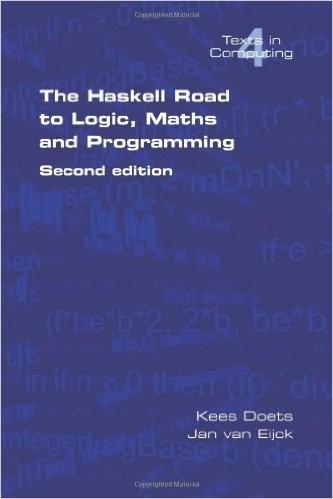
The Haskell Road to Logic, Maths and Programming
by
Kees Doets
,
Jan van Eijck
and
Jan Eijck
Published 15 Jan 2004
Here is a concrete example of computing difference sequences until we hit at a constant sequence: -12 -11 1 6 17 16 45 39 22 6 112 67 28 6 213 101 34 6 354 141 40 6 541 187 46 6 We find that the sequence of third differences is constant, which means that the form of the original sequence is a polynomial of degree 3. To find the next number 334 CHAPTER 9. POLYNOMIALS in the sequence, just take the sum of the last elements of the rows. This gives 6 + 46 + 187 + 541 = 780. Charles Babbage (1791–1871), one of the founding fathers of computer science, used these observations in the design of his difference engine. We will give a Haskell version of the machine. According to Proposition 9.2, if a given input list has a polynomial form of degree k, then after k steps of taking differences the list is reduced to a constant list: POL> difs [-12,-11,6,45,112,213,354,541,780,1077] [1,17,39,67,101,141,187,239,297] POL> difs [1,17,39,67,101,141,187,239,297] [16,22,28,34,40,46,52,58] POL> difs [16,22,28,34,40,46,52,58] [6,6,6,6,6,6,6] The following function keeps generating difference lists until the differences get constant: difLists :: [[Integer]]->[[Integer]] difLists [] = [] difLists lists@(xs:xss) = if constant xs then lists else difLists ((difs xs):lists) where constant (n:m:ms) = all (==n) (m:ms) constant _ = error "lack of data or not a polynomial fct" This gives the lists of all the difference lists that were generated from the initial sequence, with the constant list upfront.
…
In the implementation: POL> (1 + z + z^2 + z^3 + z^4 + z^5)^3 [1,3,6,10,15,21,25,27,27,25,21,15,10,6,3,1] Exercise 9.20 Use polynomials to find out how many ways there are of selecting ten red, blue or white marbles from a vase, in such manner that the number of marbles from each colour is prime. 9.5 Further Reading Charles Babbage’s difference engine is described in [Lar34] (reprinted in [Bab61]), and by Babbage himself in his memoirs [Bab94]. The memoirs are very amusing: Among the various questions which have been asked respecting the Difference Engine, I will mention a few of the most remarkable: one gentleman addressed me thus: ‘Pray, Mr Babbage, can you explain to me in two words what is the principle of your machine?’
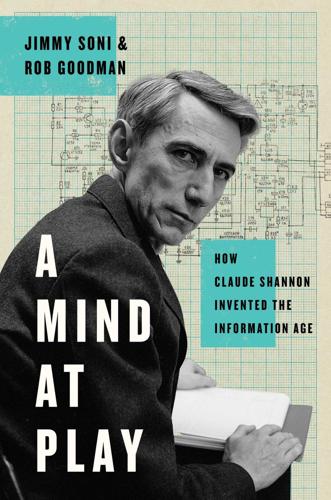
A Mind at Play: How Claude Shannon Invented the Information Age
by
Jimmy Soni
and
Rob Goodman
Published 17 Jul 2017
“If the prospect of building devices”: Thomas Perkins, Valley Boy: The Education of Tom Perkins (New York: Gotham, 2007), 72. “the world’s first”: Lawrence Fisher, “Bernard M. Oliver Is Dead at 79; Led Hewlett-Packard Research,” New York Times, November 28, 1995. “We became friends”: Arthur L. Norberg, “An Interview with Bernard More Oliver,” Charles Babbage Institute for the History of Information Processing, August 9, 1985. “One day I was talking casually”: John Pierce, “Creative Thinking,” lecture, 1951. cowrote a key paper: Bernard More Oliver, John Pierce, and Claude Shannon, “The Philosophy of PCM,” Proceedings of the IRE 36, no. 11 (November 1948): 1324–31.
…
A Beautiful Mind: The Life of Mathematical Genius and Nobel Laureate John Nash. New York: Simon & Schuster, 1998. National Register of Historic Places application. Edmund Dwight House. Massachusetts Cultural Resource Information System. mhc-macris.net/Details.aspx?MhcId=WNT.19. Norberg, Arthur L. “An Interview with Bernard More Oliver.” Charles Babbage Institute for the History of Information Processing, August 9, 1985. “NSA Regulation Number 11-3.” National Security Agency, January 22, 1953. ia601409.us.archive.org/16/items/41788579082758/41788579082758.pdf. Nyquist, Harry. “Certain Factors Affecting Telegraph Speed.” Bell System Technical Journal (April 1924): 324–46. ———.

Lonely Planet London
by
Lonely Planet
Published 22 Apr 2012
Hunterian Museum Museum Offline map Google map (www.rcseng.ac.uk/museums; Royal College of Surgeons, 35-43 Lincoln’s Inn Fields WC2; 10am-5pm Tue-Sat; Holborn) The collection of anatomical specimens of pioneering surgeon John Hunter (1728–93) inspired this fascinating, slightly morbid, little-known, yet fantastic London museum. Among the more bizarre items on display are the skeleton of a 2.3m giant, half of mathematician Charles Babbage’s brain and, hilariously, Winston Churchill’s dentures. Thanks to a massive refurbishment some years back, the atmosphere is less gory and allows decent viewing of such things as animal digestive systems (forensically documented in formaldehyde) and the ‘hearing organ’ of a blue whale. Upstairs there’s a display on surgery techniques, which will impress and disgust in equal measure.
…
Nostalgic parents will delight in the Apollo 10 command module in the Making the Modern World gallery . An intriguing detour on the 1st floor is Listening Post , a haunting immersion into the ‘sound’ and chatter of the internet interspersed with thoughtful silence. The History of Computing on the 2nd floor displays some intriguing devices, from Charles Babbage’s analytical engine to hulking valve-based computers. The 3rd-floor Flight Gallery (free tours 1pm most days) is a favourite places for children, with its gliders, hot-air balloon and varied aircraft. The hi-tech Wellcome Wing has an IMAX Cinema (£10) that shows the usual crop of travelogues, space adventures and dinosaur attacks in stunning 3-D.
…
The hi-tech Wellcome Wing has an IMAX Cinema (£10) that shows the usual crop of travelogues, space adventures and dinosaur attacks in stunning 3-D. If you’ve kids under the age of five, pop down to the basement and The Garden , where there’s a fun-filled play zone, including a water-play area, besieged by tots in red waterproof smocks. Don’t Miss... » Apollo 10 command module » Stephenson’s Rocket » Listening Post » Charles Babbage’s analytical engine Practicalities » Offline map » 0870 870 4868 » www.sciencemuseum.org.uk » Exhibition Rd SW7 » admission free » 10am-6pm » » South Kensington Wellington Arch Monument Offline map Google map ( 7930 2726; www.english-heritage.org.uk; Hyde Park Corner W1; adult/child £3.90/2.30, with Apsley House £7.90/4.70; 10am-5pm Wed-Sun Apr-Oct, to 4pm Nov-Mar; ; Hyde Park Corner) This magnificent neoclassical 1826 arch, facing Apsley House in the green space strangled by the Hyde Park Corner roundabout, originally faced the Hyde Park Screen, but was shunted here in 1882 for road widening.
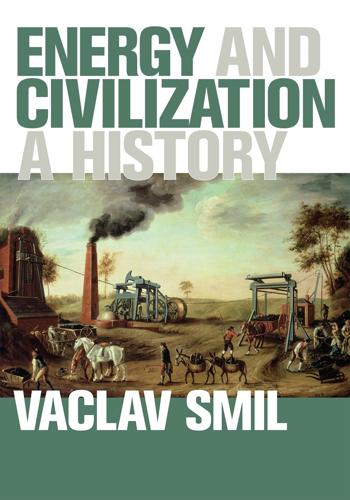
Energy and Civilization: A History
by
Vaclav Smil
Published 11 May 2017
Maxwell’s formulation of the theory of electromagnetism opened the way to the still unfolding exploits of modern wireless electronics that have brought inexpensive instant communication and global connectivity: the e-world of the twenty-first century rests on Maxwell’s insights. Regular radio broadcasts started in 1920. BBC offered the first scheduled television service in 1936, and RCA followed suit in 1939 (Huurdeman 2003). Mechanical calculators—starting with prescient designs by Charles Babbage and Edward Scheutz after 1820 (Lindgren 1990; Swade 1991) and culminating in the establishment of IBM in 1911—were finally left behind with the development of the first electronic computers during World War II. But these machines—the British Mark, the U.S. Harvard Mark 1, and the ENIAC—were unique, dedicated, massive (room-sized, to accommodate thousands of glass vacuum tubes) devices with no immediate commercial prospects.
…
BCE 1,700,000 + Oldowan stone tools (<0.5 m of edge/kg of stone) 250,000 + Acheulean stone tools 150,000 + Mousterian stone flake tools 50,000 + Bone objects 30,000 + Aurignacian stone tools Bow and stone arrows 15,000 + Magdalenian stone tools (12 m of edge/kg of stone) 9,000 + Sheep domesticated in the Middle East 7,400 + Corn in Oaxaca Valley 7,000 + Wheat in Mesopotamia Pigs domesticated in the Middle East 6,500 + Cattle domesticated in the Middle East 6,000 + Copper artifacts more common in the Middle East 5,000 + Barley in Egypt Corn in the basin of Mexico 4,400 + Potatoes in highland Peru and Bolivia 4,000 + Light wooden plows in Mesopotamia 3,500 + Pack asses in the Middle East Wooden ships in the Mediterranean Pottery and bricks fired in kilns in Mesopotamia Irrigation in Mesopotamia 3,200 + Wheeled vehicles in Uruk 3,000 + Square sail in Egypt Draft oxen in Mesopotamia Camel domesticated Potter’s wheel in Mesopotamia 2,800 + Pyramid construction in Egypt 2,500 + Bronze in Mesopotamia Small glass objects in Egypt 2,000 + Spoked wheel in Mesopotamia Horse-drawn vehicles in Egypt Shaduf in Mesopotamia 1,700 + Horse riding 1,500 + Copper in China Paddy rice in China Axle lubricants in the Middle East 1,400 + Iron in Mesopotamia 1,300 + Seed drill in Mesopotamia Horse-drawn chariots in China 1,200 + Iron more common in India, Middle East, Europe 800 + Mounted archers on Asian steppes Candles in the Middle East 600 + Tin in Greece Penteconter ships common in Greece Archimedean screw in Egyptian irrigation 500 + North Arabian camel saddle Trireme in Greece 400 + Crossbow in China 432 Parthenon completed 300 + Stirrups in China Gears in Egypt and Greece 312 Roman Via Appia and Aqua Appia completed 200 + Breastband harness in China Sailings to windward advances in China Batten-strengthened sails in China Percussion drilling in Sichuan Crank handle in China 150 + Iron moldboard plows in China 100 + Beginnings of collar harness in China House heating by coal in China Waterwheels in Greece and Rome Wheelbarrow in China Norias in the Middle East 80 + Hypocaust heating in Rome CE 300 Roman cursus publicus surpasses 80,000 km 600 + Windmills (Iran) 850 + Triangular sail in the Mediterranean 900 + Collar harness and horseshoes common in Europe Bamboo fire-lances in China 980 + Canal pound lock in China 1000 + Widespread adoption of waterwheels in Western Europe 1040 Clear directions for gunpowder preparation in China 1100 + Long bow in England 1150 + Windmills spreading in Western Europe 1200 + Inca road construction 1280 + Cannons in China 1300 + Gunpowder and cannons in Europe 1327 Beijing-Hangzhou Grand Canal (1,800 km long) completed 1350 + Handheld guns in Europe 1400 + Heavy draft horses in Europe Drainage windmills in the Netherlands Blast furnaces in the Rhine region 1420 + Portuguese caravels make longer sailings 1492 Columbus sails across the Atlantic 1497 Vasco da Gama sails to India 1519 Magellan’s Victoria circumnavigates the Earth 1550 + Large full-rigged sail ships with guns in Western Europe 1600 + Ball bearings in Western Europe 1640 + English coal mining expands 1690 Experiments with atmospheric steam engine (Denis Papin) 1698 Simple, small steam engine (Thomas Savery) 1709 Coke from bituminous coal (Abraham Darby) 1712 Atmospheric steam engine (Thomas Newcomen) 1745 Fantail for automatic turning of windmills 1750 + Intensive canal construction in Western Europe Use of coke spreads in English iron making Newcomen’s engine more common in English coal mines 1757 Precision-cutting lathe (Henry Maudslay) 1769 James Watt patents a separate condenser for steam engine 1770s Factories powered by waterwheels 1775 Watt’s patent extended to 1800 1782 Hot air balloon (Joseph and Etienne Montgolfier) 1794 Lamps with wick holders and glass chimneys (Aimé Argand) 1800 Electric battery (Alessandro Volta) 1800s Steamboats (Charlotte Dundas, Clermont) High-pressure steam engines (R. Trevithick, O. Evans) 1805 Steam-powered crane (John Rennie) Coal (town) gas in England 1808 Arc lamp (Humphrey Davy) 1809 Chilean nitrates discovered 1816 Mine safety lamp (Humphrey Davy) 1820s Designs of mechanical calculators (Charles Babbage) Iron ship hulls 1820 Electromagnetism (Hans C. Oersted) 1823 Silicon isolated (J. J. Berzelius) 1824 Portland cement (Joseph Aspdin) Aluminum isolated (Hans C. Oersted) 1825 Stockton-Darlington railway 1828 Hot blast in ironmaking (James Neilson) 1829 Rocket locomotive (Robert Stephenson) 1830s Railway construction takes off in England Steamship cross the Atlantic Mechanical grain reaper (Cyrus McCormick, Obed Hussey) 1830 Thermostat (Andrew Ure) Liverpool-Manchester railway 1832 Water turbine (Benoît Fourneyron) 1833 Steel plow (John Lane) Steamship Royal William crosses from Quebec to London 1834 Free-standing kitchen range (Philo P.
…
Reading, MA: Addison-Wesley. Subcommittee on Horse Nutrition. 1978. Nutrient Requirements of Horses. Washington, DC: NAS. Sullivan, R. J. 1990. The revolution of ideas: Widespread patenting and invention during the English Industrial Revolution. Journal of Economic History 50:349–362. Swade, D. 1991. Charles Babbage and His Calculating Engines. London: Science Museum. Taeuber, I. B. 1958. The Population of Japan. Princeton, NJ: Princeton University Press. Tainter, J. A. 1988. The Collapse of Complex Societies. New York: Cambridge University Press. Takamatsu, N., et al. 2014. Steel recycling circuit in the world.

Surviving AI: The Promise and Peril of Artificial Intelligence
by
Calum Chace
Published 28 Jul 2015
Turing is also famous for inventing a test for artificial consciousness called the Turing Test, in which a machine proves that it is conscious by rendering a panel of human judges unable to determine that it is not (which is essentially the test that we humans apply to each other). The birth of computing The first design for a Turing machine was made by Charles Babbage, a Victorian academic and inventor, long before Turing’s birth. Babbage never finished the construction of his devices, although working machines have recently been built based on his designs. His Difference Engine (designed in 1822) would carry out basic mathematical functions, and the Analytical Engine (design never completed) would carry out general purpose computation.
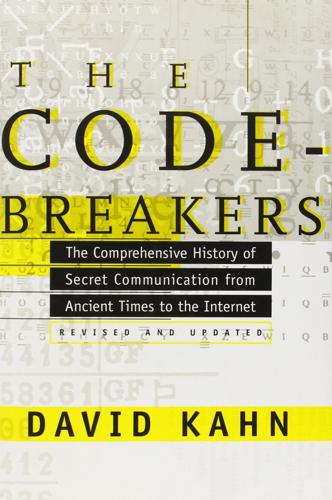
The Codebreakers: The Comprehensive History of Secret Communication From Ancient Times to the Internet
by
David Kahn
Published 1 Feb 1963
Yet cryptologic history shows no one ever having used them, even though they are far superior to many systems that have seen service. Most remarkable of the Victorian congregation of cryptologists was the Lucasian Professor of Mathematics at Cambridge, the pioneer who enunciated the principles on which today’s huge electronic computers are based and who himself built their prototypes: Charles Babbage. Most of his cryptologic work was never published and hence never played a role in the science, but it was astonishingly advanced. He was among the first to use mathematical notations and formulas in cryptanalysis; he solved polyalphabetics at a time when the system was still regarded as “le chiffre indéchiffrable;” he appears to have been the first to solve an autokey.
…
“One of the most singular characteristics of the art of deciphering,” he declared in his autobiography, Passages from the Life of a Philosopher, “is the strong conviction possessed by every person, even moderately acquainted with it, that he is able to construct a cipher which nobody else can decipher. I have also observed that the cleverer the person, the more intimate is his conviction. In my earliest study of the subject, I shared in this belief, and maintained it for many years. Charles Babbage uses mathematics to solve a cipher “In a conversation on that subject which I had with the late Mr. Davies Gilbert, President of the Royal Society,” he continued, “each maintained that he possessed a cipher which was absolutely inscrutable. On comparison, it appeared that we had both imagined the same law.”
…
Poorly endowed with empathy, he never considers the possibility that cipher clerks will not dote as lovingly upon the complex calculations of his cipher as he does; he fails to realize that to the clerks ciphering is not a pleasant after-hours recreation but a day-long, dull, boring job, about as exciting as adding up columns of figures, and that they would rather be out on a date with a girl friend. Charles Babbage asserted that no man’s cipher was worth looking at unless the inventor had himself solved a very difficult cipher. This rule holds true in the great majority of cases and if observed would have saved cryptologists a great deal of time. But it would be like having required Thomas Edison to pass a stiff examination in acoustical theory before deigning to look at his phonograph.

Machines of Loving Grace: The Quest for Common Ground Between Humans and Robots
by
John Markoff
Published 24 Aug 2015
Bloomfield, The Question of Artificial Intelligence: Philosophical and Sociological Perspectives, in Annals of the History of Computing 10, no. 3 (1998). 15.Ibid. 16.Nilsson, The Quest for Artificial Intelligence, 77. 17.AI@50, Dartmouth College Artificial Intelligence Conference, July 13–15, 2006. 18.Interview with John McCarthy, Stanford University, July 19, 2001. 19.Steven Levy, Hackers: Heroes of the Computer Revolution (New York: Anchor Press/Doubleday, 1984). 20.Interview with John McCarthy, Stanford University, July 19, 2001. 21.Raj Reddy, “Celebration of John McCarthy’s Accomplishments,” Stanford University, March 25, 2012, YouTube, https://www.youtube.com/watch?v=J_QGryGFb2o. 22.Arthur L. Norberg, “An Interview with Bruce G. Buchanan,” June 11–12, 1991, Charles Babbage Institute, University of Minnesota, http://conservancy.umn.edu/bitstream/107165/1/oh230bb.pdf. 23.Hans Moravec, Mind Children: The Future of Robot and Human Intelligence (Cambridge, MA: Harvard University Press, 1988), 20. 24.John McCarthy, “A Proposal for the Dartmouth Summer Research Project on Artificial Intelligence,” August 31, 1955, http://www-formal.stanford.edu/jmc/history/dartmouth/dartmouth.html. 25.William J.
…
Abelson, Scripts, Plans, Goals, and Understanding: An Inquiry into Human Knowledge Structures, Artificial Intelligence Series (Hillsdale, NJ: Lawrence Erlbaum Associates, 1977). 17.Searle presentation before CS22 Introduction to the Philosophy and History of Artificial Intelligence, Stanford, October 25, 2013. 18.Arthur L. Norberg, “An Interview with Terry Allen Winograd,” December 11, 1991, Charles Babbage Institute, University of Minnesota, http://conservancy.umn.edu/bitstream/107717/1/oh237taw. 19.Sergey Brin, Rajeev Motwani, Lawrence Page, and Terry Winograd, “What Can You Do with a Web in Your Pocket?” IEEE Data Engineering Bulletin 21, no. 2 (1998): 37–47, http://citeseerx.ist.psu.edu/viewdoc/download?
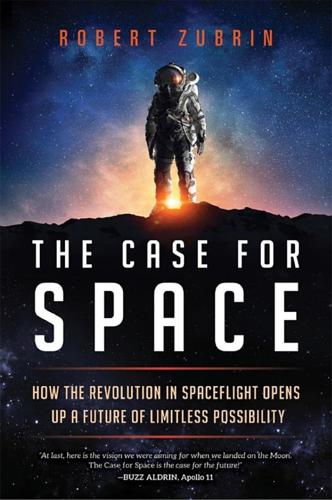
The Case for Space: How the Revolution in Spaceflight Opens Up a Future of Limitless Possibility
by
Robert Zubrin
Published 30 Apr 2019
Energy to drive the units could be obtained from nanophotovoltaic units and stored in nanosprings or nanobatteries. To go from there to nanorobots, we need nanocomputers. Drexler proposes that these could be built out of mechanical nanomachines, along the same principle as the first mechanical computers proposed by Charles Babbage and Ada Lovelace to be built out of brass gears and wheels in the nineteenth century. Such machines could be programmed with punched tape or cards, and presumably nanoscopic analogs for these mechanical software devices could be found as well. Babbage's ingenious mechanical computers don't even remotely compare in capability to modern electronic ones, but the parts used by Drexler's nano–Babbage machines would be so small that enormous amounts of computing power could be contained in a microscopic speck.
…
The vast horde of assemblers would then turn their attention to accomplishing some task they had been programmed to execute, such as inspect a human body for cancer cells and make appropriate adjustments, manufacture huge solar sails from asteroids, or terraform a planet. Figure 8.2. Hardware and software. Charles Babbage invented the mechanical computer. The mathematician Countess Ada Lovelace, daughter of the poet Lord Byron, realized that Babbage's computers could be programmed to act like mechanical brains. Her insight could enable self-replicating nanorobots, endowing humanity with nearly unlimited power to terraform worlds.
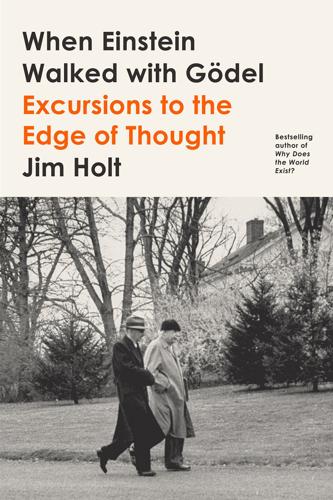
When Einstein Walked With Gödel: Excursions to the Edge of Thought
by
Jim Holt
Published 14 May 2018
Meanwhile, the pretty and flirtatious girl was besieged by suitors, who were attracted not only by her celebrity as a Byron but also by the enormous wealth she stood to inherit from her mother’s richly landed family. In 1833, at a party during her first London season, Ada was introduced to a forty-one-year-old widower named Charles Babbage. An accomplished mathematician, Babbage was also a prolific inventor of improving schemes and an all-purpose tinkerer. At the time, he was holding a series of soirees in his London home to show off something he called the Difference Engine: a mechanical calculating device, about the size of a traveling trunk, constructed of some two thousand glimmering brass and steel components—shafts, disks, gears—and powered by a hand crank.
…
Through her lyrical similes—most famously, “the Analytical Engine weaves algebraical patterns just as the Jacquard-loom weaves flowers and leaves”—Ada “managed to rise above the technical minutiae of Babbage’s extraordinary invention to reveal its true grandeur.” If Ada Lovelace did not invent computer programming, is it at least fair to say that Charles Babbage invented the computer? Woolley’s biography of Ada makes much of the fact that Babbage never got his Analytical Engine built. The explanation, he argues, was not Babbage’s eccentric perfectionism or the limitations of contemporary engineering; it was that the Victorian world was simply not ready for the computer.
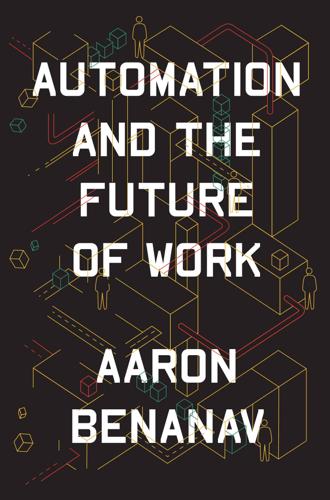
Automation and the Future of Work
by
Aaron Benanav
Published 3 Nov 2020
Drawing on this insight—and adding that such a breakthrough now exists—automation theorists frequently argue that capitalism must be a transitory mode of production, which will give way to a new form of life that does not organize itself around wage work and monetary exchange.20 Automation may be a constant feature of capitalist societies; the same is not true of the theory of a coming age of automation, which extrapolates from instances of technological change to a broader account of social transformation. On the contrary, its recurrence in modern history has been periodic. Excitement about a coming age of automation can be traced back to at least the mid nineteenth century, with the publication of Charles Babbage’s On the Economy of Machinery and Manufactures in 1832, John Adolphus Etzler’s The Paradise within the Reach of All Men, without Labour in 1833, and Andrew Ure’s The Philosophy of Manufactures in 1835. These books presaged the imminent emergence of largely or fully automated factories, run with minimal or merely supervisory human labor.
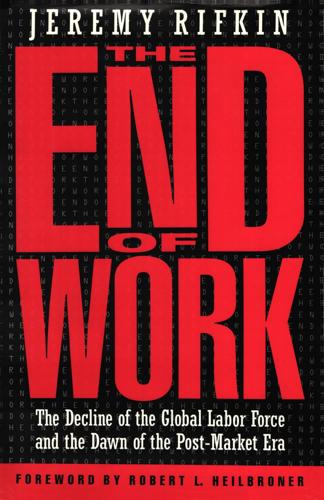
The End of Work
by
Jeremy Rifkin
Published 28 Dec 1994
The philosopher and inventor muted his enthusiasm by observing that his invention "does nothing which would enable us to attribute will to it, as to the animals."12 Gottfried Wilhelm Leibniz augmented Pascal's feat by adding multiplication to the calculating machine's repertoire. Then, in 1821, Charles Babbage wrote a paper entitled "Observations on the Application of Machinery to the Computation of Mathematical Tables," which is still regarded as the first theoretical work on modem computation. Later, Babbage conceived of a new type of machine, an Analytical Engine, that could be programmed to solve logical or computational problems.
…
Cited in Fjermedal, Grant, The Tomorrow Makers: A Brave New World of Living-Brain Machines (New York: Macmillan Publishers, 1986), p. 94. 11. Simons, Geoff, Robots: The Quest for Living Machines (New York: Sterling, 1992), pp. 52-53· 12. Pascal, Blaise, Pensees (New York: E. P. Dutton, 1932), p. 96, no. 340. 13. Babbage, Henry Prevost, Babbage's Calculating Engines (1889), Charles Babbage Institute Reprint Series for the History of Computing, vol. 2 (Los Angeles: Tomash Publishers, 1982), pp. 220-222; Bernstein, Jeremy, The Analytical Engine: Computers-Past, Present, and Future, revised ed. (New York: William Morrow, 1981), PP·47-57· 4. Augarten, Stan, Bit by Bit: An Illustrated History of Computers (New York: Ticknor and Fields, 1984), p. 77; Austrian, Geoffrey D., Herman Hollerith: Forgotten Giant of Information Precessing (New York: Columbia University Press, 1982), p. 312; Shurkin, Joel, Engines of the Mind: A History of the Computer (New York: W.
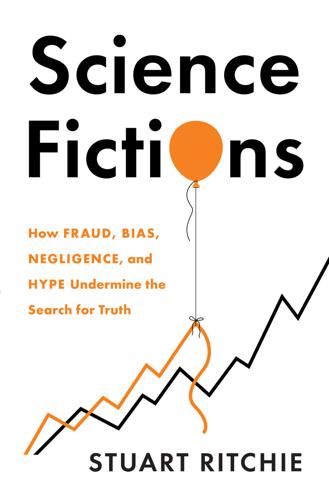
Science Fictions: How Fraud, Bias, Negligence, and Hype Undermine the Search for Truth
by
Stuart Ritchie
Published 20 Jul 2020
There seems to be no study too fragmented, no hypothesis too trivial, no literature citation too biased or too egotistical, no design too warped, no methodology too bungled, no presentation of results too inaccurate, too obscure, and too contradictory, no analysis too self-serving, no argument too circular, no conclusions too trifling or too unjustified, and no grammar and syntax too offensive for a paper to end up in print.11 He was hardly the first to notice. In 1830, the mathematician and ‘father of the computer’ Charles Babbage wrote his remarkable Reflections on the Decline of Science in England, and on Some of its Causes, where he offered a taxonomy of scientific ills.12 These were ‘hoaxing’ (by those who produce fake findings which they later unmask, to prove a point), ‘forging’ (by our familiar scientific fraudsters, who have no intention of revealing their deceptions), ‘trimming’, and ‘cooking’ (both of which correspond, in our modern understanding, to p-hacking, where scientists manipulate their data and observations to give them the appearance of greater interest or accuracy).
…
Richard Van Noorden, ‘Highly Cited Researcher Banned from Journal Board for Citation Abuse’, Nature 578, no. 7794 (Feb. 2020): pp. 200–201; https://doi.org/10.1038/d41586-020-00335-7 11. Drummond Rennie, ‘Guarding the Guardians: A Conference on Editorial Peer Review’, JAMA 256, no. 17 (7 Nov. 1986): p. 2391; https://doi.org/10.1001/jama.1986.03380170107031 12. Charles Babbage, Reflections on the Decline of Science in England, and on Some of Its Causes (London: B. Fellowes, 1830); https://www.gutenberg.org/files/1216/1216-h/1216-h.htm 13. International Biographical Dictionary of Computer Pioneers, ed. John A.N. Lee (Chicago, Ill.: Fitzroy Dearborn, 1995). 14.
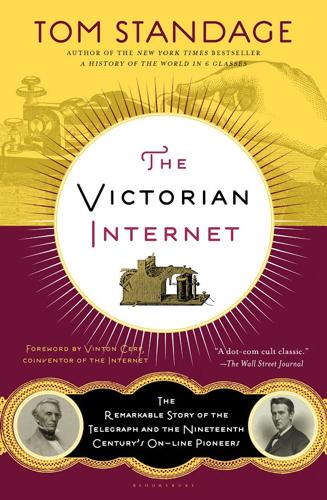
Victorian Internet
by
Tom Standage
Published 1 Jan 1998
This classic example shows that no matter how secure a code is, a person is always the weakest link in the chain. Even so, there were continuous efforts to dream up un-crackable codes for use over the telegraph. crYPTOGRAPHY—tinkering with codes and ciphers—was a common hobby among Victorian gentlemen. Wheatstone and his friend Charles Bab-bage, who is best known for his failed attempts to build a mechanical computer, were both keen crackers of codes and ciphers—Victorian hackers, in effect. "Deciphering is, in my opinion, one of the most fascinating of arts," Bab-bage wrote in his autobiography, "and I fear I have wasted upon it more time than it deserves."
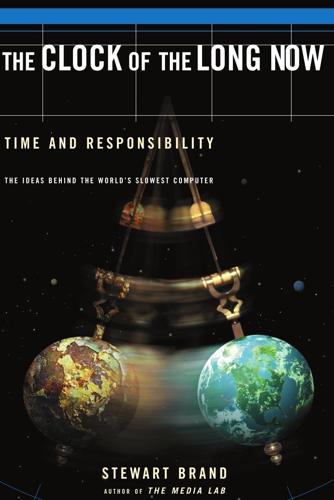
Clock of the Long Now
by
Stewart Brand
Published 1 Jan 1999
Horologists became obsessed with accurately measuring millionths and then billionths of a second. Hillis headed in the opposite direction. The Clock’s computer is shockingly subtle and simple. As Hillis says, “It’s a design Babbage could have succeeded with. A skilled clockmaker could have built one in the fifteenth century.” (Charles Babbage’s celebrated mid-nineteenth-century mechanical computer, built of brass, failed in part because it used decimal notation. Hillis’s mechanical computer is binary.) The subtlety comes with the extreme accuracy that digital computation allows. A calculation thirty-two bits deep is accurate to one in seven million—one day in twenty thousand years.

Wired for War: The Robotics Revolution and Conflict in the 21st Century
by
P. W. Singer
Published 1 Jan 2010
pg=2&topic=robots&topic_set=. 45 the field of modern chemistry J. Boone Bartholomees Jr., “The Heirs of Archimedes: Science and the Art of War through the Age of Enlightenment,” Parameters 35, no. 4 (2005): 136. 46 “to see what would happen” “Charles Babbage,” Wikipedia, April 20, 2007 (cited April 20, 2007); available at http://en.wikipedia.org/wiki/Charles_Babbage. 46 “I called an official” Robert Finkelstein, “Military Robotics: Malignant Machines or the Path to Peace,” paper presented at the Military Robotics Conference, Institute for Defense and Government Advancement, Washington, DC, April 10-12, 2006. 47 the Germans protected their coast Steven M.
…
Charles de Colmar is credited with inventing the first mechanical calculator, which he called the Arithmometer, in 1820. The machine was as big as a desk. His first customers were the French and British militaries, which used it for navigation and plotting the trajectory of cannonballs. Similarly, the Royal Navy hired Charles Babbage, the man generally credited with designing the first programmable computer. Babbage’s 1822 machine, called a “difference engine,” was designed of some twenty-five thousand parts. In a foretaste of the innovators of today, Babbage was also a bit of an oddball. He once baked himself in an oven for four minutes, just “to see what would happen.”
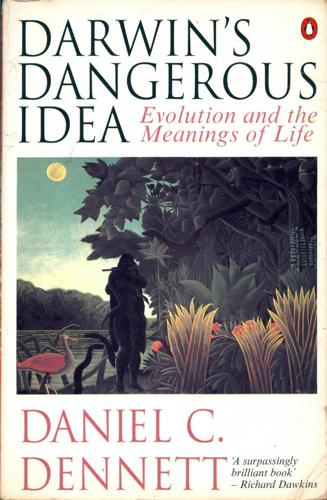
Darwin's Dangerous Idea: Evolution and the Meanings of Life
by
Daniel C. Dennett
Published 15 Jan 1995
It is quite explicit, of course, in the Argument from Design, which invites the observer to marvel at the cunning interplay of parts, the elegant planning and exquisite workmanship of the Artificer. But engineering has always had second-class status in the intellectual world. From Leonardo da Vinci to Charles Babbage to Thomas Edison, the engineering genius has always been acclaimed but nevertheless regarded with a certain measure of condescension by the mandarin elite of science and the arts. Aristotle did not help matters by proposing a distinction, adopted by the medievals, between what was secundum naturam, according to nature, and what was contra naturam, against nature, artificial.
…
Whereas Skinner's simple parts had been randomly mated stimulus-response pairings that could then be subjected, over and over again, to the selection pressure of reinforcement from the environment, Turing's simple parts were internal data-structures — different "machine states" that could be composed to respond differentially to indefinitely many different inputs, creating input output behavior of any imaginable sophistication. Which of these internal states were innately specified and which were to be revised by experience was something left to be investigated. Like Charles Babbage (see note 13 of chapter 8), Turing saw that the behavior of an entity need not be any simple function of its own history of stimulation, since it could have accrued huge amounts of design over the eons, which would permit it to use its internal complexity to mediate its responses. That abstract opening was eventually filled by GOFAI-modelers with contrivances of dazzling complexity that still fell comically short of producing human-style cognition.
…
Haldane, had shown him), and for years he was convinced that "my fingers must be Turing waves; my vertebrae must be Turing waves" — but he eventually came to realize, reluctantly, that it could not be that simple and beautiful. 13. In fact, the bridge between computers and evolution goes back even farther, to Charles Babbage, whose 1834 conception of the "Difference Engine" is generally credited with inaugurating the prehistory of the computer. Babbage's notorious Ninth Bridgewater Treatise (1838) exploited his theoretical model of a computing engine to offer a mathematical proof that God had in effect programmed nature to generate the species!

Artificial Intelligence: A Modern Approach
by
Stuart Russell
and
Peter Norvig
Published 14 Jul 2019
Tech. rep., Stanford University Computer Science Dept. Lovejoy, W. S. (1991). A survey of algorithmic methods for partially observed Markov decision processes. Annals of Operations Research, 28, 47–66. Lovelace, A. (1843). Sketch of the analytical engine invented by Charles Babbage. Notes appended to Lovelace’s translation of an article of the above title written by L. F. Menabrea based on lectures by Charles babbage in 1840. The translation appeared in R. Taylor (Ed.), Scientific Memoirs, vol. III. R. and J. E. Taylor, London. Loveland, D. (1970). A linear format for resolution. In Proc. IRIA Symposium on Automatic Demonstration. Lowe, D. (1987).
…
In COGSCI-15. Morjaria, M. A., Rink, F. J., Smith, W. D., Klempner, G., Burns, C., and Stein, J. (1995). Elicitation of probabilities for belief networks: Combining qualitative and quantitative information. In UAI-95. Morrison, P. and Morrison, E. (Eds.). (1961). Charles Babbage and His Calculating Engines: Selected Writings by Charles Babbage and Others. Dover. Moskewicz, M. W., Madigan, C. F., Zhao, Y., Zhang, L., and Malik, S. (2001). Chaff: Engineering an efficient SAT solver. In Proc. 38th Design Automation Conference. Mott, A., Job, J., Vlimant, J.-R., Lidar, D., and Spiropulu, M. (2017). Solving a Higgs optimization problem with quantum annealing for machine learning.
…
Of course, there were calculating devices before the electronic computer. The earliest automated machines, dating from the 17th century, were discussed on page 24. The first programmable machine was a loom, devised in 1805 by Joseph Marie Jacquard (1752–1834), that used punched cards to store instructions for the pattern to be woven. In the mid-19th century, Charles Babbage (1792–1871) designed two computing machines, neither of which he completed. The Difference Engine was intended to compute mathematical tables for engineering and scientific projects. It was finally built and shown to work in 1991 (Swade, 2000). Babbage’s Analytical Engine was far more ambitious: it included addressable memory, stored programs based on Jacquard’s punched cards, and conditional jumps.
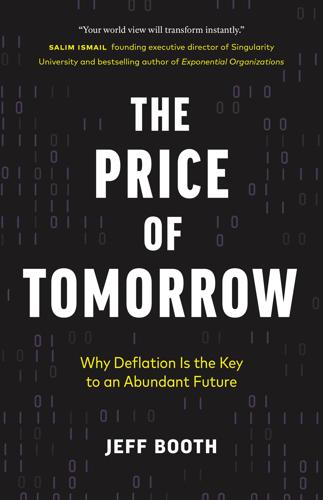
The Price of Tomorrow: Why Deflation Is the Key to an Abundant Future
by
Jeff Booth
Published 14 Jan 2020
The more information there is, the more correction it needs—but the same exponential growth of technology that allows this explosion of information also allows exponentially improved error correction: a sonic boom of information and knowledge, with our computers getting further and further ahead of us. The beginning of AI Try to imagine yourself living in the early to mid-1800s: horse-drawn carriages, no telephones, before the electrification of cities. It is hard to even comprehend that the designs for a modern-day computer could be envisioned then, but Charles Babbage (1791–1871), a British polymath, did just that. Babbage found errors while reviewing astronomical tables that were calculated by hand, and he realized that computational problems were dangerous to navigation. So, he devised a solution and created the first blueprint for a mechanical-based computation.
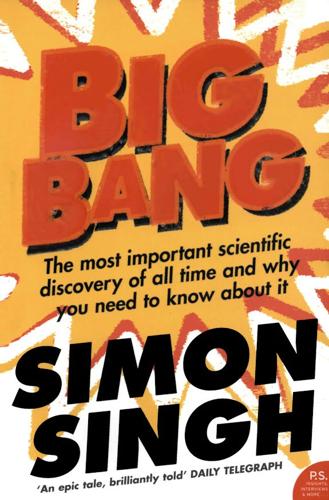
Big Bang
by
Simon Singh
Published 1 Jan 2004
Chapter 3 THE GREAT DEBATE The known is finite, the unknown is infinite; intellectually we stand on an islet in the midst of an illimitable ocean of inexplicability. Our business in every generation is to reclaim a little more land. T.H. HUXLEY The less one knows about the universe, the easier it is to explain. LEON BRUNSCHVICG Errors using inadequate data are much less than those using no data at all. CHARLES BABBAGE Theories crumble, but good observations never fade. HARLOW SHAPLEY First, get the facts, then you can distort them at your leisure. MARK TWAIN Heaven wheels above you displaying to you her eternal glories and still your eyes are on the ground. DANTE Science consists of two complementary strands, theory and experiment.
…
The Fifth Miracle Paul Davies How did life get started? Davies looks at the latest ideas and breakthroughs. Strange Beauty George Johnson A highly readable biography of Murray Gell-Mann, one of the great physicists of the twentieth century. The Cogwheel Brain Doron Swade The heroic tale of Charles Babbage, a Victorian genius who tried to build a mechanical computer. Find Out More Websites selected by Simon Singh http://map.gsfc.nasa.gov/m_uni.html This NASA website offers a tutorial, Cosmology 101, that covers everything from the development of the core Big Bang model to the latest ideas and observations.
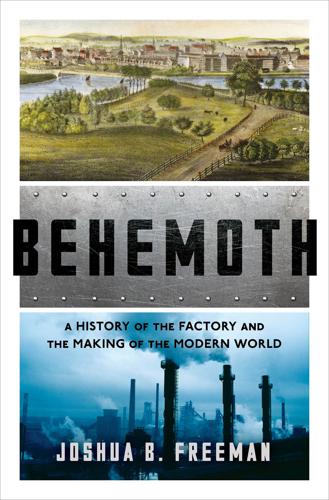
Behemoth: A History of the Factory and the Making of the Modern World
by
Joshua B. Freeman
Published 27 Feb 2018
And even then, what by the standards of the day could be considered very large factories—mills employing over a thousand employees—were the exception, not the rule, in both urban and rural settings.25 But the very large mills received a disproportionate amount of attention, both at the time and since, because they were seen as the cutting edge of not only industry and technology but also of social arrangements.26 Why did the owners of these facilities choose to go big, to adopt the large, centralized factory model? Charles Babbage, the great English mathematician and inventor, devoted a whole chapter “On the Causes and Consequences of Large Factories” in his influential 1832 book, On the Economy of Machinery and Manufacturers. Babbage began with the obvious, that the introduction of machinery tended to lead to greater production volume, resulting in “the establishment of large factories.”
…
Gatrell, “Labour, Power, and the Size of Firms in Lancashire Cotton in the Second Quarter of the Nineteenth Century,” Economic History Review, new series, vol. 30, no. 1 (Feb. 1977), 96, 98, 112; Jenkins, “Introduction,” xv. 26.Berg, Age of Manufactures, 23–24; Thompson, Making of the English Working Class, 208–11; Robert Gray, The Factory Question and Industrial England, 1830–1860 (Cambridge: Cambridge University Press, 1996), 3–4. 27.Charles Babbage, On the Economy of Machinery and Manufacturers, 4th ed. (London: Charles Knight, 1835), 211–23. 28.Gatrell, “Labour, Power, and the Size of Firms,” 96–97, 108; Alfred Marshall, Principles of Economics (1890; London: Macmillan and Co., Ltd., 1920), 8th ed., IV.XI.7, http://www.econlib.org/library/Marshall/marP25.html#Bk.IV,Ch.XI. 29.Baines, History of the Cotton Manufacture, 184–85. 30.Landes, Unbound Prometheus, 41; Jones, “Technology, Transaction Costs, and the Transition to Factory Production,” 71–74; Jenkins, “Introduction,” xiii; Berg, Age of Manufactures, 23–24, 190, 246; Hudson, Genesis of Industrial Capital, 70–71.

Your Computer Is on Fire
by
Thomas S. Mullaney
,
Benjamin Peters
,
Mar Hicks
and
Kavita Philip
Published 9 Mar 2021
De Prony duly constructed a method for dividing up the cognitive work associated with computing logarithms, known as the difference method, and mobilized the labor of recently unemployed (and therefore inexpensive) hairdressers (whose aristocratic patrons had been lucky to escape the recent revolution with their heads intact, much less their fancy hairstyles). This was perhaps the first industrial-era information factory, but it was a harbinger of subsequent developments to come.36 Several decades after de Prony, the English mathematician and astronomer Charles Babbage, faced with a similar need to quickly and efficiently generate large numbers of mathematical tables, also turned to contemporary industrial manufacturing practices. After making an extended tour of European industrial centers, he published On the Economy of Machinery and Manufactures, the most comprehensive study of industrialization to date.
…
I am not aware of much sober scholarship on this particular transition from East Coast government to Silicon Valley private business, although much of the dated rhetoric that pits state against corporations can be found in popular accounts, such as Michael Hiltzik, Dealers of Lightning: Xerox PARC and the Dawn of the Computer Age (New York: Harper Business, 1999), and L. Gordon Crovitz, “Who Really Invented the Internet?” Wall Street Journal (July 22, 2012), https://www.wsj.com/articles/SB10000872396390444464304577539063008406518. 28. Judy O’Neill, “Interview with Paul Baran,” Charles Babbage Institute, OH 182 (February 5, 1999), Menlo Park, CA, accessed September 15, 2017, http://www.gtnoise.net/classes/cs7001/fall_2008/readings/baran-int.pdf. 29. Tara Abraham, Rebel Genius: Warren S. McCulloch’s Transdisciplinary Life in Science (Cambridge, MA: MIT Press, 2016). 30. Stewart Brand, “Founding Father,” Wired 9, no. 3 (1991), http://archive.wired.com/wired/archive/9.03/baran_pr.html. 31.

50 Future Ideas You Really Need to Know
by
Richard Watson
Published 5 Nov 2013
We will have more machines and algorithms that talk with each other and our most important concern will be trying to explain to machines what it means to be human. the condensed idea Next-stage computing timeline c. 100 BC Antikythera mechanism (early analog mechanical computer) 1837 Charles Babbage describes analytical engine 2015 Direct brain-to-machine computer interfaces 2020 Computer games beamed to the human brain 2025 Computers injected into the human body 2040 Human beings no longer need to remember anything 2050 Internet-enabled telepathy 2070 People able to record and share dreams 18 Nanotechnology This is the science of manipulating matter at an atomic or subatomic scale (1–100 nanometers) to create supersmart materials with entirely new properties or to manufacture objects at an atomically precise level.

Speaking Code: Coding as Aesthetic and Political Expression
by
Geoff Cox
and
Alex McLean
Published 9 Nov 2012
In other words, there is a feedback loop that describes the way the historical subject can reassemble itself or self-organize, in the passage from in-itself to for-itself. Computation What does an understanding of computational processes further contribute to this understanding of the relations between speech and code, if there is a recognition that the historical subject can both program and be programmed? In a history of computing, for instance, Charles Babbage’s “Analytical Engine” (first described in 1837) extended the earlier “Difference Engine” (first conceived in 1786) by employing the principle of the “strange loop” or “tangled hierarchy,” a mathematical theory describing the capability of a computer to alter its own stored program.21 This logic is taken to an extreme in the case of code that is self-referential or recursive, such as a “quine,” a term used to describe a program whose output is exactly the same as its complete 44 Chapter 2 source code.

Fewer, Better Things: The Hidden Wisdom of Objects
by
Glenn Adamson
Published 6 Aug 2018
Nifty as a fretsaw is, it cannot compare to the complexity of such a machine, which interweaves warp and weft threads into textile. The point is often made by textile specialists that the loom was the direct historical predecessor of the computer. This is true in two senses: first, in that the earliest computer designer, the British mechanical engineer Charles Babbage, employed the same kind of punch cards in his so-called Analytical Engine as those that were used to program Jacquard looms; and second, in the more general sense that a loom, like a computer, is a machine for storing and executing very complex patterns, expressed in binary (on/off). Like any tool, but to a very advanced degree, a programmable loom is a repository for human know-how.
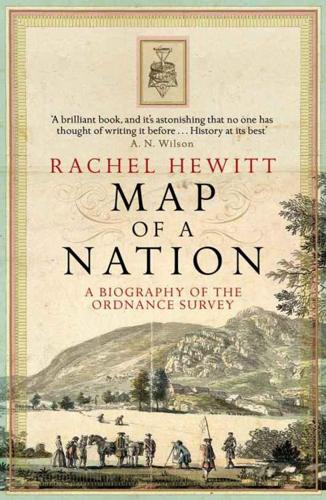
Map of a Nation: A Biography of the Ordnance Survey
by
Rachel Hewitt
Published 6 Jul 2011
A sketch showing the Ordnance Survey’s measurement of the Lough Foyle baseline with the compensation bars. The measurement of the Lough Foyle baseline, like that in Britain on Hounslow Heath, attracted many interested parties, including the British astronomer John Herschel, the eccentric mathematician Charles Babbage and the director of the Armagh Observatory, Thomas Romney Robinson. If the surveyors sometimes felt embattled during their time mapping the Irish landscape, Colby and Larcom’s experiences at Lough Foyle reassured them that, among the Protestant scientific community at least, they were extremely welcome in Ireland.
…
The Templemore memoir was relatively popular among readers and sold 1250 copies in the space of six years (Wordsworth bought one), but its exorbitant production costs meant that the memoir project’s days were numbered. Colby and Larcom’s brainchild had, in fact, been deeply flawed from the start. The military engineers found it extremely tricky to make time for both surveying and memoir research. At the British Association’s Dublin meeting, the mathematician Charles Babbage had optimistically claimed that the memoir work could be conducted ‘in the evening’ after a full day’s map-making, but this was ludicrous: both tasks were full-time jobs in themselves. Even more problematically, the map-makers were not trained in anthropological research methods. The quality of their investigations was inconsistent and their discoveries were occasionally ‘manifestly wrong’, as John O’Donovan put it.
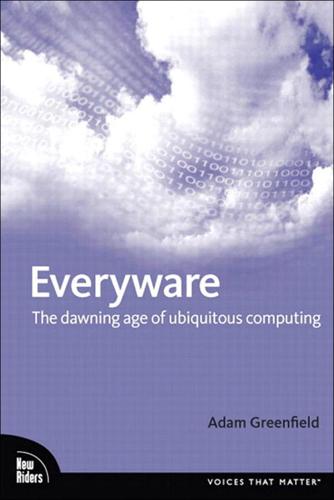
Everyware: The Dawning Age of Ubiquitous Computing
by
Adam Greenfield
Published 14 Sep 2006
The following are some of the factors that are actively inhibiting either the development or the chances for adoption of ubiquitous computing. Thesis 55 The necessary standards for interoperability do not exist or are not yet widely observed. A lack of widely observed standards in the dimensions of screw threading inhibited Charles Babbage in his quest to build the Difference Engine, the world's first computer, in the 1840s. A lack of standards in languages and operating systems kept electronic computers from communicating with each other for decades. Well into the era of the personal computer, a lack of standards kept software development balkanized.
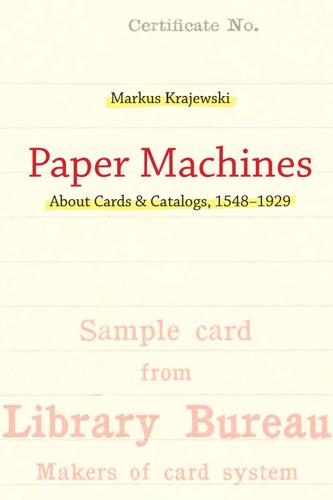
Paper Machines: About Cards & Catalogs, 1548-1929
by
Markus Krajewski
and
Peter Krapp
Published 18 Aug 2011
The same author secures her place as distributor of the American office reform movement in Germany, for instance with Witte 1930. 8. Haußmann 1925, p. 4. 9. Roth-Seefrid 1918, p. 18. 10. Ostwald 1929, p. 232. 11. Popp 1932, p. 10. 12. Schlesinger 1920, pp. 21f. Motion study has a longer tradition and was certainly not Taylor’s invention. Jean-Baptiste Colbert, Prussian generals, and Charles Babbage had already conducted studies to optimize motion sequences; see Burchardt 1977, p. 57. 13. For their pioneering role, see Yates 1989. 14. Giebichenstein 1929, p. 26. For the conceptual history of “rationalization,” see Hinnenthal 1927; and in relation to the watchword “efficiency,” see also Berg 1929. 15.
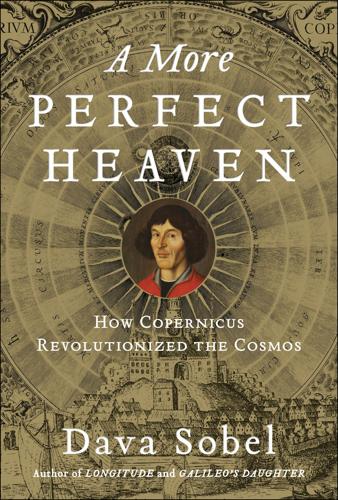
More Perfect Heaven: How Copernicus Revolutionised the Cosmos
by
Dava Sobel
Published 1 Sep 2011
After Newton established universal gravitation as the force that kept the planets in their orbits around the Sun, copies of Copernicus’s book came into the possession of many other giants in astronomy, such as comet namesake Edmond Halley, his successor as astronomer royal George Biddell Airy, computing pioneer Charles Babbage, and twentieth-century cosmologist Edwin Hubble, who was first to appreciate the infinite extent and continuing expansion of the universe. Now that Copernicus’s text no longer serves to describe the known paths of the planets, it is more highly valued than ever as an icon. The most recent copy of the book offered at auction—a clean, unannotated first edition—sold at Christie’s, New York, in June 2008 (to an undisclosed recipient) for $2,210,500.

The Secret War Between Downloading and Uploading: Tales of the Computer as Culture Machine
by
Peter Lunenfeld
Published 31 Mar 2011
Bush in particular wanted to use the new technologies to improve our capacity to process and understand information.5 In “As We May Think,” an article published in the Atlantic Monthly just after the war ended in 1945, Bush wrote about an imaginary machine that he called the Memex, which simulated the human brain’s capacities for associative thinking.6 Bush’s article remains an amazing read all these years later. It offers a capsule history of computing, or rather precomputing, discussing Gottfried Leibniz’s mechanical calculators and Charles Babbage’s difference engine, and explores information overload (remember this was 1945), imagining a fully multimediated “future investigator” wearing recording technologies that date, time stamp, and synchronize both research findings and observations. But it was Bush’s detailed description of the Memex—short for “memory extender”—that serves as an original meme for the computer as culture machine.
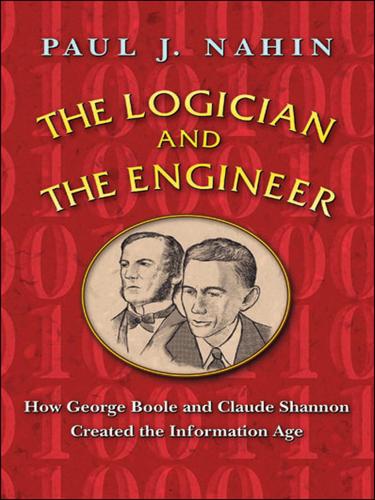
The Logician and the Engineer: How George Boole and Claude Shannon Created the Information Age
by
Paul J. Nahin
Published 27 Oct 2012
The halting problem asks the following question: is it possible to write a computer program (in any language) that accepts as input any program (along with some arbitrary input) and then decides if that program (with that arbitrary input) will ever halt after being started? In Number-Crunching (pp. 330–333) I present the classic proof that it is logically impossible for such a halting-determination program to exist. There is no physics in that proof. 3. Charles Babbage (1791–1871), a British mathematician and computer inventor. He first designed the so-called difference engine and then the analytical engine, both to be built from gears, levers, ratchets, springs, nuts, and bolts. Babbage actually built neither one, but versions of the difference engine were constructed later by others.
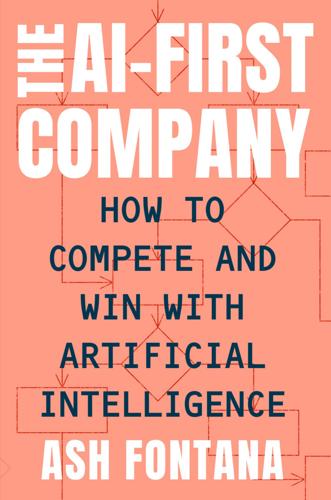
The AI-First Company
by
Ash Fontana
Published 4 May 2021
AI-First companies were the first—and are still the only—trillion-dollar companies, and they will dominate more industries more definitively than ever before. This is your guide to building an AI-First company. THE NEW TOOLS We like to make new tools and, by doing so, power through our natural limits. Charles Babbage, who arguably invented the first mechanical computer, said, “It is not a bad description of man to describe him as a tool-making animal.” We use our intelligence to learn how things work and build tools to make them work better—turning the gradual evolution of man into the fast revolution of man plus machine.

Internet for the People: The Fight for Our Digital Future
by
Ben Tarnoff
Published 13 Jun 2022
See Simon Kemp, “Digital 2021 April Statshot Report,” DataReportal. 1. A People’s History of the Internet 3, On November 22, 1977, a van … My discussion of the 1977 experiment draws from Don Nielson, “The SRI Van and Computer Internetworking,” Core Magazine 3, no. 1 (February 2002): 2–6; Vinton Cerf, interview by Judy O’Neill, April 24, 1990, Charles Babbage Institute; Vinton Cerf, “How the Internet Came to Be,” netvalley.com; Cade Metz, “Bob Kahn, The Bread Truck, and the Internet’s First Communion,” Wired, August 13, 2012; Cade Metz, “How a Bread Truck Invented the Internet,” The Register, November 12, 2007; Vint Cerf and Bob Kahn, “30th Anniversary of Internetting with TCP/IP,” filmed November 7, 2007, at the Computer History Museum in Mountain View, California, YouTube; Barbara Denny, Paal Spilling, and Virginia Strazisar Travers, “Birth of the Internet,” filmed November 7, 2007, at the Computer History Museum in Mountain View, California, YouTube; Vint Cerf et al., “Internet Milestone—30th Anniversary 3-Network Transmission,” filmed November 7, 2007, at the Computer History Museum in Mountain View, California, https://youtu.be/lapwgqzWC5g.

Memory Machines: The Evolution of Hypertext
by
Belinda Barnet
Published 14 Jul 2013
This book is an exception, with its keen sense of person and place, and through its account of the peculiar, inorganic logic of technical evolution, its sensitivity to the essentially fractal nature of history. In all these respects, the book you are now reading resembled another very good non-brick, James Gleick’s Information: A History, a Theory, a Flood (2011). Two of the actors in Gleick’s complex and populous account seem particularly relevant here. The first is Charles Babbage, creator of the Difference Engine and projector of the Analytical Engine, celebrated by xvi Memory Machines Lev Manovich (2001, 20–23) as a precursor of new media, and by William Gibson and Bruce Sterling (1991, 21) as the first ancestor of hackers. That eminence is, of course, an afterthought.

Thinking Machines: The Inside Story of Artificial Intelligence and Our Race to Build the Future
by
Luke Dormehl
Published 10 Aug 2016
However, as the question of creativity has become more prominent within AI circles, some people have suggested that a new test needs to be created. The first person involved with modern computing to discuss the subject of machine creativity was one of the world’s first computer programmers, Ada Lovelace. The daughter of no less a creative force than the Romantic poet Lord Byron, Ada Lovelace worked alongside Charles Babbage on his Analytical Engine in the 1800s. This was intended to be history’s first mechanical general-purpose computer, although due to a lack of funding it was never completed. Lovelace was impressed by the idea of building the Analytical Engine, but she argued that it would never be considered capable of true thinking, since it was only able to carry out pre-programmed instructions.
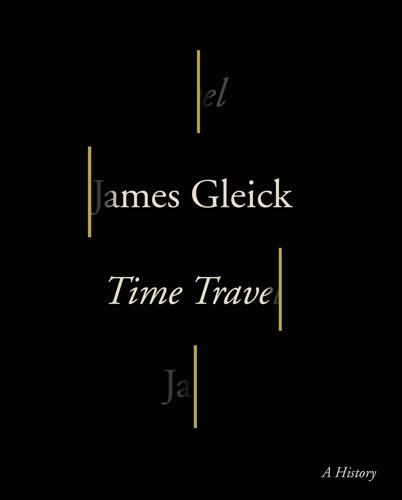
Time Travel: A History
by
James Gleick
Published 26 Sep 2016
In the 1860s, as railroad trains chugged across the countryside and sailing ships gave way to steam, he imagined vessels traveling under the sea, across the skies, to the center of the earth, and to the moon. We would say he was a man ahead of his time—he had an awareness, a sensibility, suited to a later era. Edgar Allan Poe was ahead of his time. The Victorian mathematician Charles Babbage and his protégé Ada Lovelace, forerunners of modern computing, were ahead of their time. Jules Verne was so far ahead of his time that he could never even find a publisher for his most futuristic book, Paris au XXe siècle, a dystopia featuring gas-powered cars, “boulevards lit as brightly as by the sun,” and machine warfare.
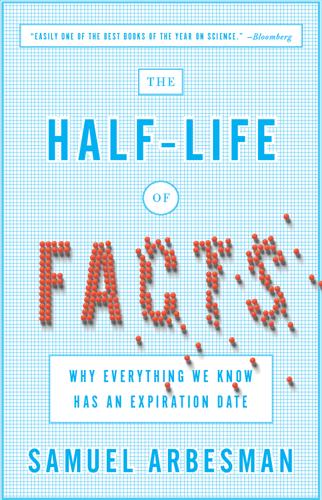
The Half-Life of Facts: Why Everything We Know Has an Expiration Date
by
Samuel Arbesman
Published 31 Aug 2012
It wasn’t until years after his death that the Augustinian monk’s work was rediscovered, due to other scientists doing similar experiments and stumbling upon his findings. Yet he laid the foundation for the concepts of genes and the mathematics of the heritability of discrete traits. There is also Charles Babbage, who designed the first mechanism for a programmable computer, but who had the misfortune of living during the Industrial Revolution, when he was unable to construct his invention, mainly because it was far too expensive at the time. His Difference Engine No. 2 actually had parts that corresponded exactly to the memory and processors found in modern computers.

To Be a Machine: Adventures Among Cyborgs, Utopians, Hackers, and the Futurists Solving the Modest Problem of Death
by
Mark O'Connell
Published 28 Feb 2017
With these invocations, he moves his arms downward, then outward to either side, before clasping his hands to his chest. He turns about the room, bestowing a gesture of esoteric benediction on the four points of the compass, speaking in each of these positions the hallowed name of a prophet of the computer age: Alan Turing, John von Neumann, Charles Babbage, Ada Lovelace. Then he stands perfectly still, this priestly young man, arms outspread in a cruciform posture. “Around me shines the bits,” he says, “and in me is the bytes. The data, the code, the communications. Forever, amen.” This young man, I learned, was a Swedish academic named Anders Sandberg.
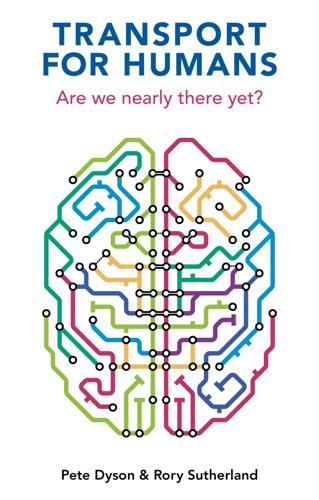
Transport for Humans: Are We Nearly There Yet?
by
Pete Dyson
and
Rory Sutherland
Published 15 Jan 2021
Now receiving dedicated study, this phenomenon is known as the overview effect – the cognitive shift of consciousness, awe and a planetary perspective that endures for years after an astronaut has returned to Earth.9 * * * 6 See Alan Turing’s lecture to the London Mathematical Society on 20 February 1947 in A. M. Turing’s ACE Report of 1946 and Other Papers. 1986. Charles Babbage Reprinting Series for the History of Computing, edited by B. E. Carpenter and B. W. Doran. Cambridge, MA: MIT Press. 7 A. Shimizu, I. Dohzono, M. Nakaji, D. A. Roff, D. G. Miller III, S. Osato, T. Yajima, S. Niitsu, N. Utsugi, T. Sugawara and J. Yoshimura. 2014. Fine-tuned bee-flower coevolutionary state hidden within multiple pollination interactions.
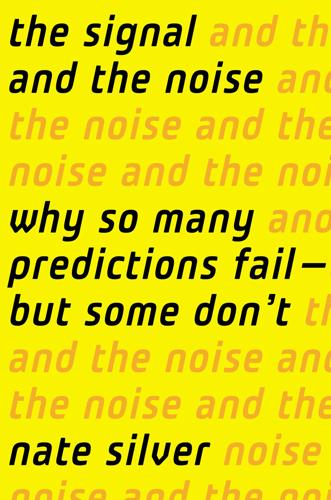
The Signal and the Noise: Why So Many Predictions Fail-But Some Don't
by
Nate Silver
Published 31 Aug 2012
His essay expressed a very deep and very modern ambivalence about the prospect that computers might be able to imitate, or improve on, the higher functions of man. FIGURE 9-1: THE MECHANICAL TURK Poe recognized just how impressive it might be for a machine to play chess at all. The first mechanical computer, what Charles Babbage called the difference engine, had barely been conceived of at the time that Poe wrote his exposé. Babbage’s proposed computer, which was never fully built during his lifetime, might at best hope to approximate some elementary functions like logarithms in addition to carrying out addition, subtraction, multiplication, and division.
…
Kasparov had been the victim of a large amount of human frailty—and a tiny software bug. How to Make a Chess Master Blink Deep Blue was born at IBM’s Thomas J. Watson Center—a beautiful, crescent-shaped, retro-modern building overlooking the Westchester County foothills. In its lobby are replicas of early computers, like the ones designed by Charles Babbage. While the building shows a few signs of rust—too much wood paneling and too many interior offices—many great scientists have called it home, including the mathematician Benoit Mandelbrot, and Nobel Prize winners in economics and physics. I visited the Watson Center in the spring of 2010 to see Murray Campbell, a mild-mannered and still boyish-looking Canadian who was one of the chief engineers on the project since its days as Deep Thought at Carnegie Mellon.

Migrant City: A New History of London
by
Panikos Panayi
Published 4 Feb 2020
Once again, as with much else in Victorian London, Henry Mayhew acts as an essential and empathetic guide to identifying street musicians with origins in a variety of international locations, although other contemporary publications operated on racial stereotypes partly because of a middle-class campaign to eliminate street music from the metropolis, a campaign in which the mathematician Charles Babbage and the MP Michael T. Bass played a leading role, with support from Charles Dickens and Thomas Carlyle. This led to the passage of several pieces of legislation, above all the Street Music (Metropolis) Act of 1864. The opponents focused not simply on the fact that uncontrolled music playing outside the sealed environment of the concert hall disturbed middle-class peace but also on the fact that Italian musicians exploited children by bringing them to London, while others caused street accidents.53 Racial and class stereotypes surfaced in numerous publications which tried to classify the musicians performing on the streets of Victorian London.
…
Bass, Street Music in the Metropolis: Correspondence and Observations on the Existing Law, and Proposed Amendments (London, 1864); Lucio Sponza, Italian Immigrants in Nineteenth-Century Britain (Leicester, 1988), pp. 141–9; Charity Organization Society, Report of the Committee of the Charity Organisation Society Appointed to Inquire into the Employment of Italian Children for Mendicant and Immoral Purposes (London, 1877); Charles Babbage, Passages from the Life of a Philosopher (London, 1864), pp. 337–62. 54. Charles Manby Smith, ‘Music Grinders of the Metropolis’, Chambers’s Edinburgh Journal, vol. 17 (1852), pp. 197–201. 55. Babbage, Passages, p. 339. 56. Gilbert Guerdon, ‘Street Musicians’, Strand Magazine, vol. 3 (1892), pp. 64–72. 57.

Protocol: how control exists after decentralization
by
Alexander R. Galloway
Published 1 Apr 2004
Like French feminist Luce Irigaray before her, Plant argues that patriarchal power structures, which have unequally favored men and male forms in society, should be made more equal through a process of revealing and valorizing overlooked female elements. Her book Zeros and Ones turns on the story of Ada Lovelace, the world’s first computer programmer. As assistant to Charles Babbage, Lovelace helped build early calculation machines that many consider critical to the prehistory of computer science. Championing Lovelace over Babbage, Plant’s goal is to recuperate this lost female origin from within the history of technology.36 However, as her manifesto-like “Feminisations: Reflections on Women and Virtual Reality” shows, Plant wishes not to valorize some negative space created by patriarchy, but to unveil the always already feminine space of technology.
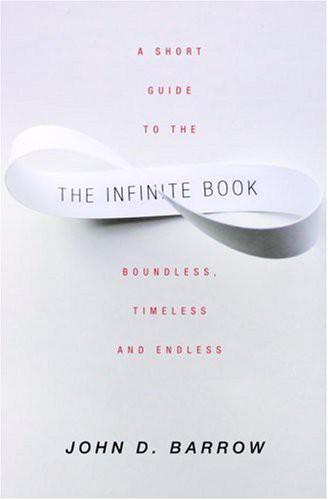
The Infinite Book: A Short Guide to the Boundless, Timeless and Endless
by
John D. Barrow
Published 1 Aug 2005
Likewise in an infinite limiting process, the limit can have a property that is not shared by any of the individual items that add up to attain the limit. RUBBING THOMSON’S LAMP ‘On two occasions I have been asked, by members of Parliament, “Pray, Mr. Babbage, if you put into the machine wrong figures, will the right answers come out?” I am not able rightly to apprehend the kind of confusion of ideas that could provoke such a question.’ Charles Babbage Suppose that you have a reading lamp with a push-button that switches the light and off. If the light is ‘off ’ to start with then if you press the button once, or any odd number of times, the lamp will be ‘on’. Press it an even number of times and the lamp will be ‘off ’. A little demon now appears and decides that he will press the button continually so as to leave the lamp ‘on’ for ½ a minute, then ‘off ’ for ¼ of a minute, ‘on’ for 1/8 of a minute, ‘off ’ for 1/16 of a minute and so on.
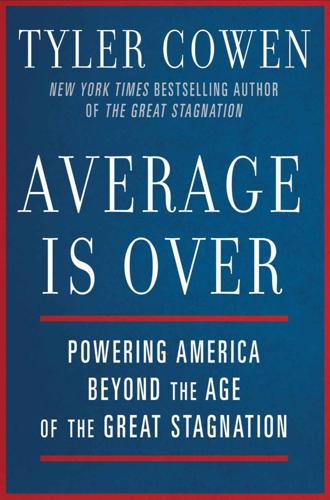
Average Is Over: Powering America Beyond the Age of the Great Stagnation
by
Tyler Cowen
Published 11 Sep 2013
In these pages I paint a vision of a future which at first appears truly strange, but at least to me is also discomfortingly familiar and indeed intuitive. As a blogger and economics writer, I find that the question I receive most often from readers is—by far—something like: “What will the low- and mid-skilled jobs of the future look like?” This question is on everyone’s mind with a new urgency but it goes back to David Ricardo and Charles Babbage in the nineteenth century. Ricardo was a leading economist of his time who wrote on “the machinery question,” while Babbage was the intellectual father of the modern computer and he—not coincidentally—also wrote on how radical mechanization was going to reshape work. These questions have reemerged as culturally central because we are at the crux of a technological revolution once again.
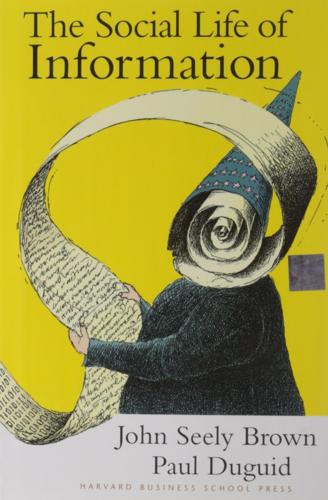
Social Life of Information
by
John Seely Brown
and
Paul Duguid
Published 2 Feb 2000
Inevitably, that adjustment took time and proceeded in a series of feedback loops along with developments in the technology. But this was a matter not of society "catching up" with technology, but of society adjusting technology to its needs. The computer would seem to follow a similar trajectory. Whenever we start its process of development (some would go back to Charles Babbage, a contemporary of Faraday's; others to the adding and calculating machines of the turn of the century), there follows a long period in which it also is both too expensive and too frail for widespread social adoption. Gradually, it has become more robust, cheaper, and more useful. Only in the past few years has it begun to be "tamed" for general use.

The Internet Is Not the Answer
by
Andrew Keen
Published 5 Jan 2015
In the words of the British legal philosopher H. L. A. Hart, Bentham was a “cost-benefit expert on the grand scale.”40 And the nineteenth-century Scottish thinker Thomas Carlyle criticized Bentham as a philosopher focused on “counting up and estimating men’s motives.” Half a century before his compatriot Charles Babbage invented the first programmable computer, Bentham was already thinking about human beings as calculating machines. And the Panopticon—which he spent much of his life futilely trying to build—is a “simple idea in Architecture” that enables everything and everyone to be watched and measured. The establishment of a Bentham-style electronic panopticon, fused with his utilitarian faith in the quantification of society, is what is so terrifying about twenty-first-century networked society.

Artificial Unintelligence: How Computers Misunderstand the World
by
Meredith Broussard
Published 19 Apr 2018
Jacquard’s loom ran on binary logic: a hole in the card meant binary one; no hole meant binary zero. The machine wove its intricate patterns based on whether there was a hole or not. It took a few decades for people to figure out the details, but finally there was a breakthrough in in 1822, when English scientist Charles Babbage began work on what he called a difference engine. This machine could proximate polynomials, meaning it allowed mathematicians to describe the relationship among several variables, such as range and air pressure. The difference engine was also designed to compute logarithmic and trigonometric functions, which are unpleasant to calculate by hand.
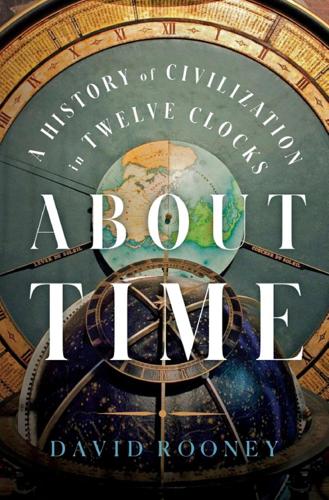
About Time: A History of Civilization in Twelve Clocks
by
David Rooney
Published 16 Aug 2021
It is driven by falling weights, wound every few days or so. The pendulum, which twists like that of an anniversary clock, ticks twice per minute, working through an oversized watch mechanism to transmit time to the mechanical computer at the heart of the clock. This computer, inspired by the machines of the nineteenth-century inventor Charles Babbage, performs a calculation and updates the dial display once each hour. The slowest part of the dial rotates once in about 26,000 years, showing the precession of the equinoxes. As the designer of some of the world’s fastest supercomputers in the 1980s, Hillis said in the 1990s that he wanted to atone for his sins in speeding up the world by designing the world’s slowest computer for the Long Now clock.

How to Fix the Future: Staying Human in the Digital Age
by
Andrew Keen
Published 1 Mar 2018
While natural human language isn’t replicable in machines.” I ask him if he shares the fear of AI pessimists who believe that technology could develop a mind of its own and thereby enslave us. Computers, the thinking machines imagined by the Victorian mathematician Ada Lovelace and her business partner, Charles Babbage, in the mid-nineteenth century, are the defining invention of the last couple of hundred years, Wolfram explains. But the one thing that they don’t possess, he insists, is what he calls “goals.” Computers don’t know what to do next, he says. We can’t program them to know that. They couldn’t write the next paragraph of this book.
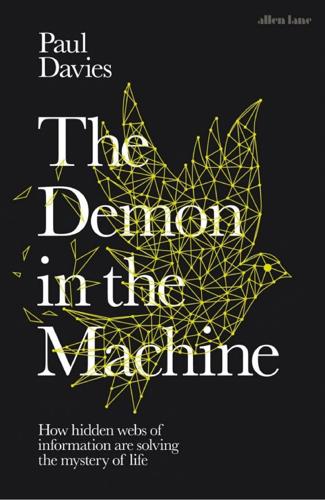
The Demon in the Machine: How Hidden Webs of Information Are Finally Solving the Mystery of Life
by
Paul Davies
Published 31 Jan 2019
THE LOGIC OF LIFE fn1 An axiom is a statement taken to be obviously true – such as ‘if x = y, then y = x’, which is to say that if on a farm there are the same number of sheep as goats, then there are the same number of goats as sheep. fn2 The origins of the Entscheidungsproblem can be traced back to an earlier address by Hilbert, delivered in 1900 to the International Congress of Mathematicians at the Sorbonne in Paris. fn3 Charles Babbage, a century earlier, arrived at the same basic concept, but he made no attempt to offer a formal proof of universal computability. fn4 As usual, things are a bit more complicated, because both read-out and replication can occur at the same time, sometimes in the same region, risking traffic accidents.

Other Pandemic: How QAnon Contaminated the World
by
James Ball
Published 19 Jul 2023
His imagined traveller sets out the reasoning behind it: About four hundred years previously, the state of mechanical knowledge was far beyond our own … until one of the most learned professors of hypothetics wrote an extraordinary book proving that the machines were ultimately destined to supplant the race of man, and to become instinct with a vitality as different from, and superior to, that of animals, as animal to vegetable life.3 So convinced by the professor’s ideas were the denizens of Butler’s fictional kingdom that hundreds of years prior to the traveller’s arrival they had already purged all technology that wasn’t at least 271 years old – and then had banned all new technology after that point. Such an idea might not feel like an especially original one for a satirical or utopian work of fiction now, but Butler’s work came long before anything remotely resembling modern computing had ever been conceived. Charles Babbage, sometimes credited as the father of modern computing, had introduced his ‘difference engine’ some fifty years before, but it had never been built and was something of a thought experiment. As Butler’s novel shows, even before computers could analyse – let alone think – we were preoccupied with the idea that the evolution of mechanical (or digital) intelligences could do us harm.
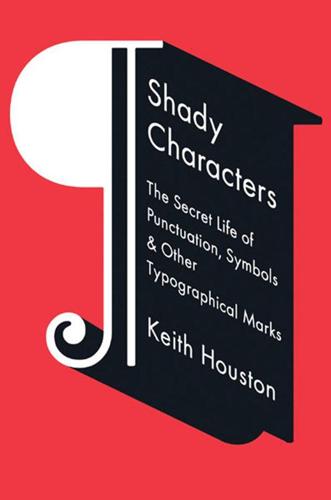
Shady Characters: The Secret Life of Punctuation, Symbols, and Other Typographical Marks
by
Keith Houston
Published 23 Sep 2013
The race to automate the composition process finally came to fruition in the closing decades of the Victorian era. Baroque mechanical contraptions had invaded every corner of nineteenth century life, from factories to homes: Joseph-Marie Jacquard’s punch card–driven loom of 1801 made it possible to mass produce intricate fabric weaves; Charles Babbage’s mathematical engines of the 1820s and ’30s pioneered the automated solution of mathematical formulae, and even a visit to the bathroom was enlivened by the appearance of the flushing toilets popularized by one Thomas Crapper.39 The ossified printing industry was long overdue for a similar shake-up.

Lonely Planet London City Guide
by
Tom Masters
,
Steve Fallon
and
Vesna Maric
Published 31 Jan 2010
HUNTERIAN MUSEUM Map 7869 6560; www.rcseng.ac.uk/museums; Royal College of Surgeons, 35-43 Lincoln’s Inn Fields WC2; admission free; 10am-5pm Tue-Sat; Holborn The collection of anatomical specimens of pioneering surgeon John Hunter (1728–93) inspired this fascinating, slightly morbid, little-known, yet fantastic London museum. Among the more bizarre items on display are the skeleton of a 2.3m giant, half of mathematician Charles Babbage’s brain and, hilariously, Winston Churchill’s dentures. Thanks to a massive refurbishment some years back, the atmosphere is less gory and allows decent viewing of things such as animal digestive systems, forensically documented in formaldehyde, and wonders such as the ‘hearing organ’ of a blue whale.
…
Of course, it’s impossible to miss the Energy Ring, a huge interactive sculpture that hangs in the space next to the gallery called Energy: Fuelling the Future on the 2nd floor. Kids can enter their names then ask energy questions: the answers appear like electronic tickertape messages, running around the inside of the ring. On the same level you will also find a re-creation of Charles Babbage’s Analytical Engine (1834), now considered the forerunner to the computer. The 3rd-floor Flight and Launchpad galleries are favourite places for children, with its gliders, hot-air balloon and varied aircraft, including the Gipsy Moth, in which Amy Johnson flew to Australia in 1930. This floor also features an adapted flight simulator that’s been turned into a ‘Motionride’ (admission fees apply).
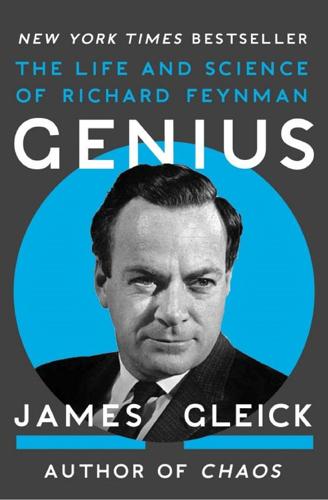
Genius: The Life and Science of Richard Feynman
by
James Gleick
Published 1 Jan 1992
There were rows and columns of keys for entering numbers, a plus bar and a minus bar, a multiplier key and a negative multiplier key, shift keys, and a key for stopping the machine when division went out of control, as it often did. Mechanical arithmetic was no simple affair. With all its buttons and linkages the Marchant was not quite as powerful as the giant Difference Engine and Analytical Engine, invented in England a century before by Charles Babbage in hopes of generating the printed tables of numbers on which navigators, astronomers, and mathematicians had to rely. Not only did Babbage solve the problem of carrying digits from one decimal place to the next; his machines actually used punched cards, borrowed from mechanical looms, to convey data and instructions.
…
Hood, Edwin Paxton. 1851. Genius and Industry: The Achievements of Mind Among the Cottages. London: Partridge and Oakey. Hudson, Liam, ed. 1970. The Ecology of Human Intelligence. London: Penguin. Huxley, Thomas H. 1897. Discourses: Biological and Geological Essays. New York: Appleton. Hyman, Anthony. 1982. Charles Babbage: Pioneer of the Computer. Oxford: Oxford University Press. Infeld, Leopold. 1950. Albert Einstein: His Work and Influence on Our World. New York: Scribner. Jaki, Stanley L. The Relevance of Physics. Chicago: University of Chicago Press. Jackiw, Roman; Khuri, Nicola N.; Weinberg, Steven; and Witten, Edward, eds. 1983.
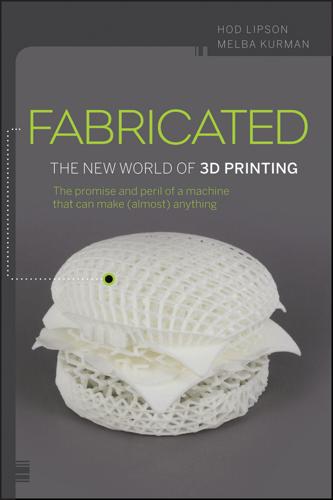
Fabricated: The New World of 3D Printing
by
Hod Lipson
and
Melba Kurman
Published 20 Nov 2012
In a peaceful office whose windows were lined with orchids, I sat down with Chris Johnson, founding Director of the SCI Institute. Chris was calm and unhurried. Chris’s polite, laid back demeanor belied the fact that over the years, he has won a string of awards for his work in biomedical computing and imaging, most recently, the IEEE Charles Babbage Award, computing’s version of an Oscar for lifetime achievement. Despite my sudden appearance at his Institute’s front desk, he was courteous and took the time to give me a tour of the Institute’s sparkling new four-story building. I asked Chris the key question: Will there ever be commercial design software to design and improve human body parts?
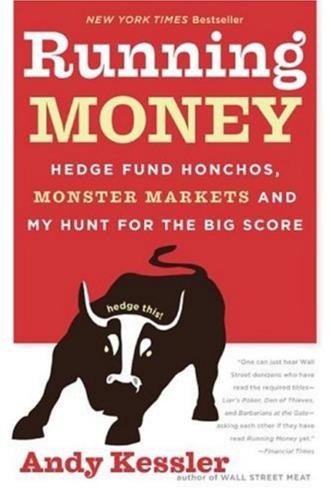
Running Money
by
Andy Kessler
Published 4 Jun 2007
Joint-stock companies became the rage, and the stock market was all too happy to step in and provide capital. Then more capital. And then too much capital. By the 1840s, a railroad mania was raging, stocks selling on multiples of passenger miles, a precursor for multiples of page views that Yahoo stock would trade on 150 years later. An inven- B&W IPO 93 tor named Charles Babbage complained that “the railroad mania withdrew from other pursuits the most intellectual and skilful draftsmen” and sought to invent a machine that might replace them, and make Yahoo possible. Charles Dickens marveled at railroad wealth. Investors made money, investors lost money, but in the best and worst of times, the railroads got built, and people and goods were shuffled about more and more cheaply.
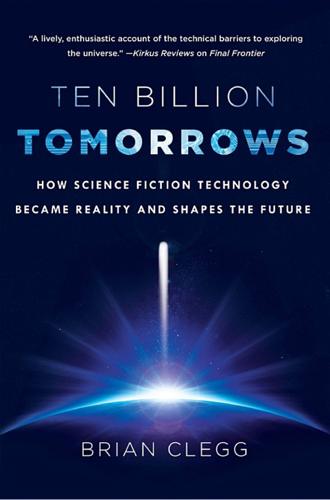
Ten Billion Tomorrows: How Science Fiction Technology Became Reality and Shapes the Future
by
Brian Clegg
Published 8 Dec 2015
The fancy cabinet that supported the chessboard housed a very small chess master, who manipulated the Turk’s hands and directed the play by pulling on a series of levers. The first realistic concepts that could lead toward an automated chess device came from the grandfathers and father of the modern computer respectively, Charles Babbage and Alan Turing. Babbage speculated that his mechanical programmable computer, the Analytical Engine, which was designed but never built, would be able to play chess, while Turing wrote a simple program for chess playing that was only ever executed by hand. More impetus was given by information theorist Claude Shannon in the 1950s.
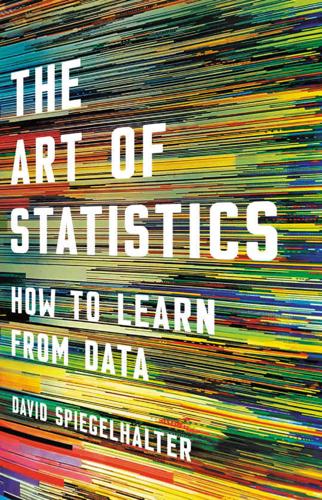
The Art of Statistics: How to Learn From Data
by
David Spiegelhalter
Published 2 Sep 2019
We just want to tell it how it is, or at least how it seems to be, and while we cannot ever claim to tell the absolute truth, we can at least try to be as truthful as possible. Of course this attempt at scientific objectivity is easier said than done. When the Statistical Society of London (later the Royal Statistical Society) was set up in 1834 by Charles Babbage, Thomas Malthus and others, they loftily declared that ‘The Statistical Society will consider it to be the first and most essential rule of its conduct to exclude carefully all opinions from its transactions and publications—to confine its attention rigorously to facts—and, as far as it may be found possible, to facts which can be stated numerically and arranged in tables.’7 From the very start they took no notice whatsoever of this stricture, and immediately starting inserting their opinions about what their data on crime, health and the economy meant and what should be done in response to it.

What Algorithms Want: Imagination in the Age of Computing
by
Ed Finn
Published 10 Mar 2017
It turns progress and computational efficiency into a performance, a spectacle that occludes the real decisions and trade-offs behind the mythos of omniscient code. And we believe it because we have lived with this myth of the algorithm for a long time—much longer than computational pioneers Alan Turing or even Charles Babbage and their speculations about thinking machines. The cathedral is a pervasive metaphor here because it offers an ordering logic, a superstructure or ontology for how we organize meaning in our lives. Bogost is right to cite the Enlightenment in his piece, though I will argue the relationship between algorithmic culture and that tradition of rationalism is more complicated than a simple rejection or deification.

The Fourth Age: Smart Robots, Conscious Computers, and the Future of Humanity
by
Byron Reese
Published 23 Apr 2018
The history from the beginning of computers to today is quite short, and for our purposes here can be told by mentioning just four names, which when listed together sound like a high-tech law firm: Babbage, Turing, von Neumann, and Shannon. Let’s look at just one idea from each, which, when taken together, will give you the essentials of modern computing. The story begins in 1821 in London with Charles Babbage. At the time, the Industrial Revolution was under way, and science and math moved from the university and the laboratory into the factory. In the days before calculating machines, large books of tables were published that could be used as shortcuts by those doing complex calculations. These books contained logarithms, astronomical calculations, and loads of other data sets essential for industry and science.
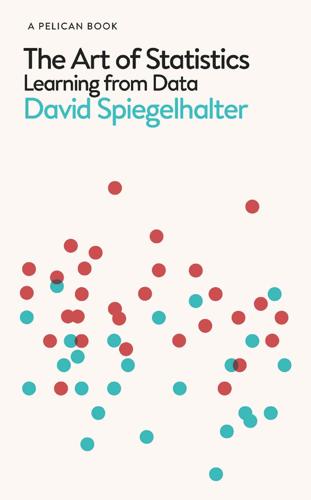
The Art of Statistics: Learning From Data
by
David Spiegelhalter
Published 14 Oct 2019
We just want to tell it how it is, or at least how it seems to be, and while we cannot ever claim to tell the absolute truth, we can at least try to be as truthful as possible. Of course this attempt at scientific objectivity is easier said than done. When the Statistical Society of London (later the Royal Statistical Society) was set up in 1834 by Charles Babbage, Thomas Malthus and others, they loftily declared that ‘The Statistical Society will consider it to be the first and most essential rule of its conduct to exclude carefully all opinions from its transactions and publications – to confine its attention rigorously to facts – and, as far as it may be found possible, to facts which can be stated numerically and arranged in tables.’7 From the very start they took no notice whatsoever of this stricture, and immediately starting inserting their opinions about what their data on crime, health and the economy meant and what should be done in response to it.
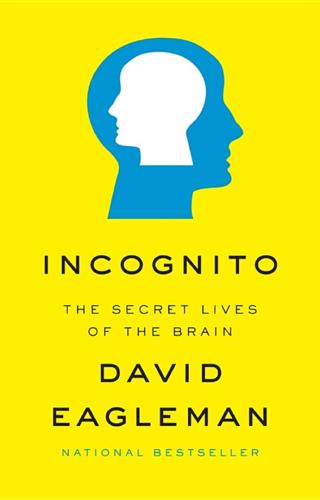
Incognito: The Secret Lives of the Brain
by
David Eagleman
Published 29 May 2011
There’s Someone In My Head, But It’s Not Me 1 Music: “Tremendous Magic,” Time December 4, 1950. 2 Something I’ve always found inspiring: the year Galileo died—1642—Isaac Newton was born into the world and completed Galileo’s job by describing the equations underlying the planetary orbits around the sun. 3 Aquinas, Summa theologiae. 4 Specifically, Leibniz envisioned a machine that would use marbles (representing binary numbers) that would be guided by what we now recognize as cousins to punch cards. Although Charles Babbage and Ada Lovelace are generally credited with working out the concepts of software separation, the modern computer is essentially no different than what Leibniz envisaged: “This [binary] calculus could be implemented by a machine (without wheels) in the following manner, easily to be sure and without effort.
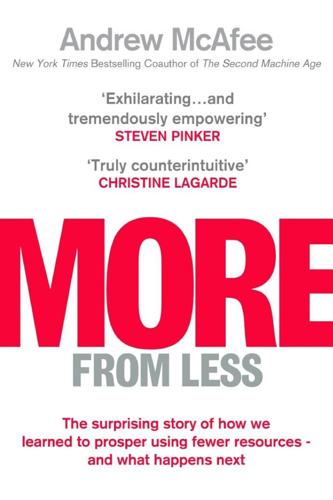
More From Less: The Surprising Story of How We Learned to Prosper Using Fewer Resources – and What Happens Next
by
Andrew McAfee
Published 30 Sep 2019
When China announced the formal end of the one-child policy in late 2015, Paul Ehrlich responded with a tweet: “China to End One-Child Policy, Allowing Families Two Children… GIBBERING INSANITY—THE GROWTH-FOREVER GANG.” CHAPTER 7 What Causes Dematerialization? Markets and Marvels The triumph of the industrial arts will advance the cause of civilization more rapidly than its warmest advocates could have hoped. —Charles Babbage, The Exposition of 1851; or, Views of the Industry, the Science, and the Government of England, 1851 If CRIB strategies aren’t responsible for the large-scale dematerialization of the American economy that has taken place since Earth Day, then what is? How have we got more from less? I believe that four main forces are responsible, and that it’s helpful to think of them as two pairs.
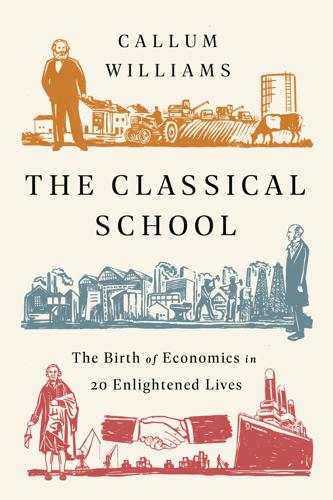
The Classical School
by
Callum Williams
Published 19 May 2020
In her autobiography Martineau recalls the amusement of Thomas Malthus “when I told him I was sick of his name before I was fifteen”. Malthus was not Martineau’s only famous friend. In her day she was something of a celebrity, especially after she moved to London in the early 1830s. Eventually, says Michael Hill, “her intellectual circle came to include Charles Babbage, Thomas Carlyle, George Eliot, Florence Nightingale, Charles Dickens, Thomas Malthus, William Wordsworth, Charlotte Bronte, Charles Lyell, and Charles Darwin”. She was also exceptionally well-travelled. In 1837 Martineau published Society in America, a report from a two-year study trip around the United States.

Data Action: Using Data for Public Good
by
Sarah Williams
Published 14 Sep 2020
With that growth came extreme poverty, a lack of proper housing and sanitation, and outbreaks of cholera (in 1832 and 1850s).25 Such outbreaks, it turns out, propelled early nineteenth-century data collection efforts, often in direct response to public health issues, living conditions, or poverty.26 In Britain, this interest resulted in the establishment of a number of statistical societies,27 the first of which, the Manchester Historical Society, was founded in 1833, at approximately the same time that the United Kingdom's Ordnance Survey started to create cadastral (detailed map) surveys of cities.28 Just a year later, in 1834, Charles Babbage co-founded the Statistical Society of London, which later became the Royal Statistical Society. Increased access to data helped encourage the development of these new organizations to address issues important to society. The fields of epidemiology and public health were born from this new, heightened interest in statistical analysis and mapping.

The Myth of Artificial Intelligence: Why Computers Can't Think the Way We Do
by
Erik J. Larson
Published 5 Apr 2021
He credited his pupil, and his pupil’s predecessor: “Yet the logical machines of Jevon and Marquand are mills into which the premises are fed and which turn out the conclusions by the revolution of a crank.” The American inventor Charles Henry Webb, too, had designed a machine for performing arithmetic, and the English genius Charles Babbage developed a proof of concept (along with his protégé Ada Lovelace) for a more visionary machine, performing general computations. They were machines that could “perform reasoning of no simple kind.”16 “Logical Machines” then departs into detailed discussion of automating deductive syllogisms.

The Europeans: Three Lives and the Making of a Cosmopolitan Culture
by
Orlando Figes
Published 7 Oct 2019
‘We are living at a period of most wonderful transition, which tends rapidly to the accomplishment of that great end to which, indeed, all history points – the realization of the unity of mankind,’ declared Prince Albert, emphasizing how the ‘achievements of modern invention’ meant that the ‘distances which separated the different nations’ were ‘gradually vanishing’. The benefits of cultural exchange between nations were at the heart of this discourse. ‘The Exposition is calculated to promote and increase the free interchange of raw materials and manufactured commodities between all the nations of the earth,’ wrote Charles Babbage, the English polymath best known for his invention of a mechanical computer, whose ideas influenced the layout of the exhibition. ‘It is the interest of every people that all other nations should advance in knowledge, in industrial skill, in taste, and in science.’25 For Karl Marx, who had been living in exile in London since 1849, the exhibition was ‘a striking proof of the concentrated power with which modern large-scale industry is everywhere demolishing national barriers and increasingly blurring local peculiarities of production, society and national character among all peoples’.
…
BNF, NA Fr. 16278, Papiers Viardot, vol. 7, Varia, f. 15, 28 Feb. 1851. 23. The Times, 11 Aug. 1851, p. 3. See Stier, Pauline Viardot-Garcia in Grossbritannien, pp. 112 ff. 24. Pauline Viardot to Joaquina Garcia, July 1851, private collection. 25. Paul Young, Globalization and the Great Exhibition: The Victorian New World Order (Basingstoke, 2009), pp. 51–2; Charles Babbage, The Exposition of 1851 (London, 1851), pp. 42–3. 26. Karl Marx and Friedrich Engels, ‘Review: May–October 1850’, Neue Rheinische Zeitung, cited from Marxist-org Internet Archive. 27. Clare Pettitt, Patent Inventions: Intellectual Property and the Victorian Novel (Oxford, 2004), p. 86. 28.

QI: The Second Book of General Ignorance
by
Lloyd, John
and
Mitchinson, John
Published 7 Oct 2010
But still they continue to thrive in the UK, especially from people at the seaside. The Royal Mail estimated that 135 million postcards were sent during the summer of 2009. The top five places they came from were, in order: Brighton, Scarborough, Bournemouth, Blackpool and Skegness. Who made the first computer? The key word here is made. The mathematician Charles Babbage (1791–1871) is known as the ‘father of modern computing’, but more for his ideas than for any concrete achievement. The first full-size Babbage Engine, using his original designs, made exclusively from materials available in his day, wasn’t completed until 2002. It is 3.3 metres (11 feet) long, weighs 5 tons, contains 8,000 parts and took seventeen years to build.
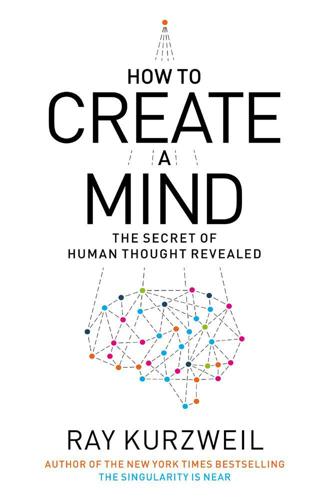
How to Create a Mind: The Secret of Human Thought Revealed
by
Ray Kurzweil
Published 13 Nov 2012
Interestingly, Zuse had support from the German Aircraft Research Institute, which used the device to study wing flutter, but his proposal to the Nazi government for funding to replace his relays with vacuum tubes was turned down. The Nazis deemed computation as “not war important.” That perspective goes a long way, in my view, toward explaining the outcome of the war. There is actually one genuine forerunner to von Neumann’s concept, and it comes from a full century earlier! English mathematician and inventor Charles Babbage’s (1791–1871) Analytical Engine, which he first described in 1837, did incorporate von Neumann’s ideas and featured a stored program via punched cards borrowed from the Jacquard loom.4 Its random access memory included 1,000 words of 50 decimal digits each (the equivalent of about 21 kilobytes).

The English
by
Jeremy Paxman
Published 29 Jan 2013
‘We were all born in a world made in England and the world in which our great-grandchildren will mellow into venerable old age will be as English as the Hellenistic world was Greek, or, better, Athenian’, is the way one academic puts it.1 They developed the current forms of soccer and rugby, tennis, boxing, golf, horse-racing, mountaineering and skiing. The English created modern tourism with the Grand Tour and Thomas Cook’s first package tour. They developed the first modern luxury hotel (the Savoy with electric lights, six lifts and seventy bedrooms). Charles Babbage produced the world’s first computer in the 1820s. A Scot, John Logie Baird, was one of the inventors of television, in an attic in Hastings. He held his first public demonstration in Soho, London. Sandwiches, Christmas cards, Boy Scouts, postage stamps, modern insurance and detective novels are all products ‘Made in England’.
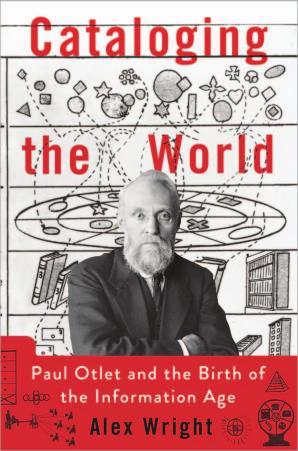
Cataloging the World: Paul Otlet and the Birth of the Information Age
by
Alex Wright
Published 6 Jun 2014
He saw these developments as fundamentally connected to a larger utopian project that would bring the world closer to a state of permanent and lasting peace and toward a state of collective spiritual enlightenment. The conventional history of the Internet traces its roots through an Anglo-American lineage of early computer scientists like Charles Babbage, Ada Lovelace, and Alan Turing; networking visionaries like Vinton G. Cerf and Robert E. Kahn; as well as hypertext seers like Vannevar Bush, J. C. R. Licklider, Douglas Engelbart, Ted Nelson, and of course Tim Berners-Lee and Robert Cailliau, who in 1991 released their first version of the World Wide Web.
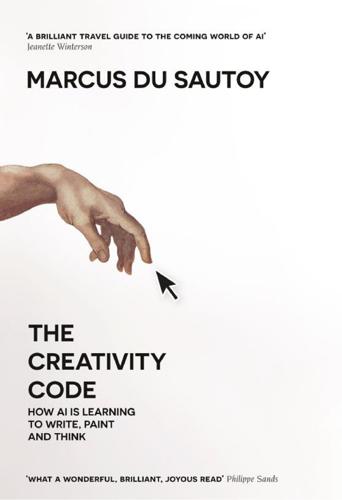
The Creativity Code: How AI Is Learning to Write, Paint and Think
by
Marcus Du Sautoy
Published 7 Mar 2019
Source ISBN: 9780008288150 Ebook Edition © March 2019 ISBN: 9780008288167 Version: 2019-01-28 Dedication To Shani, for all her love and support, creativity and intelligence CONTENTS Cover Title Page Copyright Dedication 1 The Lovelace Test 2 Creating Creativity 3 Ready, Steady, Go 4 Algorithms, the Secret to Modern Life 5 From Top Down to Bottom Up 6 Algorithmic Evolution 7 Painting by Numbers 8 Learning from the Masters 9 The Art of Mathematics 10 The Mathematician’s Telescope 11 Music: The Process of Sounding Mathematics 12 The Songwriting Formula 13 DeepMathematics 14 Language Games 15 Let AI Tell You a Story 16 Why We Create: A Meeting of Minds Footnote Illustrations Further Reading Index Acknowledgements By the same author About the Publisher 1 THE LOVELACE TEST Works of art make rules; rules do not make works of art. Claude Debussy The machine was a thing of beauty. Towers of gears with numbers on their teeth pinned to rods driven by a handle that you turned. The seventeen-year-old Ada Byron was transfixed as she cranked the handle of Charles Babbage’s machine to watch it crunch numbers, calculate squares and cubes and even square roots. Byron had always had a fascination with machines, fanned by the tutors her mother had been happy to provide. Studying Babbage’s plans some years later for the Analytical Engine, it dawned on Ada, now married to the Earl of Lovelace, that this was more than just a number cruncher.

Artificial Intelligence: A Guide for Thinking Humans
by
Melanie Mitchell
Published 14 Oct 2019
“Artificial Intelligence, Automation, and the Economy,” Executive Office of the President, Dec. 2016, www.whitehouse.gov/sites/whitehouse.gov/files/images/EMBARGOED%20AI%20Economy%20Report.pdf. 6. This harks back to what Alan Turing called “Lady Lovelace’s objection,” named for Lady Ada Lovelace, a British mathematician and writer who worked with Charles Babbage on developing the Analytical Engine, a nineteenth-century proposal for a (never completed) programmable computer. Turing quotes from Lady Lovelace’s writings: “The Analytical Engine has no pretensions to originate anything. It can do whatever we know how to order it to perform.” A. M. Turing, “Computing Machinery and Intelligence,” Mind 59, no. 236 (1950): 433–60. 7.

Calling Bullshit: The Art of Scepticism in a Data-Driven World
by
Jevin D. West
and
Carl T. Bergstrom
Published 3 Aug 2020
It was just trying to discriminate between two different sets of faces in the training set. The presence or absence of a smile turned out to be a useful signal, because of the way the training images were chosen. No algorithm, no matter how logically sound, can overcome flawed training data. Early computing pioneer Charles Babbage commented on this in the nineteenth century: “On two occasions I have been asked, ‘Pray, Mr. Babbage, if you put into the machine wrong figures, will the right answers come out?’…I am not able rightly to apprehend the kind of confusion of ideas that could provoke such a question.” As we noted earlier, good training data are often difficult and expensive to obtain.

The Road to Conscious Machines
by
Michael Wooldridge
Published 2 Nov 2018
We could begin in the early nineteenth century with the young Mary Shelley, cooped up in a Swiss villa during a spell of bad weather, creating the story of Frankenstein to entertain her husband, the poet Percy Bysshe Shelley, and their family friend, the notorious Lord Byron. We could begin in London in the 1830s with Ada Lovelace, estranged daughter of the same Lord Byron, striking up a friendship with Charles Babbage, curmudgeonly inventor of mechanical calculating machines, and inspiring the brilliant young Ada to speculate about whether machines might ultimately be creative. We could equally well begin with the eighteenth-century fascination with automata – cunningly designed machines that gave some illusion of life.
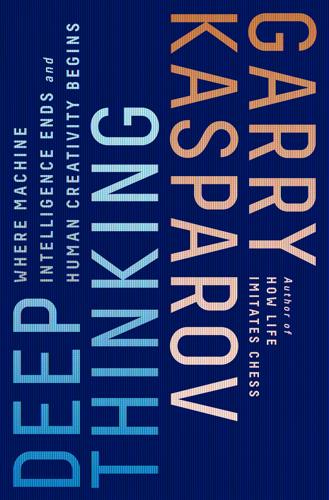
Deep Thinking: Where Machine Intelligence Ends and Human Creativity Begins
by
Garry Kasparov
Published 1 May 2017
It was as if ghosts could be imagined in the machines as soon as their processes could no longer be followed by the naked eye. Mechanical calculators had been around since the seventeenth century and key-driven desktop versions were produced in the thousands by the middle of the nineteenth. Programmable mechanical calculators were designed by Charles Babbage in 1834, and the first “computer” program for one was written by Ada Lovelace in 1843. Despite the impressive sophistication of these machines, nobody seriously wondered if they were intelligent any more than they did about pocket watches or steam locomotives. Even if you had no idea how a mechanical device like a cash register performed, you could hear the wheels spinning.

The Secret Life of Bletchley Park: The WWII Codebreaking Centre and the Men and Women Who Worked There
by
Sinclair McKay
Published 24 May 2010
Besides which, adds Mr Lawn, there was simply so much of it about: ‘The other couple I recollect was Bob Roseveare and Ione Jay. He was a mathematician, straight from school. He hadn’t even gone to university. Very brilliant chap from Marlborough. He married Ione Jay, who was one of the girls in Hut 6. ‘Then there was Charles Babbage, who was a don similar to [Gordon] Welchman. Same sort of age. Babbage married while he was there.’ It was obviously not always a case of automatic marriage. ‘Some of our old Bletchley Park flames have come out of the woodwork,’ Mr Lawn adds, laughing. ‘I had one and Sheila had one. Mine was a lady who I saw for quite a short time.

Rise of the Robots: Technology and the Threat of a Jobless Future
by
Martin Ford
Published 4 May 2015
A Moral Question If we think again in terms of doubling a penny as a proxy for the exponential advance of digital technology, it’s clear that today’s enormous technological account balance results from the efforts of countless individuals and organizations over the course of decades. Indeed, the arc of progress can be traced back in time at least as far as Charles Babbage’s mechanical difference engine in the early seventeenth century. The innovations that have resulted in fantastic wealth and influence in today’s information economy, while certainly significant, do not really compare in importance to the groundbreaking work done by pioneers like Alan Turing or John von Neumann.

A Pelican Introduction Economics: A User's Guide
by
Ha-Joon Chang
Published 26 May 2014
Smith called the pin manufacture a ‘trifling’ example and later went on to note how more complicated the divisions of labour for other products are, but there is no denying that he lived in a time when ten people working together to make a pin was still considered cool – well, at least cool enough to front someone’s would-be magnum opus in what then was a cutting-edge subject. The next two and a half centuries have seen dramatic developments in technology, driven by mechanization and the use of chemical processes, not least in the pin industry. Two generations after Smith, the output per worker had nearly doubled. Following Smith’s example, Charles Babbage, the nineteenth-century mathematician who is known as the conceptual father of the computer, studied pin factories in 1832.* He found that they were producing about 8,000 pins per worker a day. 150 more years of technological progress increased productivity by yet another 100 times, to 800,000 pins per worker per day, according to the 1980 study by the late Clifford Pratten, a Cambridge economist.2 The increase in the productivity of making the same thing, such as the pin, is only one part of the story.
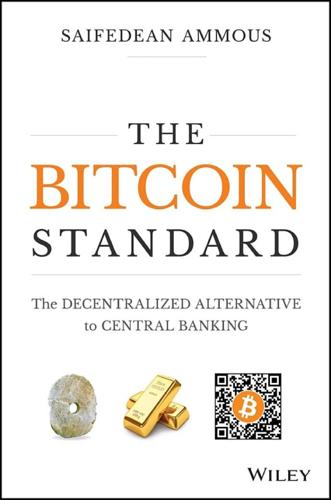
The Bitcoin Standard: The Decentralized Alternative to Central Banking
by
Saifedean Ammous
Published 23 Mar 2018
Telephone, wireless telegraphy, voice recording, color photography, movies: While we like to think of our modern era as being the era of mass telecommunication, in reality, most of what we have achieved in the twentieth century was to improve on the innovations of the nineteenth. The first computer was the Babbage computer, designed in 1833 by Charles Babbage, but completed by his son Henry in 1888. It might be an exaggeration to say that the Internet and all it contains are bells and whistles added onto the invention of the telegraph in 1843, but it does contain a kernel of truth. It was the telegraph which fundamentally transformed human society by allowing for communication without the need for the physical transport of letters or messengers.
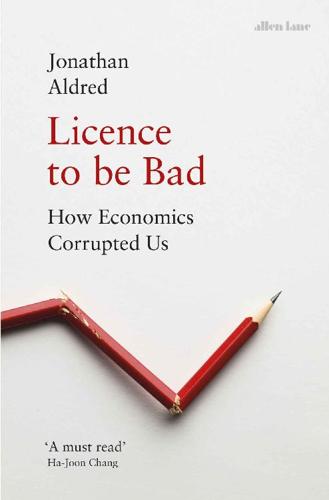
Licence to be Bad
by
Jonathan Aldred
Published 5 Jun 2019
Meucci filed a statement of intent to patent in 1871, five years before Bell. Bell is in the history books only because, in 1874, Meucci let the statement lapse because he could not afford the $10 renewal fee.15 It’s not just that Bill Gates was lucky. His success depended greatly on the work of others, starting with Charles Babbage. Similarly, while Apple were lauded and rewarded for introducing a computer mouse to accompany their Mac desktop in 1984, it was Douglas Engelbart and Bill English who, with funding from the US Air Force, had invented the computer mouse back in the early 1960s.fn1 When, in popular mythology, a single individual is strongly associated with a new product, invention or breakthrough, it is exactly that – a myth.
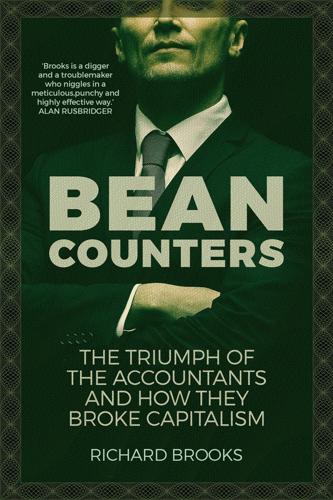
Bean Counters: The Triumph of the Accountants and How They Broke Capitalism
by
Richard Brooks
Published 23 Apr 2018
The practical experience of industrialists like Wedgwood became a recognized discipline of ‘cost accounting’ thanks to the work of academics like Aberdeen philosophy professor Robert Hamilton. ‘When a person is engaged in several branches of manufacture,’ he explained in his 1788 Introduction to Merchandise, ‘he should keep his books in such a manner as to exhibit the gain or loss on each.’2 The great English mathematician Charles Babbage extended the principle to different stages of production, famously breaking down the manufacture of pins into seven steps to arrive at the time and labour costs of ‘making each part of a single pin, in millionths of a penny’.3 The insights of Hamilton and Babbage were seized on in the United States.

Dark Territory: The Secret History of Cyber War
by
Fred Kaplan
Published 1 Mar 2016
Rona was referring not to computers but to technology that theoretically enhanced the capability of certain weapons systems by linking them to intelligence sensors. “decapitate the enemy’s command structure”: Warner, “Cybersecurity: A Pre-history.” McConnell pushed hard for the Clipper Chip: Jeffrey R. Yost, “An Interview with Dorothy E. Denning,” OH 424, Computer Security History Project, April 11, 2013, Charles Babbage Institute, University of Minnesota, http://conservancy.umn.edu/bitstream/handle/11299/156519/oh424ded.pdf?sequence=1; and interviews. CHAPTER 3: A CYBER PEARL HARBOR “critical national infrastructure”: President Bill Clinton, PDD-39, “U.S. Policy on Counterterrorism,” June 21, 1995, http://fas.org/irp/offdocs/pdd/pdd-39.pdf.
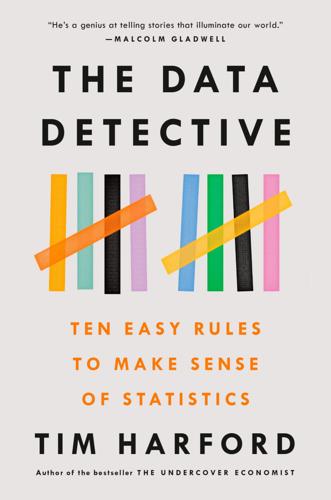
The Data Detective: Ten Easy Rules to Make Sense of Statistics
by
Tim Harford
Published 2 Feb 2021
* * * — All that lay far in the future when Florence Nightingale was a girl discovering a passion for data. At the age of nine she was categorizing and graphing the plants in her garden. As she grew older, she successfully pleaded with her parents to receive high-quality mathematical tuition; at dinner parties she met the likes of Charles Babbage, a mathematician and designer of a now-famous proto-computer; she was a houseguest of Ada Lovelace, Babbage’s collaborator; and she corresponded with the great Belgian statistician Adolphe Quetelet. Quetelet was the person who popularized the idea of taking the “average” or “arithmetic mean” of a group, which was a revolutionary way to summarize complex data with a single number.

Silence on the Wire: A Field Guide to Passive Reconnaissance and Indirect Attacks
by
Michal Zalewski
Published 4 Apr 2005
Assuming we skip the pesky detail of making all the gates work together in a way we are accustomed with, we can conclude that computers can be built with almost any technology.[9] * * * [9] And, needless to say, nonelectric computers are not a tall tale. Famous examples of such devices include Charles Babbage’s Analytical Engine, and technologies such as nanotechnology also hold some promise. See Ralph C. Merkle, “Two Types of Mechanical Reversible Logic,” Nanotechnology 4 (1993). A Marginally More Popular Computer Design Although the computer boom of the last several decades sprang from the ingenious transistor, our reliance on it is not associated with any magical value or unique quality.

Boom: Bubbles and the End of Stagnation
by
Byrne Hobart
and
Tobias Huber
Published 29 Oct 2024
The cognitive supply chain Stanley Frankel and Eldred Nelson at Los Alamos and Alan Turing at Bletchley Park in the UK can all claim an approximate tie for the title of the first modern computer programmer. There had been mechanical computing devices before World War II, with Ada Lovelace and Charles Babbage’s Difference Engine in the 1830s a notable early example. But it was during the war that engineers at Los Alamos and Bletchley Park first systematized computation in a way that would be familiar to anyone who programs today: They broke tasks down into discrete steps, some of which could be executed trivially and some of which required more hands-on effort.

The Master Algorithm: How the Quest for the Ultimate Learning Machine Will Remake Our World
by
Pedro Domingos
Published 21 Sep 2015
Even more remarkable, this mechanism is of a type very familiar to computer scientists: iterative search, where we solve a problem by trying many candidate solutions, selecting and modifying the best ones, and repeating these steps as many times as necessary. Evolution is an algorithm. Paraphrasing Charles Babbage, the Victorian-era computer pioneer, God created not species but the algorithm for creating species. The “endless forms most beautiful” Darwin spoke of in the conclusion of The Origin of Species belie a most beautiful unity: all of those forms are encoded in strings of DNA, and all of them come about by modifying and combining those strings.
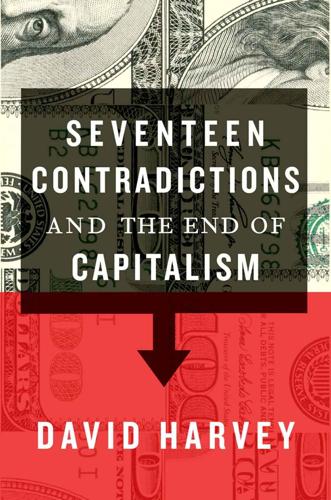
Seventeen Contradictions and the End of Capitalism
by
David Harvey
Published 3 Apr 2014
One important direction in capital–labour relations has been towards deskilling, a phenomenon that Marx noted in Capital and which was brought back centre stage in Harry Braverman’s influential and controversial book Labor and Monopoly Capital, published in 1974.1 Braverman argued that capital, particularly in its monopoly form, had a vested interest in degrading skills and so destroying any sense of pride that might attach to working for capital, while disempowering labour particularly at the point of production. There had been a long history of struggle over this. In the nineteenth century the ideologists of capital – Charles Babbage and Andrew Ure in particular – were much cited by Marx as evidence of capital’s penchant for deskilling. Braverman likewise made much of Frederick Taylor’s efforts at scientific management to disaggregate production processes to the point where a ‘trained gorilla’ would be able to undertake production tasks.

The Blockchain Alternative: Rethinking Macroeconomic Policy and Economic Theory
by
Kariappa Bheemaiah
Published 26 Feb 2017
Some Final Notes The remaining sections provide further perspective to topics covered earlier in the chapter: Section “Technology and Invention: A Combinatorial Process” Sidebar 4-1 : “A rationale for rational expectations” Section “The Mathematical Wizardry of Equilibrium Economic Models” A brief history of computing Sources: The Computing Universe: A Journey through a Revolution, Tony Hey and Gyuri Pápay, (2014); A History of Modern Computing (2nd Edition), Paul E. Ceruzzi, (1998). The story of computing and computers goes back to the early 19th century when Charles Babbage, a mathematician who was trained at Cambridge, first had the idea to create a machine to calculate logarithmic tables. In 1819, shortly after leaving Cambridge, Babbage was working with the astronomer John Herschel and carrying out arithmetical calculations by hand. As the process was tedious and fraught with errors, Babbage hit upon the idea of making a machine that could perform routine calculations by following precise arithmetical procedures.

The Future Is Faster Than You Think: How Converging Technologies Are Transforming Business, Industries, and Our Lives
by
Peter H. Diamandis
and
Steven Kotler
Published 28 Jan 2020
She was absolutely convinced it was the arts, and specifically poetry, that had driven her husband, Lord Byron, insane. Lady Byron was worried the condition might be hereditary and thus steered her daughter away from anything that might bring on such troubles. The tutoring paid off. In 1833, when Ada was seventeen, her life took a turn for the computational. It was then that she met Charles Babbage, who held the same chair at Cambridge University that had been once occupied by Isaac Newton and would later belong to Stephen Hawking. After learning of her love of math, Babbage invited Ada and her mother to see his “difference engine,” his steam-powered calculating machine. Stunned by what she saw, Ada was determined to understand it.

The Equality Machine: Harnessing Digital Technology for a Brighter, More Inclusive Future
by
Orly Lobel
Published 17 Oct 2022
Ada Lovelace was the daughter of famed poet Lord Byron and mathematician Lady Byron (née Anne Isabella Milbanke, nicknamed Annabella), also known as the “Princess of Parallelograms.” The mathematician mom left the poet dad and set out to teach her daughter rigorously. Annabella instilled a love of math in her daughter, and in her studies Ada came across the work of the famed engineer Charles Babbage, who had invented a giant, gear-filled calculator. In 1833, when she was only seventeen, Ada met Babbage and tried to convince him to collaborate. For a long while Babbage ignored Ada, yet she persisted. Ada took the initiative to translate a scholarly publication about his work from French to English, annotating it to make it twice as long.

The Most Powerful Idea in the World: A Story of Steam, Industry, and Invention
by
William Rosen
Published 31 May 2010
.* Another of Maudslay’s assistants, Joseph Whitworth, developed a measuring system accurate to one-millionth of an inch. This is not a misprint; until the United Kingdom joined the metric system, the standard unit for screw threads was the BSW, which stands for British Standard Whitworth. Whitworth worked for Maudslay at the same time as Joseph Clement, who would later build, on the instructions of Charles Babbage, the prototype for the original “difference engine”—the world’s first mechanical computer. Maudslay’s son, Joseph, later became a brilliant marine engineer, patenting the double-cylinder marine engine that was widely used during the nineteenth century. Yet another Maudslay graduate, James Nasmyth, the inventor of a steam hammer that made him the wealthiest of them all, wrote floridly of his mentor, “the indefatigable care which he took5 in inculcating and diffusing among his workmen, and mechanical men generally, sound ideas of practical knowledge, and refined views of construction, has rendered, and ever will continue to render, his name identified with all that is noble in the ambition of a lover of mechanical perfection.”
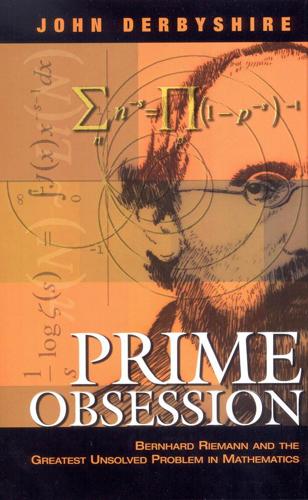
Prime Obsession:: Bernhard Riemann and the Greatest Unsolved Problem in Mathematics
by
John Derbyshire
Published 14 Apr 2003
Even a backwater, of course, has some pockets of vitality. Trinity College, Cambridge, where Littlewood was in residence, maintained a strong mathematical tradition. It had been Sir Isaac Newton’s college, 1661−1693, and counted several geniuses of mathematics and physics among its nineteenth-century alumni: Charles Babbage, generally credited with inventing the computer; the astronomer George Airy, after whom a family of mathematical functions is named; 226 PRIME OBSESSION Augustus de Morgan, the logician; Arthur Cayley, the algebraist; James Clerk Maxwell, and some lesser lights. Bertrand Russell got his degree at Trinity in 1893, was elected a fellow73 in 1895, and was teaching there at the time Hardy joined the faculty.

What to Think About Machines That Think: Today's Leading Thinkers on the Age of Machine Intelligence
by
John Brockman
Published 5 Oct 2015
A few centuries ago, we developed the ability to outsource muscle and motion to machines, causing one of the greatest economic expansions in history. Now we’ve evolved our collective ability to process information by creating objects endowed with the ability to beget and recombine physical order. These are machines that can process information—engines that produce numbers, like the engines Charles Babbage dreamed about. So we’ve evolved our ability to think collectively by first gaining dominion over matter, then over energy, and now over physical order, or information. Yet this shouldn’t fool us into believing that we think or that machines do. The large evolution of human thought requires mediated interactions, and the future of thinking machines will also happen at the interface where humans connect with humans through objects.
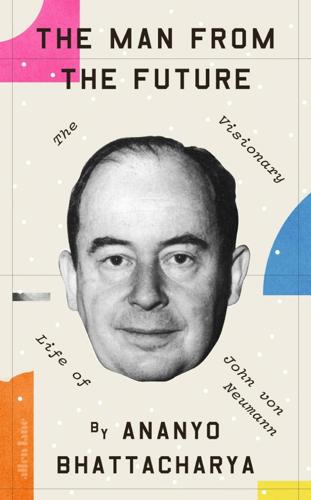
The Man From the Future: The Visionary Life of John Von Neumann
by
Ananyo Bhattacharya
Published 6 Oct 2021
Ibid. Von Neumann was among several early computer pioneers to be inspired by this ingenious mechanism, which allowed fabrics with complex patterns to be mass-produced for the first time. Like the loom, the Analytical Engine, a mechanical computer designed in the 1830s by the English polymath Charles Babbage, was to be programmed with strings of punched cards. ‘We may say most aptly that the Analytical Engine weaves algebraic patterns just as the Jacquard loom weaves flowers and leaves,’ wrote Babbage’s collaborator, the mathematician Countess Ada Lovelace. Sadly, Babbage never managed to raise the sizeable sum he needed to build the machine.
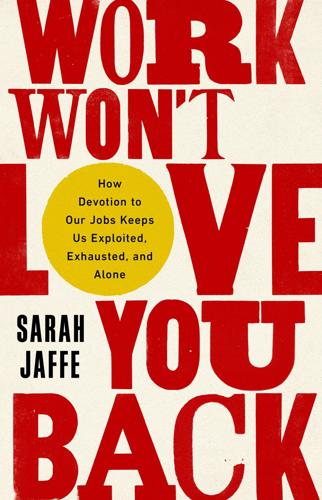
Work Won't Love You Back: How Devotion to Our Jobs Keeps Us Exploited, Exhausted, and Alone
by
Sarah Jaffe
Published 26 Jan 2021
PROGRAMMING, A FIELD CURRENTLY DOMINATED BY YOUNG MEN, WAS invented by a woman. Ada Lovelace was the daughter of Romantic poet Lord Byron, but her mother steered her into mathematics, “as if that were an antidote to being poetic.” Lovelace was inspired by mechanical weaving looms to design a program for Charles Babbage’s “Analytical Engine,” an early idea of a computer. Her insight was that the computer could be used not just to calculate complex equations but to handle music, graphics, words, anything that could be reduced to a code—perhaps even games. Her paper on the subject, now considered the first computer program, was published in a journal in 1843, years before anything resembling a computer had actually been built. 4 These days, the tech industry—as the shorthand would have it, leaving aside the question of just what is considered “technology”—is fawned over as the main driver of innovation in the world’s major capitalist economies.

Paper: A World History
by
Mark Kurlansky
Published 3 Apr 2016
In the early nineteenth century, she wrote the first algorithm intended to be carried out by a machine. The computer age does seem to have its origins in the Industrial Revolution, and Ada Lovelace was probably the first to write about a machine that could be programmed to work on any problem. But her ideas were based on those of Charles Babbage, who had built a machine, the Difference Engine, that could make calculations. Her most famous work is an 1843 treatise on the potential of Babbage’s machine. Forty years earlier, Joseph-Marie Jacquard had invented a loom that could be programmed with punch cards. Ada Lovelace was probably familiar with that machine because when the Luddites tried to smash them, her father, Lord Byron, famously spoke in the Luddites’ defense.

Greater: Britain After the Storm
by
Penny Mordaunt
and
Chris Lewis
Published 19 May 2021
Our inventions and the impact they have had on the world, ‘from inventing the World Wide Web to bringing about new industrial and manufacturing processes that have raised the living standards of literally billions of people around the world’. Others focused on consistency and longevity: For centuries, we’ve been at the heart of technological innovation. Through figures like Charles Babbage, Ada Lovelace and, more recently, Tim Berners-Lee, we’ve pioneered computing, algorithms and cyberspace. These are breakthroughs that have changed the world as we know it beyond recognition, and they will continue to ensure that the UK shapes the direction of the world. Our engineering skills were mentioned frequently, as were Britain’s ‘creativity and ingenuity’.
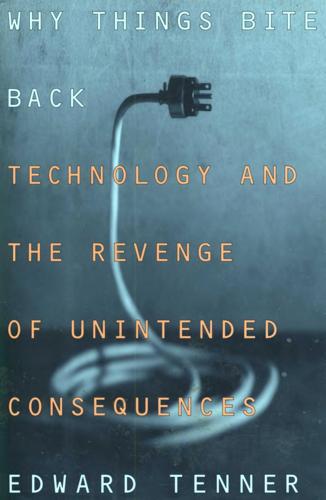
Why Things Bite Back: Technology and the Revenge of Unintended Consequences
by
Edward Tenner
Published 1 Sep 1997
His friend has a new name for akebia: "revenge vine." 47 • 8 The Computerized Office: The Revenge of the Body IT IS NOT only in the environment that technology tends to replace life-threatening problems with slower-acting and more persistent problems. Nor is it only outdoors that nature fights back. Changes in our business surroundings have been equally surprising, and often as frustrating. On one hand, business is now conducted at a pace and with an accuracy that nineteenth-century scientists and visionaries from Charles Babbage to Jules Verne did not dare to predict. (In fact, microprocessor power has overtaken many of the grandest expectations of twentieth-century computer pioneers.) On the other hand, the benefits of automated data and word processing have not been quite as expected. The revenge effects are physical: what had promised to make work painless unexpectedly attacks muscles, tendons, and vertebrae.

The Long History of the Future: Why Tomorrow's Technology Still Isn't Here
by
Nicole Kobie
Published 3 Jul 2024
Certain inventions had to arrive before others could follow: faster and cheaper computers enabled everything, while neural networks took off thanks to Graphics Processing Units (GPUs), wearable computers required lithium batteries, driverless cars were lost without satnav, smart cities needed connected sensors and so on. * * * Computing began in the 1820s with Charles Babbage and Ada Lovelace, who managed to design the world’s first computer and write programs for it, respectively, though the steam-powered Difference Engine was never fully completed in Babbage’s lifetime.3 So much for the idea that the only way to predict the future is to build it. Alan Turing did the same in the following century, inventing core aspects of modern computing as well as AI before either could exist in the physical world.

More Everything Forever: AI Overlords, Space Empires, and Silicon Valley's Crusade to Control the Fate of Humanity
by
Adam Becker
Published 14 Jun 2025
When this happens, a paradigm shift occurs, which enables exponential growth to continue.”80 Figure 2.3: Exponential growth from stacked S-curves. This is just a combination of more cherry-picking with flat-out wishcasting. Kurzweil’s stacked S-curves ignore the millennia of mechanical calculation technologies before the twentieth century, from the abacus to the Antikythera mechanism to Charles Babbage’s analytical engine. Those don’t follow anything like the trend he’s describing. And even putting that earlier history aside, there’s no guarantee that new computing technologies will be developed on the exacting schedule that Kurzweil’s trend demands. New technologies might get harder and harder to develop; a new technology might be developed that looks promising but has unavoidable problems that prevent it from being implemented; or other factors might get in the way of a new technology, like economic pressures, societal changes, or scarcity of necessary resources.
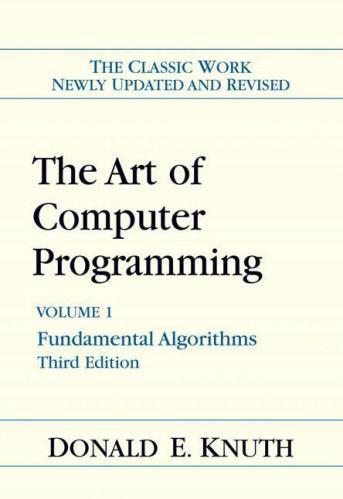
The Art of Computer Programming: Fundamental Algorithms
by
Donald E. Knuth
Published 1 Jan 1974
History and Bibliography Most of the fundamental techniques described in Section 1.4 have been developed independently by a number of different people, and the exact history of the ideas will probably never be known. An attempt has been made to record here the most important contributions to the history, and to put them in perspective. Subroutines were the first labor-saving devices invented for programmers. In the 19th century, Charles Babbage envisioned a library of routines for his Analytical Engine [see Charles Babbage and His Calculating Engines, edited by Philip and Emily Morrison (Dover, 1961), 56]; and we might say that his dream came true in 1944 when Grace M. Hopper wrote a subroutine for computing sin x on the Harvard Mark I calculator [see Mechanization of Thought Processes (London: Nat.
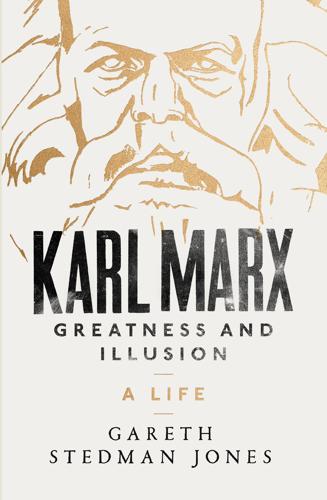
Karl Marx: Greatness and Illusion
by
Gareth Stedman Jones
Published 24 Aug 2016
The development of surplus labour implies that of surplus population.’15 With the development of modern industry and increasing investment in labour-saving machinery, the trend was accentuated in two ways. First, the productivity, and hence intensity, of exploitation of labourers was increased. As Karl’s reading of the works of Andrew Ure and Charles Babbage had revealed, increased productivity was not simply a matter of machine technology; it also involved the reorganization of the division of labour and of factory space such that work was no longer divided between workers, but between machines and their minders.16 Secondly, the numbers of labourers from whom surplus value could be extracted was diminishing; or to put it in the terms Karl employed, the ratio of ‘constant capital’ (fixed capital investment) to ‘variable capital’ (wage labour) increased.
…
‘Karl Marx to Friedrich Engels’, 2 April 1858, MECW, vol. 40, p. 298. 15. Karl Marx, Economic Manuscripts of 1857–58 (Grundrisse), MECW, vol. 28, p. 523. 16. Andrew Ure, The Philosophy of Manufactures: or, An Exposition of the Scientific, Moral and Commercial Economy of the Factory System of Great Britain, London, Charles Knight, 1835; Charles Babbage, On the Economy of Machinery and Manufactures, London, Charles Knight, 1832. 17. Marx, Economic Manuscripts of 1857–58, p. 131. 18. Ibid., p. 133. 19. Ibid., p. 134 (capitals in original text). 20. Ibid., vol. 28, p. 230. 21. Ibid., p. 334. 22. Adam Smith, An Inquiry into the Nature and Causes of the Wealth of Nations, ed.

Culture and Prosperity: The Truth About Markets - Why Some Nations Are Rich but Most Remain Poor
by
John Kay
Published 24 May 2004
This led to the university appointment that had previously eluded him, and thereafter Einstein worked in universities. Einstein was honored wherever he went. But he never became a rich man. Not rich even by the standards of a competent investment banker. Nor did he enjoy the perquisites-the personal staff, the waiting jet-that ease the life of the modern chief executive. 2 Charles Babbage built the first "analytical engine," or mechanical calculator, in the nineteenth century. But Babbage's machine was designed to do arithmetic. What turned a calculator into a computer Culture and Prosperity { 267} was the insight that a machine that can make long strings of calculations can do almost anything-write letters, check spelling, remember addresses, and turn on the central heating.
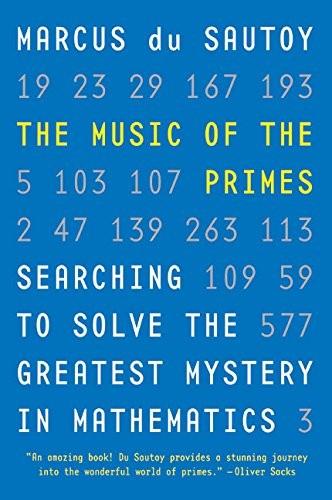
The Music of the Primes
by
Marcus Du Sautoy
Published 26 Apr 2004
This way he might be able to find a point at sea level off Riemann’s critical line and prove the Riemann Hypothesis false. Turing was not the first to contemplate the use of machinery to speed up tedious computations. The grandfather of the idea of computing machines was another Cambridge graduate, Charles Babbage. Babbage was an undergraduate at Trinity in 1810 and had been as fascinated as Turing with mechanical devices. In his autobiography he recalls the genesis of his idea for a machine to calculate the mathematical tables which were central to England’s abilities to navigate the sea so skilfully: One evening I was sitting in the rooms of the Analytical Society, at Cambridge, my head leaning forward on the Table in a kind of dreamy mood, with a Table of logarithms lying open before me.
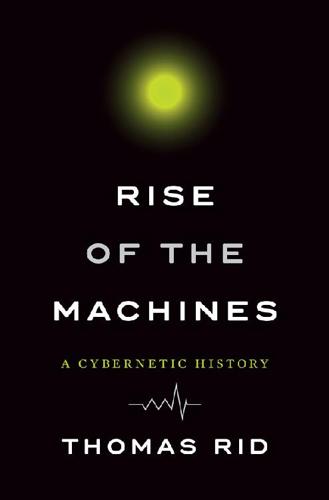
Rise of the Machines: A Cybernetic History
by
Thomas Rid
Published 27 Jun 2016
Bryan, “Headsight Television System Provides Remote Surveillance,” Electronics 34, no. 45 (November 10, 1961): 89. 66.Halacy, Cyborg, 11. 67.Ibid., 19. 68.David M. Rorvik, As Man Becomes Machine: The Evolution of the Cyborg (New York: Doubleday, 1970), 16. 69.Ibid., 13. 70.Gray, Cyborg Handbook, 36. 71.Ibid., 37. 72.William Aspray and Arthur Norberg, An Interview with J. C. R. Licklider (Cambridge, MA: Charles Babbage Institute, 1988), 13. 73.Chigusa Ishikawa Kita, “JCR Licklider’s Vision for the IPTO,” IEEE Annals of the History of Computing 25, no. 3 (2003): 66. 74.J. C. R. Licklider, “The Truly SAGE System, or, Toward a Man-Machine System for Thinking,” August 20, 1957, Licklider Papers, box 6, folder “1957,” MIT Libraries, Cambridge, MA.
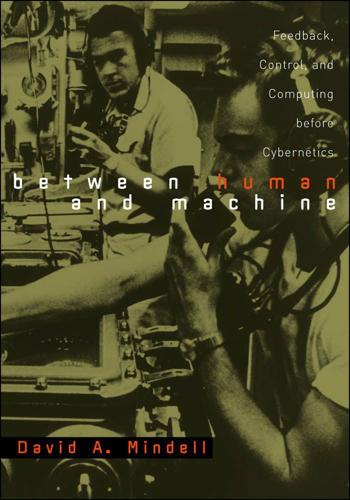
Between Human and Machine: Feedback, Control, and Computing Before Cybernetics
by
David A. Mindell
Published 10 Oct 2002
Electric motors drive the plotting tables, vertical boards contain the servomechanisms, and an automobile (Model T) radiator hangs above to cool the precision resistance instruments. Courtesy of MIT Museum. Fig. 5.4. Functional layout of the first product integraph. Again the idea was not new. Similar feedback formed the key difference between Charles Babbage’s Difference Engine and his more powerful Analytical Engine. Lord Kelvin realized that he could connect chains of integrators to solve differential equations by “compelling agreement between the function fed into the … machine and that given out by it.” 51 The MIT machine’s back coupling also paralleled the continuous cycle of correction Ford embodied in his rangekeepers, as they fed back the output of the calculation to make the system converge on a solution.
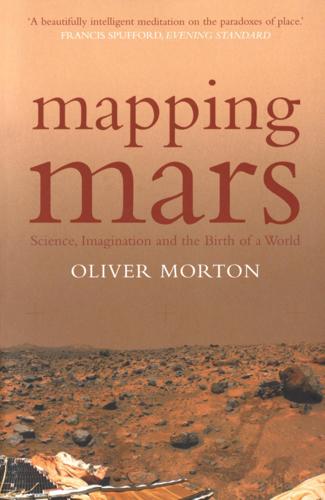
Mapping Mars: Science, Imagination and the Birth of a World
by
Oliver Morton
Published 15 Feb 2003
To make their case for the volcanic origin of the moon’s craters, Nasmyth and Carpenter created a scale model of what Vesuvius and the bay of Naples must look like from above and compared it with similar models of the lunar surface. Other lunar analogies on offer suggested that the dark expanses of the moon called “seas” were in fact made of ice, or that they were the dried beds of seas now vanished. Charles Babbage, the pioneer of mechanical computing, elaborated on this idea with the notion that craters in these dried seas were in fact coral atolls like those studied by Darwin. Gilbert rejected all these analogies, seeing the craters and larger basins and “seas” as the marks left by planetesimals. His idea was that once the Earth had been ringed by planetesimals—much as Saturn is ringed today—and that these had then coalesced into the moon; the last ones in had left the surface scarred.

Eloquent JavaScript: A Modern Introduction to Programming
by
Marijn Haverbeke
Published 15 Nov 2018
Rewrite countBs to make use of this new function. “On two occasions I have been asked, ‘Pray, Mr. Babbage, if you put into the machine wrong figures, will the right answers come out?’ . . . I am not able rightly to apprehend the kind of confusion of ideas that could provoke such a question.” — Charles Babbage, Passages from the Life of a Philosopher (1864) 4 DATA STRUCTURES: OBJECTS AND ARRAYS Numbers, Booleans, and strings are the atoms that data structures are built from. Many types of information require more than one atom, though. Objects allow us to group values—including other objects—to build more complex structures.

AI 2041: Ten Visions for Our Future
by
Kai-Fu Lee
and
Qiufan Chen
Published 13 Sep 2021
The deceivingly simple name of the exhibition was nowhere near a sufficient representation of the diversity and complexity it contained. Each room of the exhibit revealed new wonders, all with a connection to the curators’ expansive definition of what AI encompasses. There was Golem, a mythical creature in Jewish folklore; Doraemon, the well-loved Japanese anime hero; Charles Babbage’s preliminary computer science experiments; AlphaGo, the program designed to challenge humans’ fundamental intellect; Joy Buolamwini’s analysis on the gender bias of facial recognition software; and teamLab’s large-scale interactive digital art infused with Shinto philosophy and aesthetics. It was a magnificent and mind-expanding reminder of the power of interdisciplinary thinking.
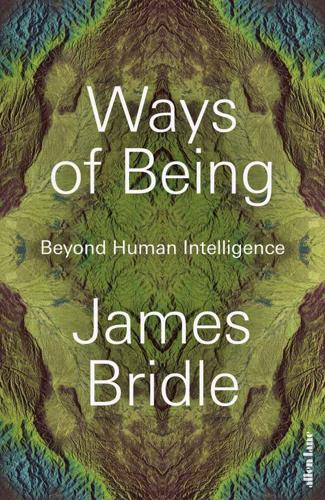
Ways of Being: Beyond Human Intelligence
by
James Bridle
Published 6 Apr 2022
These included the religious objection (machines have no soul, so cannot think); mathematical objections (per Gödel’s incompleteness theorems, no logical system can answer all possible questions); and physiological objections (the brain is not digital, but continuous, and true intelligence must share this quality). Turing provided counter-arguments to each of these objections, many of which have also proved prescient. One of the most famous objections was posited by the very first computer programmer, Ada Lovelace, when she was working on Charles Babbage’s early computer design, the Analytical Engine, in the middle of the nineteenth century. Lovelace wrote that the Engine ‘has no pretensions to originate anything. It can do whatever we know how to order it to perform.’ Computers only do what you tell them to do, thus they can never be described as intelligent.
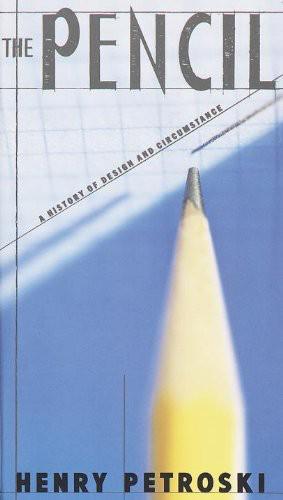
The Pencil: A History of Design and Circumstance
by
Henry Petroski
Published 2 Jan 1990
.… Each person … might be considered as making four thousand eight hundred pins in a day. But if they had all wrought separately and independently, and without any of them being educated to this particular business, they certainly could not each of them have made twenty, perhaps not one pin in a day. Charles Babbage, known as the father of the modern computer because of his pioneering work on calculating engines, also used pin manufacturing to explain the benefits of the division of labor, “perhaps the most important principle on which the economy of manufacture depends.” For “pin” we can read “pencil,” of course, and the Nobel economist Milton Friedman has commented that in the 1980s the pencil provides a neat lesson in free-market economics: the “magic of the price system” gets thousands of people to cooperate so that we may buy a pencil “for a trifling sum.”

An Empire of Wealth: Rise of American Economy Power 1607-2000
by
John Steele Gordon
Published 12 Oct 2009
In the middle of the nineteenth century a mathematician named William Shanks calculated the irrational number pi out to 707 decimal places, an astonishing intellectual feat. It would be more than a hundred years before it was discovered that he made an error at digit 527 and the last 180 digits of his calculation, therefore, are wrong. The idea of calculating by machine is a very old one. An Englishman named Charles Babbage, after correcting astronomical tables, lamented as early as the 1820s that “I wish to God these calculations had been executed by steam!” He later began to build, from finely machined brass parts, a hand-powered calculating machine, but never finished its construction. He also designed an analytical machine that was a mechanical precursor of a true computer because it was programmable.
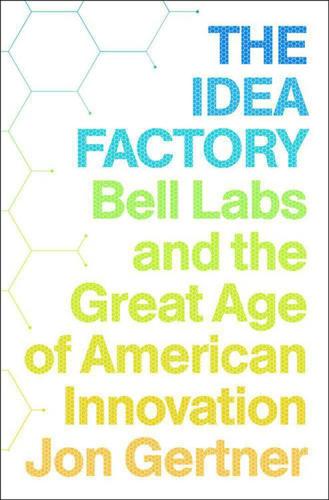
The Idea Factory: Bell Labs and the Great Age of American Innovation
by
Jon Gertner
Published 15 Mar 2012
Chapin Cutler (Institute of Electrical and Electronics Engineers [IEEE]) Karl Darrow (AIP) James Fisk (AIP) Thornton Fry (AT&T) Cal Fuller (Chemical Heritage) William Golden Eugene Gordon (IEEE) Richard Hamming (AT&T) Conyers Herring (AIP) Alan Holden (AIP) Charles Kao (AIP) Katherine Kelly (AIP) Jack Kilby (Charles Babbage Institute) Robert Lucky (IEEE) John Mayo (IEEE) Stanley Morgan (AIP) Foster Nix (AIP) Russell Ohl (AIP) Barney Oliver (Hewlett-Packard) Eugene O’Neill (IEEE) Gerald Pearson (AIP) John Pierce (Caltech) John Pierce (AT&T) John Pierce (IEEE) Ian Ross (IEEE) Arthur Schawlow (Stanford University) Claude Shannon (IEEE) William Shockley (AIP) William Shockley (Harriet Zuckerman) Gordon Teal (AIP) Charles Townes (AIP) Addison White (AIP) Dean Woolridge (AIP) Selected Bibliography Adams, Stephen, and Orville Bustler.

Algorithms to Live By: The Computer Science of Human Decisions
by
Brian Christian
and
Tom Griffiths
Published 4 Apr 2016
first code ever written for a “stored program” computer: “Written,” here, means literally written out by hand: when the renowned mathematician John von Neumann jotted down the sorting program in 1945, the computer it was meant for was still several years away from completion. Although computer programs in general date back to Ada Lovelace’s writing in 1843 on the proposed “Analytical Engine” of Charles Babbage, von Neumann’s program was the first one designed to be stored in the memory of the computer itself; earlier computing machines were meant to be guided by punch cards fed into them, or wired for specific calculations. See Knuth, “Von Neumann’s First Computer Program.” outsort IBM’s dedicated card-sorting machines: Ibid.

More: The 10,000-Year Rise of the World Economy
by
Philip Coggan
Published 6 Feb 2020
Chips with everything Some innovations are “general purpose technologies” that can be adapted to a wide range of uses: steam engines, the internal combustion exchange and electric power are three examples. In the modern era, the most striking example has been the computer. The computer’s origins can be traced back to Charles Babbage, one of a great tradition of Victorian gentleman inventors. In the early 19th century, Babbage discovered that astronomical tables were riddled with errors. These errors tended to persist as scholars copied the work of their predecessors. So Babbage envisaged a machine, called the difference engine, which could perform the calculations without errors.

Coders: The Making of a New Tribe and the Remaking of the World
by
Clive Thompson
Published 26 Mar 2019
Nearly every other technical field has had increasing numbers of women arrive. Programming is the one field where things went backward, and women were actually chased away. Why? It’s often noted that the first computer programmer ever was a woman: Ada Lovelace. As a young mathematician in Victorian England, she met Charles Babbage, the inventor who was trying to create an Analytical Engine. The Engine was a steampunk precursor to the modern computer: Though designed to be made of metal gears, it could execute loops and store data in memory. More even than Babbage, Lovelace grasped the enormous potential of computers. She understood that because they could modify their own instructions and memory, they could be far more than rote calculators.
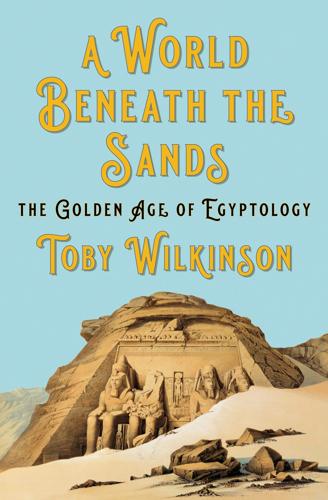
A World Beneath the Sands: The Golden Age of Egyptology
by
Toby Wilkinson
Published 19 Oct 2020
When he had left Egypt, back in 1833, he had told his friend Hay that he planned to return within two years. But he was soon diverted by other interests. He spent much of his time visiting his wide circle of well-read and well-heeled friends, painting refined watercolours of their country houses, indulging his love of conversation and debate. He corresponded with the scientist Charles Babbage, and with Byron’s daughter, the mathematician Ada Lovelace. He joined the Oriental Club and the Athenaeum; the latter was housed in a new building designed by James Burton’s younger brother, Decimus, and hosted the Cabinet for dinner most Wednesdays. Wilkinson’s two clubs, along with the Royal Society and the Royal Society of Literature – he had been elected a fellow of both – and the Royal Geographical Society – where he became a member of the council – provided intellectual stimulation aplenty.

Lifespan: Why We Age—and Why We Don't Have To
by
David A. Sinclair
and
Matthew D. Laplante
Published 9 Sep 2019
More simply known as the Royal Society, the world’s oldest national scientific organization was established in 1660 to promote and disseminate “new science” by big thinkers of the day such as Sir Francis Bacon, the Enlightenment’s promulgator of “the prolongation of life.”1 Befitting its rich scientific history, the society has held annual scientific events ever since. Highlights have included lectures by Sir Isaac Newton on gravity, Charles Babbage on his mechanical computer, and Sir Joseph Banks, who had just arrived back from Australia with a bounty of more than a thousand preserved plants that were all new to science. Even today, in a post-Enlightenment world, most of the events at the society are fascinating if not world changing. But the two-day meeting that commenced in the spring of 2010 was nothing short of that, for gathered together on that Monday and Tuesday was a motley group of researchers who were meeting to discuss an important “new science.”
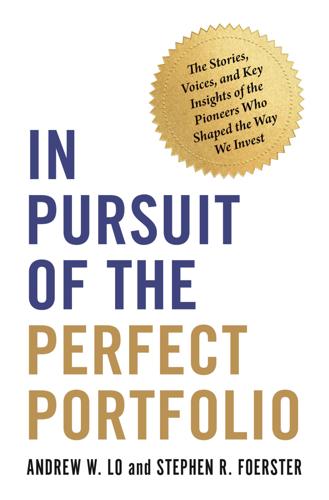
In Pursuit of the Perfect Portfolio: The Stories, Voices, and Key Insights of the Pioneers Who Shaped the Way We Invest
by
Andrew W. Lo
and
Stephen R. Foerster
Published 16 Aug 2021
CNN Money, May 7, https://money.com/how-much-does-your-money-manager-cost-you/. Woolley, Scott. 2008. “His Own Man.” Forbes 181, no. 1, 48–49, https://www.forbes.com/forbes/2008/0107/048.html?sh=e278789e778c. Yost, Jeffrey. 2002. “Oral History Interview with Harry M. Markowitz.” Conducted in San Diego, California, on March 18, 2002, Charles Babbage Institute, Center for the History of Information Technology, University of Minnesota, Minneapolis, https://hdl.handle.net/11299/107467. Zweig, Jason. 2007. “The Man Who Explained It All.” Money Magazine, http://money.cnn.com/2007/05/21/pf/sharpe.moneymag/index.htm. ________. 2016. “Wall Street’s Wisest Man.”
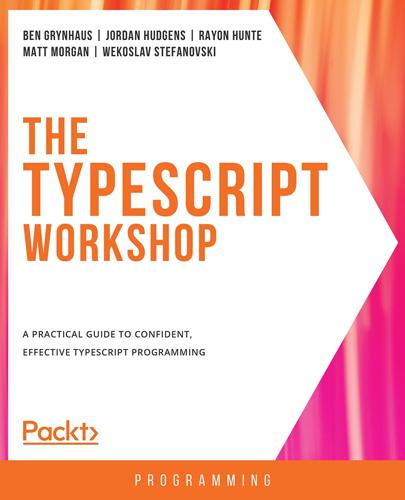
The TypeScript Workshop: A Practical Guide to Confident, Effective TypeScript Programming
by
Ben Grynhaus
,
Jordan Hudgens
,
Rayon Hunte
,
Matthew Thomas Morgan
and
Wekoslav Stefanovski
Published 28 Jul 2021
We can also define a function that will take two strings, and return a new object that fits the Person interface: function makePerson (name: string, surname: string): Person { const result = { firstName: name, lastName: surname } return result; } const babbage = makePerson("Charles", "Babbage"); showFullName(babbage); One important thing that we need to point out is that, unlike in other languages, the interfaces in TypeScript are structural and not nominal. What that means is that if we have a certain object that fulfills the "rules" of the interface, that object can be considered to be a value of that interface.
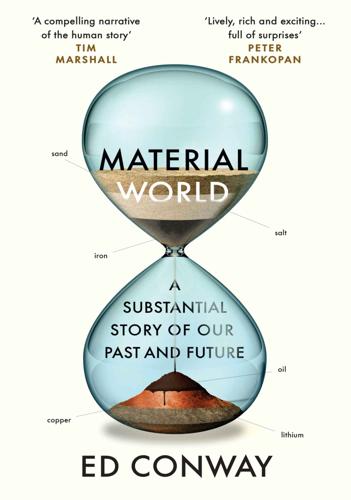
Material World: A Substantial Story of Our Past and Future
by
Ed Conway
Published 15 Jun 2023
But often it takes decades or centuries of material advances before ideas can manifest as working contraptions. That was the case with Leonardo da Vinci’s sketches of a helicopter, which couldn’t become a physical reality until the materials caught up, and it was the case with computers, which were conceptualised by Ada Lovelace and Charles Babbage more than a century before the invention of the transistor. There were computers with glass vacuum tubes playing the role of switches from the 1940s, but a solid state switch had long been the goal. Far more efficient, far more reliable, far smaller, with no moving parts, save for the electrons buzzing silently through the switches – the transistor was the material advance that birthed the modern age.

The Rough Guide To Devon & Cornwall
by
Rough Guides
Published 29 Apr 2024
One of the best preserved of these buildings now holds the Elizabethan House Museum, packed with an entertaining assortment of domestic objects and furniture that reveal how wealthy clothiers lived at the peak of the town’s success. Rooms in the four-storey building include an Elizabethan “Forehall”, a Tudor kitchen and an exhibition devoted to local mathematician Charles Babbage (1791–1871), whose “analytical engine”, programmed by punched cards, was the forerunner of the computer. His collaborator was Ada, Countess of Lovelace (Lord Byron’s daughter), who described the machine as suitable for “developing and tabulating any function whatever”, and even mooted its potential for creating computer-generated music.
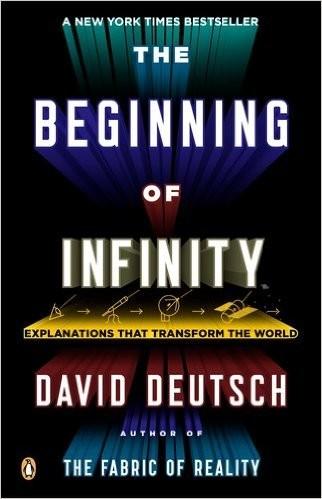
The Beginning of Infinity: Explanations That Transform the World
by
David Deutsch
Published 30 Jun 2011
Instead of having to control manually each row of stitches in each individual bolt of patterned silk, one could program an arbitrary pattern on punched cards which would instruct the machine to weave that pattern any number of times. The most momentous such technology is that of computers, on which an increasing proportion of all technology now depends, and which also has deep theoretical and philosophical significance. The jump to computational universality should have happened in the 1820s, when the mathematician Charles Babbage designed a device that he called the Difference Engine – a mechanical calculator which represented decimal digits by cogs, each of which could click into one of ten positions. His original purpose was parochial: to automate the production of tables of mathematical functions such as logarithms and cosines, which were heavily used in navigation and engineering.

The Technology Trap: Capital, Labor, and Power in the Age of Automation
by
Carl Benedikt Frey
Published 17 Jun 2019
.… [N]owhere do we find a more shameful squandering of human labour-power for the most despicable purposes than in England, the land of machinery.”29 Overall, machinery critics of the Victorian Age raised more questions than they answered. Yet they prompted defenders of mechanization—including Charles Babbage, Andrew Ure, and Edward Baines—to make a case for it. Babbage’s On the Economy of Machinery and Manufactures presents machines as a helpful complement to the worker’s labor, suggesting that “various operations occur in the arts in which an assistance of an additional hand would be a great convenience to the workman, and in these cases tools or machines of the simplest structure come to our aid.… The discovery of the expansive power of steam [has] already added to the population of this small island, millions of hands.”30 And in addition to making workers more productive, Ure declared that it was only with the spread of machines that new and better-paying jobs could be created, allowing ordinary people to climb the economic ladder: Instead of repining as they have done at the prosperity of their employers … good workmen would have advanced their condition to that of overlookers, managers, and partners in new mills, and have increased at the same time the demand for their companions’ labour in the market.
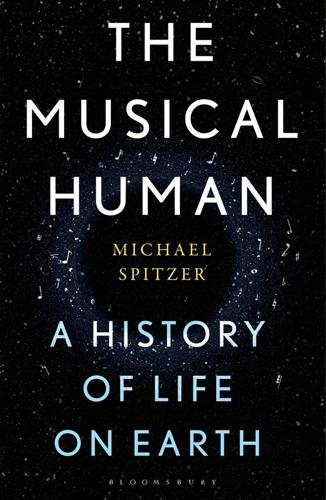
The Musical Human: A History of Life on Earth
by
Michael Spitzer
Published 31 Mar 2021
It would threaten the existence of human control in such areas as art, literature, and music.’36 The shockwaves of AlphaGo’s destruction of world Go champion Fan Hui continue to reverberate. Ada Lovelace, the nineteenth-century mathematician and the mother of computer programming, had predicted that the Analytical Engine (as Charles Babbage’s early computer was called) might act upon other things besides number … supposing, for instance, that the fundamental relations of pitched sounds in the science of harmony and of musical composition were susceptible of such expression and adaptations, the engine might compose elaborate and scientific pieces of music of any degree of complexity or extent.37 Nevertheless, Lovelace cautioned that the music’s creativity or originality would come from the programmer, not the machine.

The Rough Guide to Devon & Cornwall
by
Robert Andrews
One of the best preserved of these buildings now holds the Elizabethan House Museum, packed with an entertaining assortment of domestic objects and furniture that reveal how wealthy clothiers lived at the peak of the town’s success. Rooms in the four-storey building include an Elizabethan “Forehall”, a Tudor kitchen and an exhibition devoted to local mathematician Charles Babbage (1791–1871), whose “analytical engine”, programmed by punched cards, was the forerunner of the computer. His collaborator was Ada, Countess of Lovelace (Lord Byron’s daughter), who described the machine as suitable for “developing and tabulating any function whatever”, and even mooted its potential for creating computer-generated music.

The Singularity Is Nearer: When We Merge with AI
by
Ray Kurzweil
Published 25 Jun 2024
For consumer-scale machines, only devices in mass production for retail sale were considered for inclusion—individually customized machines or chimeric “homebrew” computers made from disparate retail components would muddy the broader analysis. Machines that were designed but not built, such as Charles Babbage’s Analytical Engine, and machines that were built but were not reliably functional, such as Konrad Zuse’s Z1, are not included. Likewise, this chart ignores some highly specialized devices like digital signal processors, which are technically capable of performing a given number of digital operations per second but are not widely used as general-purpose CPUs.
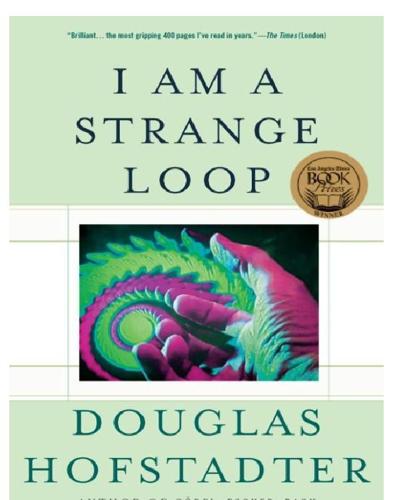
I Am a Strange Loop
by
Douglas R. Hofstadter
Published 21 Feb 2011
But I also contain myriad traces of thousands of individuals whom I never could have met and interacted with, such as W. C. Fields, Galileo Galilei, Harry Houdini, Paul Klee, Clément Marot, John Baskerville, Fats Waller, Anne Frank, Holden Caulfield, Captain Nemo, Claude Monet, Leonhard Euler, Dante Alighieri, Alexander Pushkin, Eugene Onegin, James Clerk Maxwell, Samuel Pickwick, Esq., Charles Babbage, Archimedes, and Charlie Brown. Some of the people in the latter list, of course, are fictional while others hover between the fictional and the real, but that is of no more import than the fact that in my mind, they are all merely virtual beings. What matters is neither the fictional/nonfictional nor the virtual/nonvirtual dimension, but the duration and depth of an individual’s interaction with my interiority.
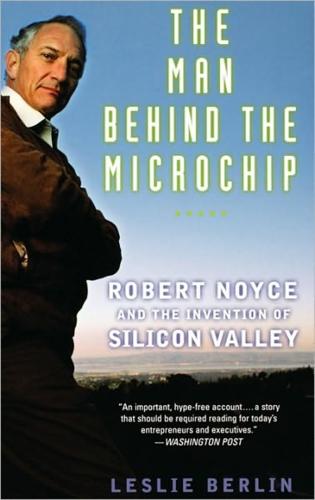
The Man Behind the Microchip: Robert Noyce and the Invention of Silicon Valley
by
Leslie Berlin
Published 9 Jun 2005
My parents, Steve Berlin and Vera Berlin, and my sisters Jessica and Loren have been endlessly inquisitive and supportive. The Life Member’s Fellowship in Electrical History from the IEEE and a Franklin Research Grant from the American Philosophical Society supported the research for The Man Behind the Microchip; grants from the Andrew P. Mellon Foundation, the Charles Babbage Institute, and Stanford University funded earlier research for my doctoral dissertation, some of which has been incorporated into this book. A special thanks to the History Department at Stanford University, where I have worked for the past two years as a visiting scholar in the Program in the History and Philosophy of Science and Technology.

Tesla: Inventor of the Electrical Age
by
W. Bernard Carlson
Published 11 May 2013
Let me emphasize that there is no evidence that Tesla knew about Arago’s wheel and used it in his thinking about motors, but this device can assist us in visualizing what Tesla accomplished in Budapest.43 In 1824, the French scientist François Arago became fascinated by the curious behavior of a compass needle when one spun a copper disk underneath it. If the copper disk was spun quickly enough, the compass needle not only stopped pointing north but began to rotate as well (Figure 2.7). Shortly after Arago reported his discovery, Charles Babbage and Charles Herschel in England demonstrated the reverse phenomenon: that if one rotated a horseshoe magnet underneath a pivoted copper disk, the disk would spin. Natural philosophers were puzzled by Arago’s wheel and wondered about the relationship between magnetism and motion. FIGURE 2.7.
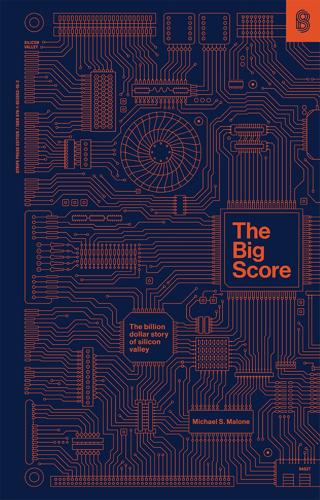
The Big Score
by
Michael S. Malone
Published 20 Jul 2021
Scientists needed a means to rapidly manipulate the multi-digit numbers coming from their increasingly sophisticated measurement instruments, businessmen needed to monitor multinational operations, currency exchange rates, and swelling inventories, and census takers had needed to track and cross-reference populations. A remarkable answer, the Difference Engine, came in 1824 from a mathematician, Charles Babbage. It was constructed in an attempt to help the British Navy prepare nautical maps. Like a modern computer, the Difference Engine had two main subsystems: a central processing unit, consisting of wheels and gears, that did the arithmetic operations; and, most remarkably, a memory unit of punched cards like those the Jacquard mills had used for 20 years to control looms.

Empire of AI: Dreams and Nightmares in Sam Altman's OpenAI
by
Karen Hao
Published 19 May 2025
As they had done with GPT-2, they trained iteratively larger models in the ascension to a full ten-thousand-GPU model with 175 billion parameters, naming them alphabetically after scientists: ada for the smallest model, referring to English mathematician Ada Lovelace, widely credited as the first computer programmer; babbage for English inventor Charles Babbage, who conceived the first digital computer for which Lovelace would propose her program; curie for Polish French physicist and chemist Marie Curie, the first woman to win the Nobel Prize and win it twice; and davinci for Leonardo. The exercise was both to continue validating whether scaling laws still held at fundamentally larger scale and, more practically, to work gradually through the hardware and data challenges at each new level.

GCHQ
by
Richard Aldrich
Published 10 Jun 2010
Kaihla, ‘The Technology Secrets of Cocaine Inc.’, Business2.com, July 2002, http://www.business2.com/articles/mag/print/0,1643,41206,FF.html 3 Cobb, ‘Thinking About the Unthinkable’, pp.1–2 4 Insight Team, ‘Secret DTI Inquiry Into Cyber Terror’, Sunday Times, 09.06.96. 5 Robertson, ‘Recent Reform of Intelligence in the UK’, pp.148–9 6 Johnson, American Cryptology, Vol.3, pp.233–4, 236. 7 ‘Quadripartite mtg London’, Odom (NSA) daily log, 06.06.85, File 5, Box 25, Odom papers, LC 8 Levy, Crypto, pp.26–8; Singh, The Code Book, pp.256–9. 9 House of Commons, Select Committee on Trade and Industry, Examination of Witnesses (Questions 72–82), Sir Brian Tovey, 10.11.98. 10 NPL Report CTU 1, Davies, Price and Parkin, ‘An Evaluation of Public Key Cryptosystems’, 03.79, DSIR32/295. 11 Singh, The Code Book, pp.286–9; D. Campbell, ‘Great Idea – Hide It’, Guardian, 06.05.99. 12 OH–375, Interview with Martin Hellman, 22.11.04, Charles Babbage Institute Center for the History of Information Technology, University of Minnesota, pp.52–3. 13 Urban, UK Eyes Alpha, pp.251–3. 14 Singh, The Code Book, pp.279–92. 15 Seymour M. Hersh, ‘The Intelligence Gap: How the Digital Age Left Our Spies out in the Cold’, New Yorker, 06.12.99, pp.58–76. 16 Lustgarten and Leigh, In From the Cold, pp.393–4. 17 Report by Sir Michael Quinlan, ‘Review of Intelligence Requirements and Resources, Part 1: Processes for Handling’, 23.11.93.

Coders at Work
by
Peter Seibel
Published 22 Jun 2009
And most of all, thanks to the wife and kid themselves: Lily and Amelia, while I may occasionally need some time to myself to do the work, without you guys in my life, it wouldn't be worth doing. I love you. Introduction Leaving aside the work of Ada Lovelace—the 19th century countess who devised algorithms for Charles Babbage's never-completed Analytical Engine—computer programming has existed as a human endeavor for less than one human lifetime: it has been only 68 years since Konrad Zuse unveiled his Z3 electro-mechanical computer in 1941, the first working general-purpose computer. And it's been only 64 years since six women—Kay Antonelli, Jean Bartik, Betty Holberton, Marlyn Meltzer, Frances Spence, and Ruth Teitelbaum—were pulled from the ranks of the U.S.

The Singularity Is Near: When Humans Transcend Biology
by
Ray Kurzweil
Published 14 Jul 2005
Another important these by Wolfram lies in his thorough treatment of computation as a simple and ubiquitous phenomenon. Of course, we've known for more than a century that computation is inherently simple: we can build any possible level of complexity from a foundation of the simplest possible manipulations of information. For example, Charles Babbage's late-nineteenth-century mechanical computer (which never ran) provided only a handful of operation codes, yet provided (within its memory capacity and speed) the same kinds of transformations that modern computers do. The complexity of Babbage's invention stemmed only from the details of its design, which indeed proved too difficult for Babbage to implement using the technology available to him.
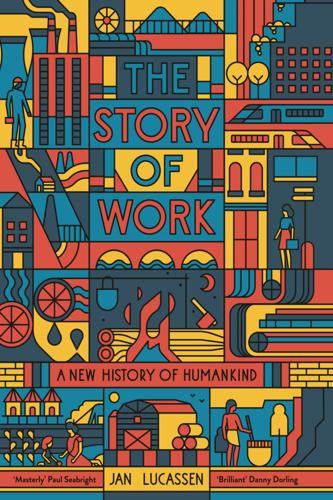
The Story of Work: A New History of Humankind
by
Jan Lucassen
Published 26 Jul 2021
In the history of mechanization, much attention has been paid to famous inventors, such as Watt, Edison and Marconi, but it is all too easy to forget how the state often led the way in innovation, in particular through the army, the navy and the big ministries, and sometimes state-owned companies such as the mint, naval yards or powder factories. Not only the tools and their motive power but also the worker himself became the object of serious study, especially in the US.121 One of the first to undertake such a study was the Englishman Charles Babbage (the ‘father’ of the computer), but the most famous was undoubtedly the next generation’s Frederick Winslow Taylor, an American who systematically studied the time required for industrial activities, culminating in ‘scientific management’, ergonomics and ‘human factors’ techniques, and with respect to the economy, ‘labour economics’, ‘labour (industrial) relations’ or ‘manpower economics’.

Global Catastrophic Risks
by
Nick Bostrom
and
Milan M. Cirkovic
Published 2 Jul 2008
Given a different empirical belief about the actual real world consequences of a communist system, the decision may undergo a corresponding change. We would expect a true A I , an Artificial General Intelligence, to be capable of changing its empirical beliefs (or its probabilistic world model, etc.). If somehow Charles Babbage had lived before Nicolaus Copernicus, somehow computers had been invented before telescopes, and somehow the programmers of that day and age successfully created an Artificial General Intelligence, it would not follow that the AI would believe forever after that the Sun orbited the Earth. The AI might transcend the factual error of its programmers, provided that the programmers understood inference rather better than they understood astronomy.
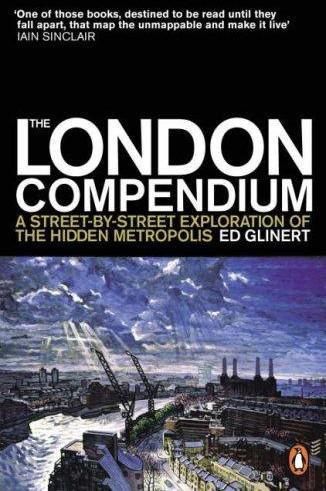
The London Compendium
by
Ed Glinert
Published 30 Jun 2004
St James’s Square The grand centrepiece of St James’s was built from 1667 to 1677 as the ‘Place Royale’ by Henry Jermyn, Earl of St Albans, ‘for the conveniency of the Nobility and Gentry who were to attend upon his Majestie’s Person, and in Parliament’, and it was later lined with some of the finest Georgian town houses in London, attracting leading politicians such as William Pitt the Elder and William Gladstone. The square is no longer residential and is dominated by institutions and businesses. north side No. 12 Built by Thomas Cubitt in the 1830s and later home to Lord Byron’s daughter, Ada, Countess of Lovelace, who worked with Charles Babbage on his nineteenth-century forerunner of the computer. Chatham House, Nos. 9–10 A 1736 building which has been home to three prime ministers – William Pitt the Elder (Lord Chatham), the Earl of Derby and William Gladstone – and is now the headquarters of the Royal Institute of International Affairs, a think-tank founded in 1920 funded by the Rothschild family and various South African mining houses, which in the first few decades after the Second World War was a major influence on British foreign policy.

Surfaces and Essences
by
Douglas Hofstadter
and
Emmanuel Sander
Published 10 Sep 2012
Indeed, bilingual data bases containing many millions of corresponding phrases are thoroughly scoured in ultra-rapid fashion in order to allow the computer to find “the best” (in some sense) alignments that will yield the “decoding” into Language B of a phrase, sentence, or any passage originally written in Language A. We might test the efficacy of this strategy by seeing how the world’s most readily available (and perhaps also its most sophisticated) machine-translation “engine” performs on our little Lincolnian phrase “Four score and seven years ago”. (The term “engine” is a friendly tip of the hat to Charles Babbage, the great nineteenth-century British computing pioneer, who invented an important predecessor of today’s computers, which he called the “Analytical Engine”.) We asked Google’s engine to translate this phrase into French, and in but milliseconds it shot back at us the words “Quatre points et il ya sept ans”.
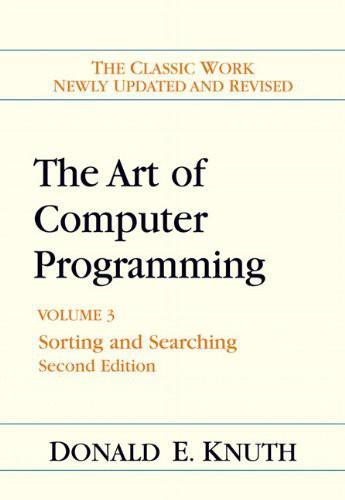
The Art of Computer Programming: Sorting and Searching
by
Donald Ervin Knuth
Published 15 Jan 1998
Several other types of interesting theoretical questions related to optimum sorting appear in the exercises for Section 5.3.4, and in the discussion of external sorting (Sections 5.4.4, 5.4.8, and 5.4.9). As soon as an Analytical Engine exists, it will necessarily guide the future course of the science. Whenever any result is sought by its aid, the question will then arise — By what course of calculation can these results be arrived at by the machine in the shortest time? — CHARLES BABBAGE A864) 5.3.1. Minimum-Comparison Sorting The minimum number of key comparisons needed to sort n elements is obviously zero, because we have seen radix methods that do no comparisons at all. In fact, it is possible to write MIX programs that are able to sort, although they contain no conditional jump instructions at all!
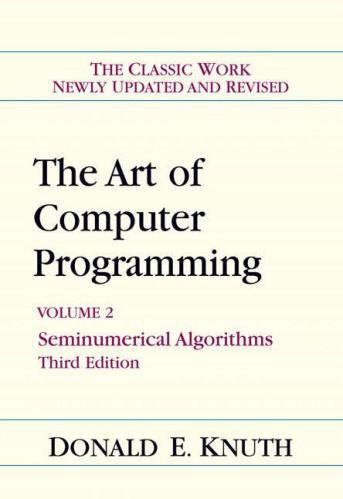
The Art of Computer Programming
by
Donald Ervin Knuth
Published 15 Jan 2001
The book History of Binary and Other Nondecimal Numeration by Anton Glaser (Los Angeles: Tomash, 1981) contains an informative and nearly complete discussion of the development of binary notation, including English translations of many of the works cited above [see Historia Math. 10 A983), 236-243]. Much of the recent history of number systems is connected with the develop- development of calculating machines. Charles Babbage's notebooks for 1838 show that he considered using nondecimal numbers in his Analytical Engine [see M. V. Wilkes, Historia Math. 4 A977), 421]. Increased interest in mechanical devices for arithmetic, especially for multiplication, led several people in the 1930s to consider the binary system for this purpose.

Frommer's England 2011: With Wales
by
Darwin Porter
and
Danforth Prince
Published 2 Jan 2010
Closed Oct–Mar. 11 DEVON: RED CLIFFS, MOORS & PLYMOUTH PILGRIMS exotic butterflies and moths from around the world, beautiful birds in landscaped gardens, and three different species of otter, along with native British otter. Elizabethan Museum This 16th-century home of a wealthy merchant houses furniture, costumes, documents, and farm implements of the Elizabethan age. One room is devoted to local resident Charles Babbage (1792–1871), a mathematician and inventor. He invented a calculating machine whose memory capacity categorized it as an early version of the computer. His other inventions included the ophthalmoscope, a speedometer, and the cowcatchers later used to nudge cows off the tracks of railways around the world.

Rationality: From AI to Zombies
by
Eliezer Yudkowsky
Published 11 Mar 2015
“Nemesius, the Bishop of Emesia, has previously argued that brain tissue is too earthy to act as an intermediary between the body and soul, and so the mental faculties are located in the ventricles of the brain. However, if this is correct, there is no reason why this organ should turn out to have an immensely complicated internal composition. “Charles Babbage has independently suggested that many small mechanical devices could be collected into an ‘Analytical Engine,’ capable of performing activities, such as arithmetic, which are widely believed to require thought. The work of Luigi Galvani and Hermann von Helmholtz suggests that the activities of neurons are electrochemical in nature, rather than mechanical pressures as previously believed.